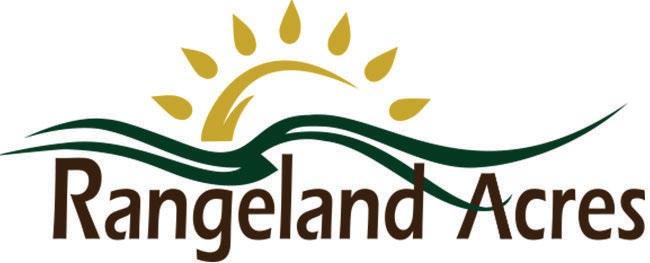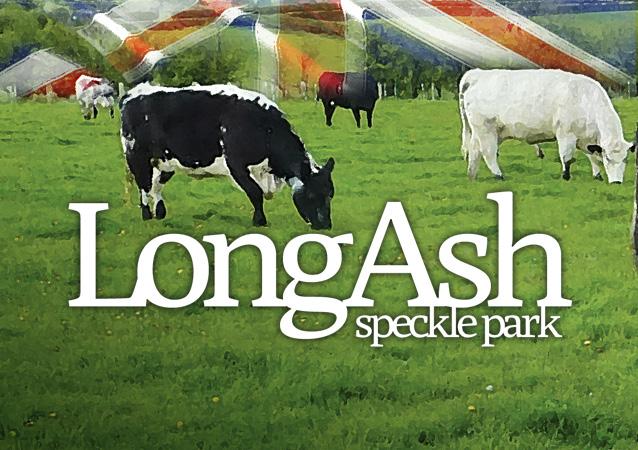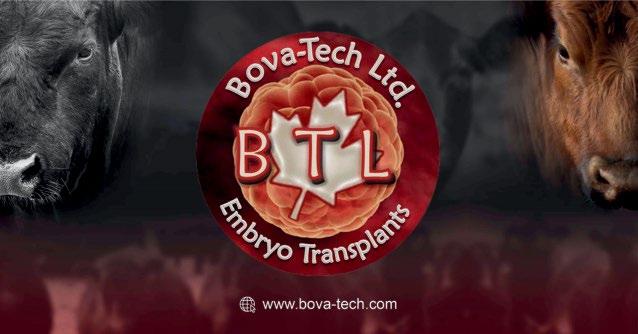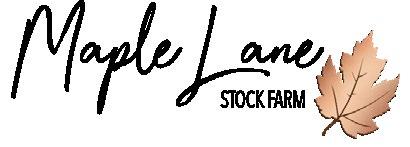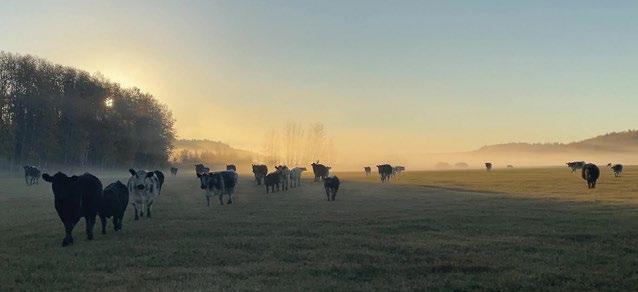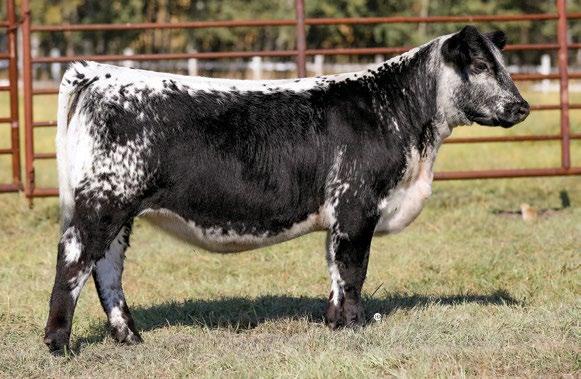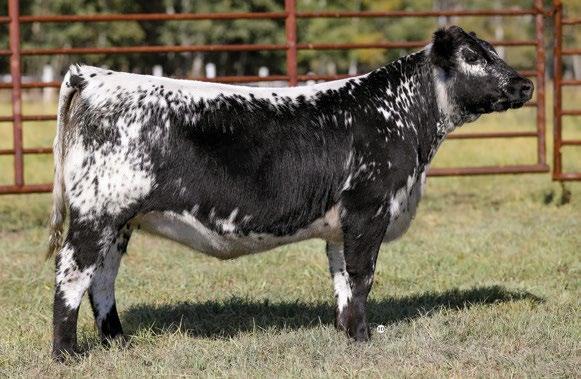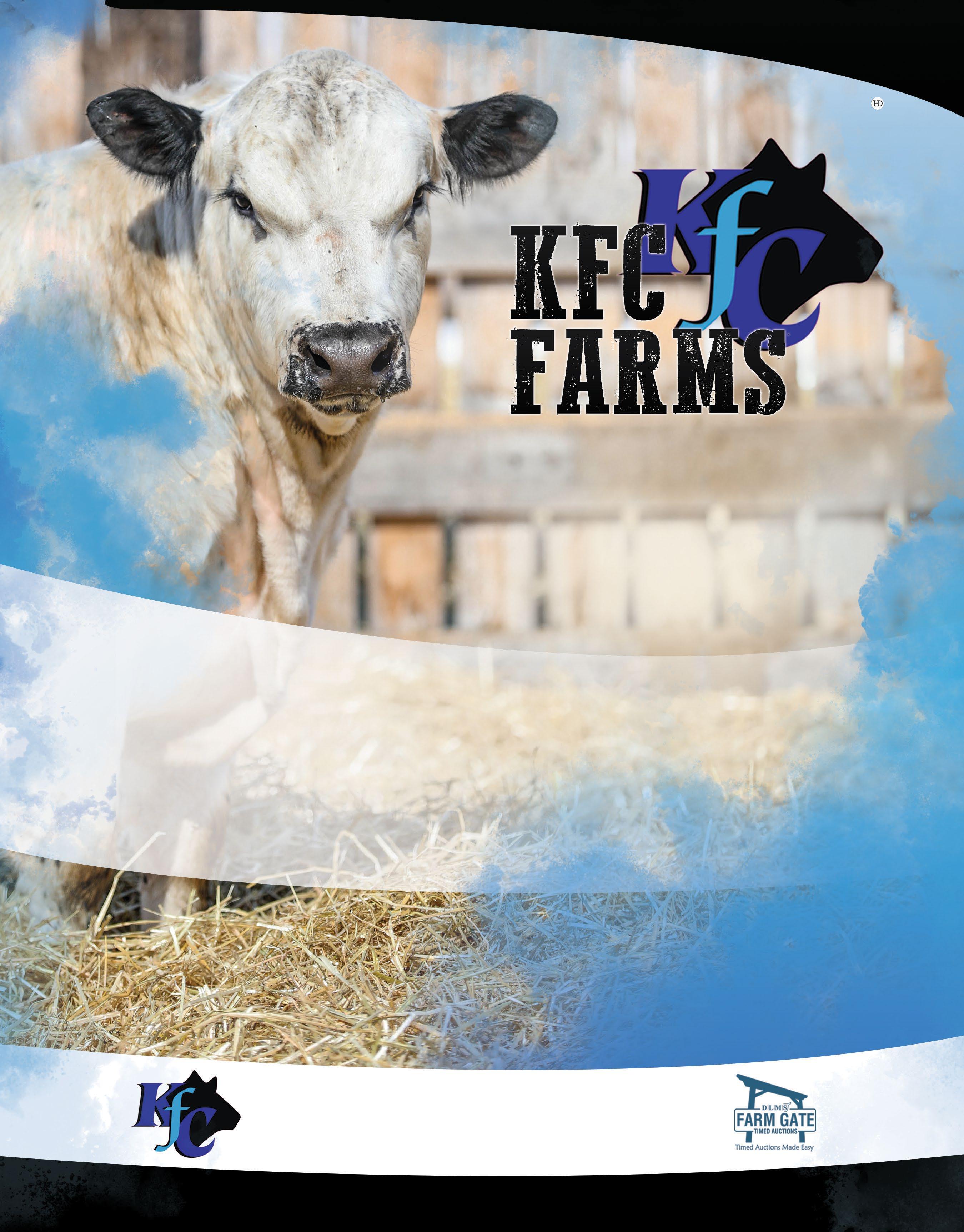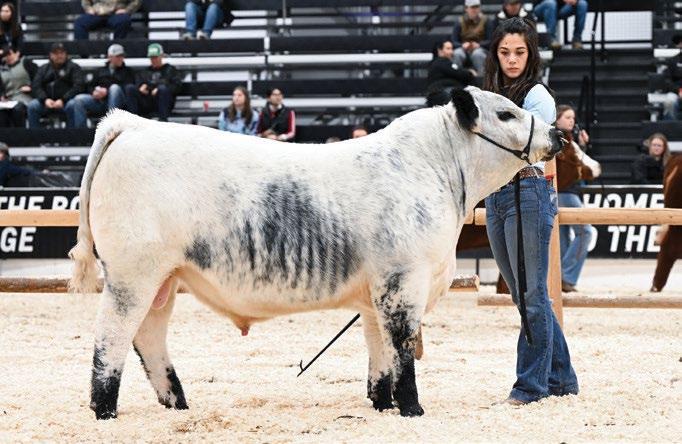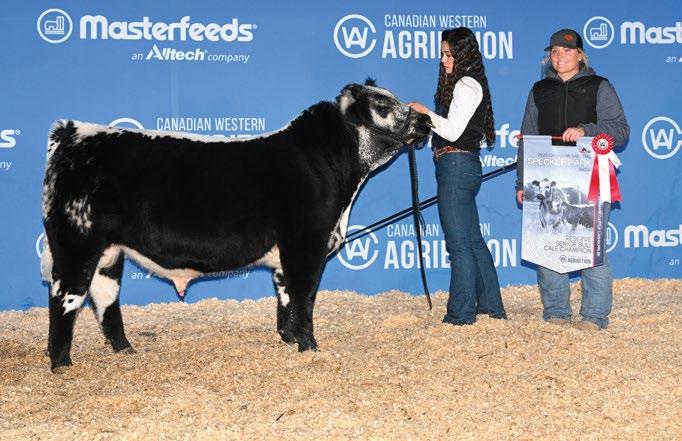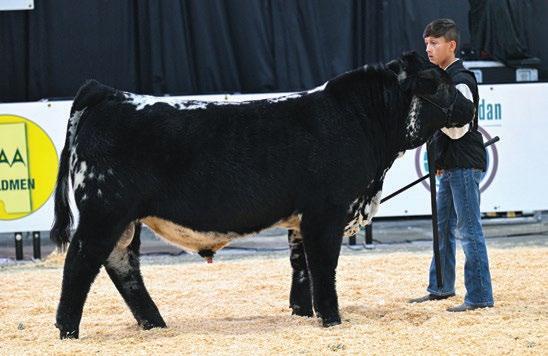






SPOTLIGHT ON SPECKLE PARK TEAM
EDITOR & PUBLICATION MANAGER
Cayley Boychuk-Brown
CREATIVE DIRECTOR
Keltey Whelan
SPOTLIGHT ON SPECKLE PARK PUBLICATION SCHEDULE
SPRING DEADLINE PUBLISHED Feb 15 March 1
FALL DEADLINE PUBLISHED Sept 15 Oct 1
AD
Full Page 8.5” x 11” plus ¼” bleed
$1,150
Half Page 7.5” x 4.7” no bleed
$600
Quarter Page 3.6” x 4.9”
$425
Business Card 2.125” x 1.5”
$150
Premium pages will be priced upon request and sold first come, first served. If an ad is placed in both the Spring & Fall editions, a 15% discount will be applied to the second ad rate. For more information and to book space, contact Cayley at info@canadianspecklepark.ca


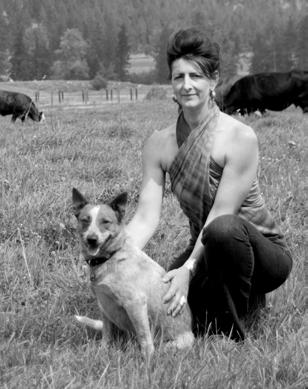
Barry Yaremcio holds a master’s degree in animal science (nutrition) and a bachelor’s degree in agriculture (animal science). He worked in extension for Alberta Agriculture for several years and now is an independent ruminant nutritionist and production management consultant. Reach him through beefconsultant.com
Mona Howe is the owner and operator of Mo Angus, a ranch in Southeastern Alberta raising purebred and commercial Angus cattle, Quarter horses and Border Collie and Corgi dogs. She began freelance writing in 2018 in her spare time as an opportunity to share her passion for all aspects of the livestock industry.
Catherine is an avid writer with a lifelong passion for cows. Her day-to-day life involves cattle management in both commercial and purebred enterprises. She has a special interest in subtle energy, particularly as it relates to cattle and cattle handling. She has written for and edited several Canadian livestock publications for over 35 years and will soon launch her first book project. She and her husband currently manage a cattle ranch in the southern interior of BC.
Our mission is to educate and inform our membership, to build enthusiasm and create community within the breed, whilst continuing to market and showcase the Speckle Park cattle to their maximum potential - with emphasis on the breed’s efficiency, longevity & quality beef production.
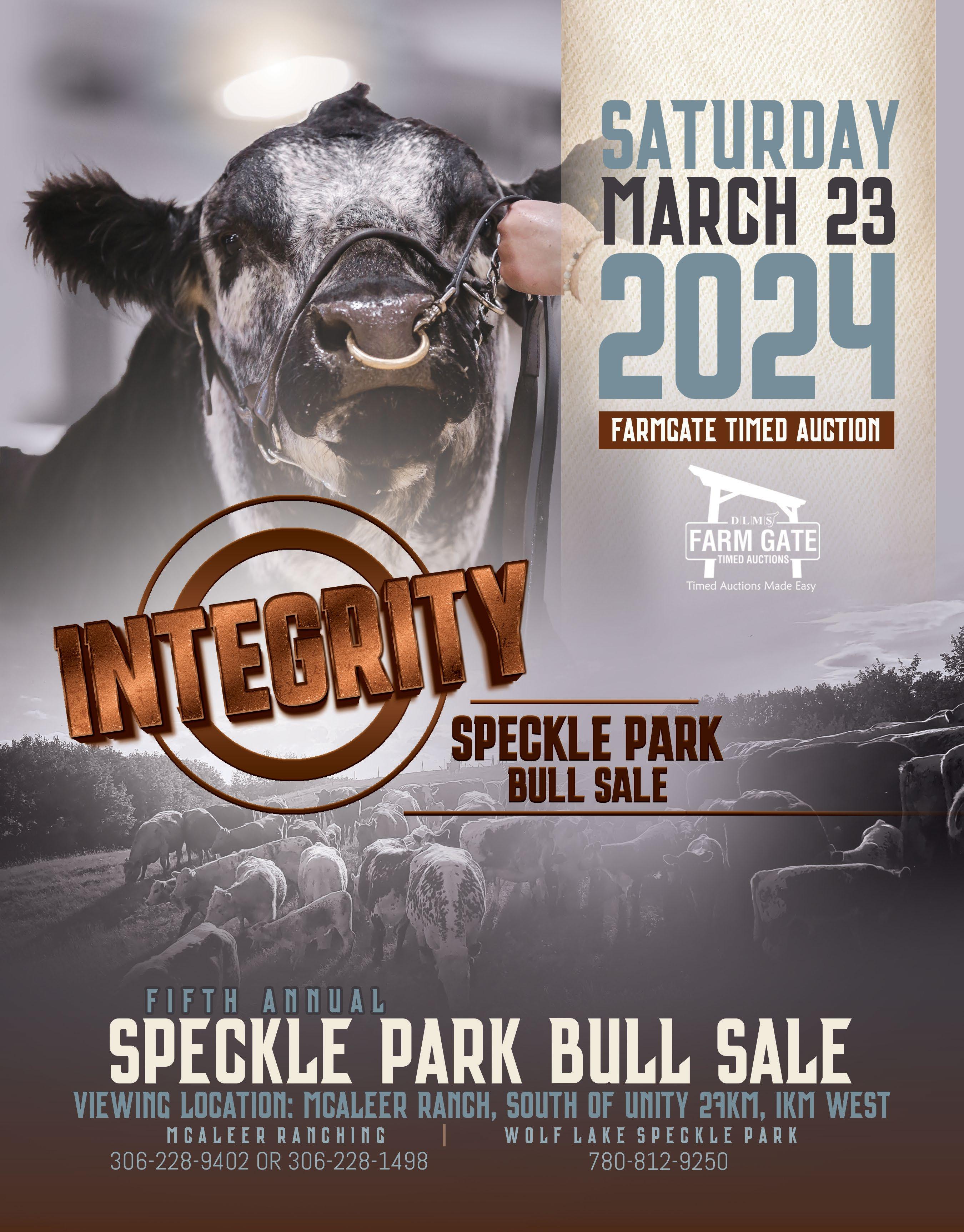
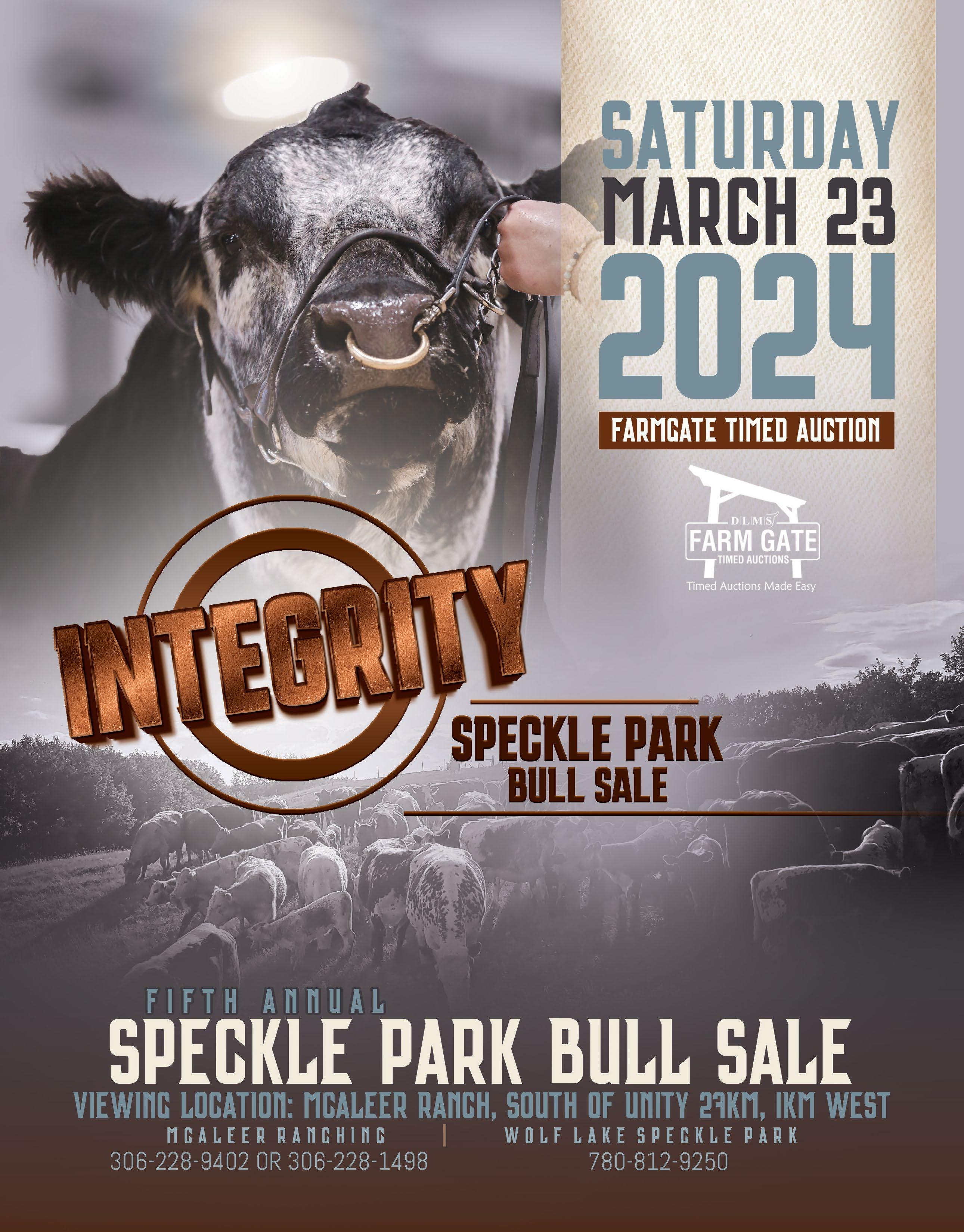




If I were asked to describe the Canadian Speckle Park Association, our membership, and the health our breed in a single word, that word would be “Strong”.
These are the facts, and they speak for themselves - make no mistake about it, in a very short period we have become a mainstream breed in Canada as well as in many other parts of the world. Expansion into Mexico and South America are key indicators that we haven’t even scratched the surface of our potential. Membership in the US continues to grow and mark my words, the American market is set to take off in a big, big way. Europe and the UK are steadily expanding their Speckle Park numbers while Australia remains a world leader in the breed.
In addition to this, and maybe it’s the most important of our accomplishments, is the fact that we have become commercially relevant. The driver behind this is simply our carcass quality and it is the reason why we will continue to sell more and more of our bulls to the commercial cattleman. Retailers, the consumer, the entire marketplace is searching for high quality beef, and they have found it - it’s covered with black & white coats.
Speaking with wholesalers and packers alike I’ve learned so much. Yes, while it’s true there are just so many hooks available on the rail and how much weight ends up hanging on these hooks is of huge importance economically, there is a significant need for higher end carcasses. Be it for export or domestic use, buyers are clamouring for premium
cuts and are willing to pay for it. The markets are there - we simply need to capitalize on them.
Take a moment and compare the quality of animals being offered during the up coming spring bull sale season to those from even five years ago. It becomes glaringly obvious how much better the cattle are getting. This speaks to the commitment of our breeders who to strive to build the very best possible. Well done.
Prices are strong and our hopes remain high for the future.
At a board level, we have completed our 2024 budget. We our continuing to work on breed improvement and have joined the IGS (International Genetic Solutions) in conjunction with the Canadian Maine Association and American Speckle Park Association alongside all the major beef breeds. IGS manages the largest multi-breed beef cattle evaluation in the world, using the most advanced technology to combine data and compare EPD's. Our junior program has had extreme interest, which shows a very strong future for this breed.
As President I’d like to wish everyone the very best calving season and hope you are all able to attend the upcoming AGM being held in Portage la Prairie, MB in June.
Janice Harasymchuk CSPA President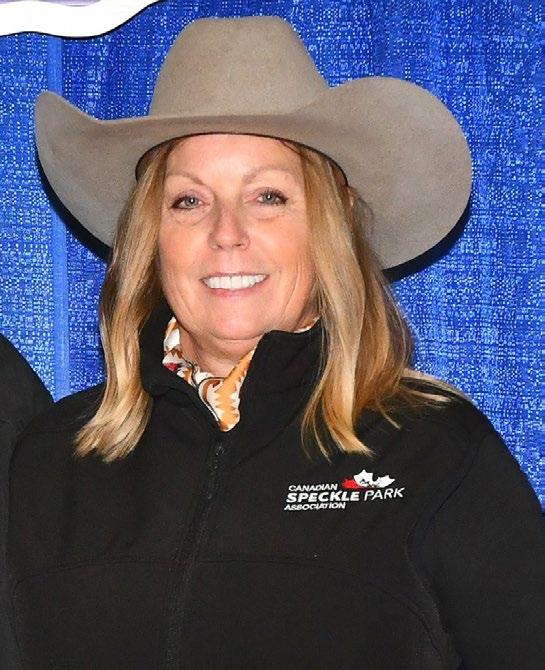
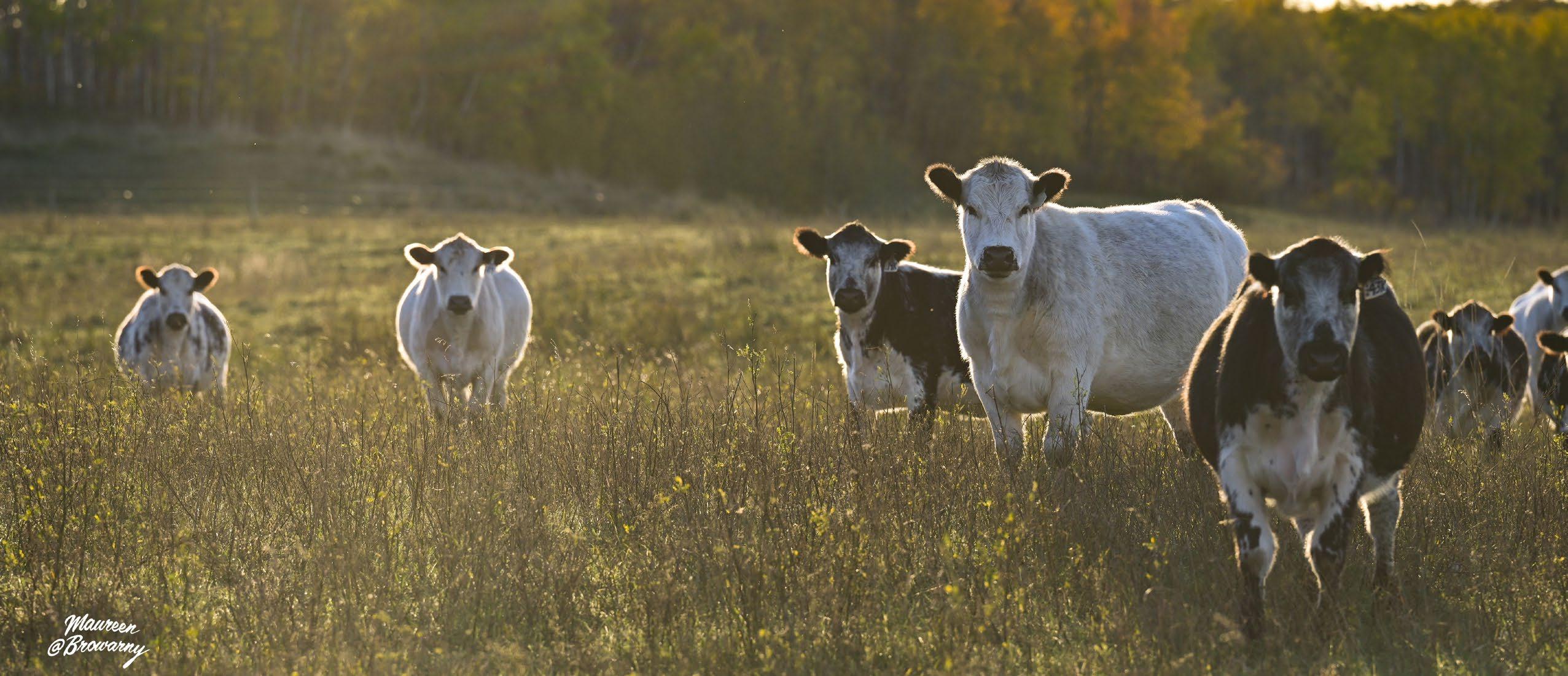
Si l’on me demandait de décrire l’Association canadienne Speckle Park, nos membres et la position de notre race en un seul mot, ce mot serait « FORT ».
Ce sont les faits, et ils parlent d’eux-mêmesne vous y trompez pas, en très peu de temps, nous sommes devenus une race dominante au Canada ainsi que dans de nombreuses autres parties du monde. L’expansion au Mexique et en Amérique du Sud est un indicateur clé que nous n’avons même pas effleuré la surface de notre potentiel. Le nombre de membres aux États-Unis continue de croître et, comme je l’ai dit, le marché américain est sur le point de décoller de manière très importante. L’Europe et le Royaume-Uni augmentent régulièrement leur nombre de Speckle Park, tandis que l’Australie reste un leader mondial de la race.
À cela s’ajoute, et c’est peut-être la plus importante de nos réalisations, le fait que nous sommes devenus commercialement pertinents. Le moteur de cette situation est tout simplement la qualité de nos carcasses et c’est la raison pour laquelle nous continuerons à vendre de plus en plus de nos taureaux aux éleveurs de bétail commerciaux. Les détaillants, les consommateurs, l’ensemble du marché sont à la recherche de bœuf de haute qualité, et ils l’ont trouvé - il est couvert d’une robe noire et blanche.
En parlant avec des grossistes et des emballeurs, j’ai beaucoup appris. Oui, même s’il est vrai qu’il y a un grands nombre crochets de disponibles dans les abattoirs et que le poids des carcasses sur chaque crochet est d’une importance capitale sur le plan économique, il reste qu’il y a un besoin important de carcasses de haute gamme. Que ce soit pour l’exportation ou pour
le marché domestique, les acheteurs réclament plus de coupes de grande qualité et sont prêts à payer pour les avoir. Les marchés sont là, il faut simplement en tirer parti.
Prenez un moment pour comparer la qualité des animaux offerts au cours de la prochaine saison des ventes de printemps de taureaux à celle d’il y a cinq ans. Il devient évident à quel point le bétail s’améliore. Cela témoigne de l’engagement de nos éleveurs qui s’efforcent de produire le meilleur animal possible. Bien joué.
Les prix sont élevés et nos espoirs restent élevés pour l’avenir.
Au niveau du conseil d’administration, nous avons bouclé notre budget 2024. Nous continuons à travailler sur l’amélioration des races et avons rejoint l’IGS (International Genetic Solutions) en collaboration avec l’Association canadienne Maine Anjou et l’American Speckle Park Association aux côtés de toutes les principales races de bœuf. IGS gère la plus grande évaluation de bovins de boucherie multi-races au monde, en utilisant la technologie la plus avancée pour combiner les données et comparer les EPD. Notre programme junior a suscité un intérêt extrême, ce qui laisse présager un avenir très prometteur pour notre race.
En tant que président, j’aimerais souhaiter à tous la meilleure saison de vêlage et j’espère que vous serez tous en mesure d’assister à la prochaine AGA qui aura lieu à Portage la Prairie, au Manitoba, en juin.
Janice Harasymchuk
Présidente de l’ACSP

CSPA BOARD OF DIRECTORS
PRESIDENT
Janice Harasymchuk Saskatoon, SK 306-260-6200 janiceh@maxies.ca
VICE PRESIDENT
Peter Watson Branchton, ON 519-242-0933 petemar162@gmail.com
DIRECTORS
Curtis McAleer Unity, SK 306-228-3689 ctmcaleer@sasktel.net
Harv Fehr Hague, SK 306-290-6780 highmark.hf@gmail.com
Craig Brown Wetaskiwin, AB 780-360-3276 maplelanestockfarm@gmail.com
MEMBER AT LARGE
Art Pruim Warman, SK 306-222-8455 ajpruim@sasktel.net
DIRECTOR/YOUTH PROGRAMS
Makenzie Olson Tisdale, SK 305-921-3402 youth@canadianspecklepark.ca
The spring months are only an arm’s reach away, and for many of our producers, calves have been hitting the ground for a couple of months now. At the office, we have been busy with transfers from all the recent bull sales, membership renewals, registrations, and planning our AGM in June.
We were very fortunate to have had a fantastic show season and some great sales across Canada. We have continuing support from international buyers, and the international interest continues to grow, for which we are so appreciative. The quality of our Canadian genetics also continues to grow, and these continual genetic advancements have not gone unnoticed this past year. As we continue through the spring months and into the summer, please remember that now is the time to get those registrations submitted to avoid any delays later in the fall.
Another highlight of the past year was the first-
ever Canadian Junior Speckle Park Association meeting hosted at Agribition, where we had over 20 youths join us for a discussion around forming a Junior Board of Directors and playing an active role in coordinating the future of Junior events and activities. There are so many fresh ideas and much excitement around our new junior board; we cannot wait for them to get started.
We look forward to seeing everyone in Portage La Prairie June 14-15 for our 2024 AGM. Director nominations are due to the office by May 1, and forms can be downloaded from the Resources tab on our website. Hotel bookings are now available, and more information of events taking place during the AGM will be shared as it is available.
Ciara Mattheis Business Manager Canadian Speckle Park Association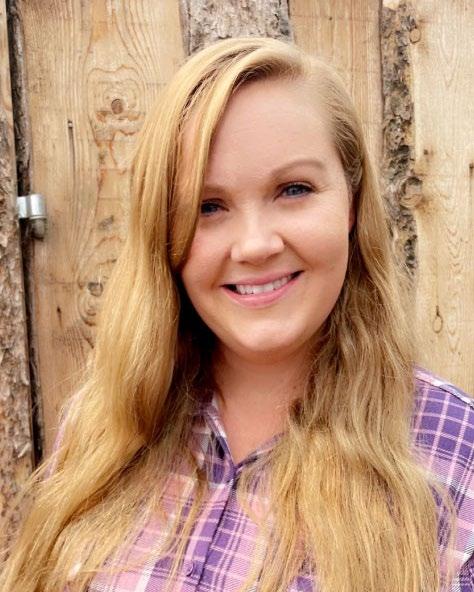

5160 Skyline Way NE Calgary, AB T2E 6V1
Hours of operation: Monday to Wednesday 7:00 AM to 4:00 PM
Tel: 403-453-9544
info@canadianspecklepark.ca
canadianspecklepark.ca
Le printemps cogne à la porte, et pour plusieurs de nos producteurs, les vêlages sont en cours depuis quelques mois déjà. Au bureau de l’association, nous sommes occupés avec les transferts de toutes les ventes de taureaux récentes, les renouvellements d’adhésion, les enregistrements et la planification de notre assemblée générale annuelle (AGA) qui sera en juin.
Nous avons été très chanceux d’avoir eu une saison d’expositions fantastique et d’excellentes ventes à travers le Canada. Nous bénéficions d’un soutien continu de la part d’acheteurs internationaux, et l’intérêt international ne cesse de croître, ce dont nous sommes très reconnaissants. La qualité de notre génétique canadienne continue également de croître, et ces progrès génétiques persistants ne sont pas passés inaperçus au cours de la dernière année. Il n’y a pas de meilleur moment que le présent pour soumettre vos demandes d’enregistrement afin
d’éviter des délais pendant le rush de l’automne.
Un autre fait saillant de l’année dernière a été la toute première réunion de l’Association canadienne junior Speckle Park tenue à Agribition, où plus de 20 jeunes se sont joints à nous pour discuter de la formation d’un conseil d’administration junior et de jouer un rôle actif dans la coordination de l’avenir des événements et des activités juniors. Il y a tellement d’idées nouvelles et beaucoup d’enthousiasme autour de ce groupe de junior ; Nous avons hâte qu’ils mettent à l’œuvre toutes leurs idées.
Nous anticipons rassembler un grand nombre d’éleveurs à Portage La Prairie les 14 et 15 juin pour notre l’AGA 2024. Les mises en candidature


pour le conseil d’administration doivent être parvenues au bureau au plus tard le 1er mai, et les formulaires peuvent être téléchargés à partir de l’onglet « Ressources » sur notre site Web. Les réservations d’hôtel sont maintenant disponibles, et plus d’informations sur les événements qui se dérouleront pendant l’AGA seront partagées dès qu’elles seront disponibles.
Ciara Mattheis
Chef d’entreprise, Association canadienne Speckle Park
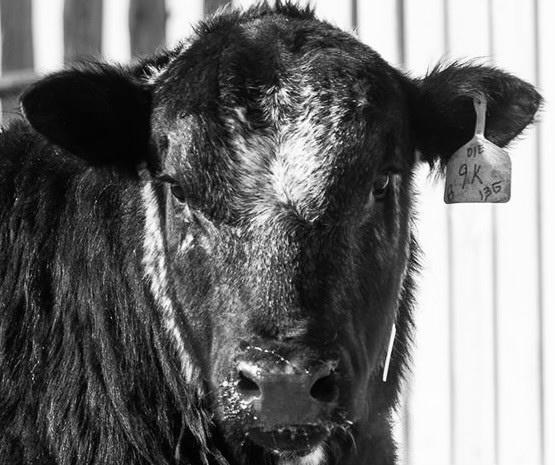
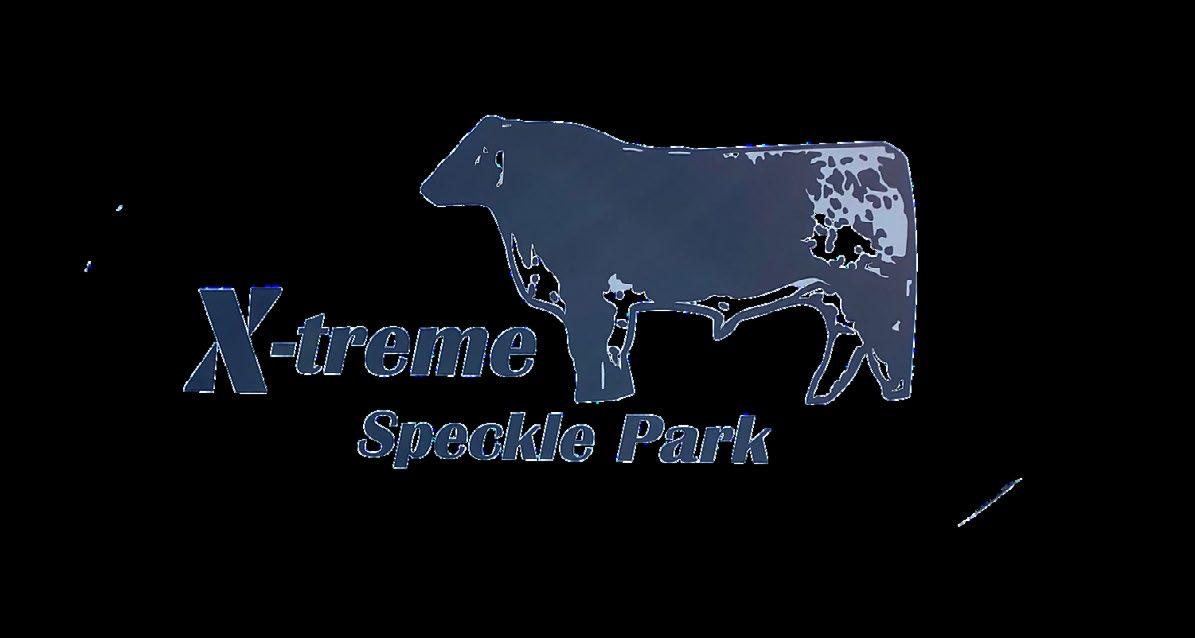

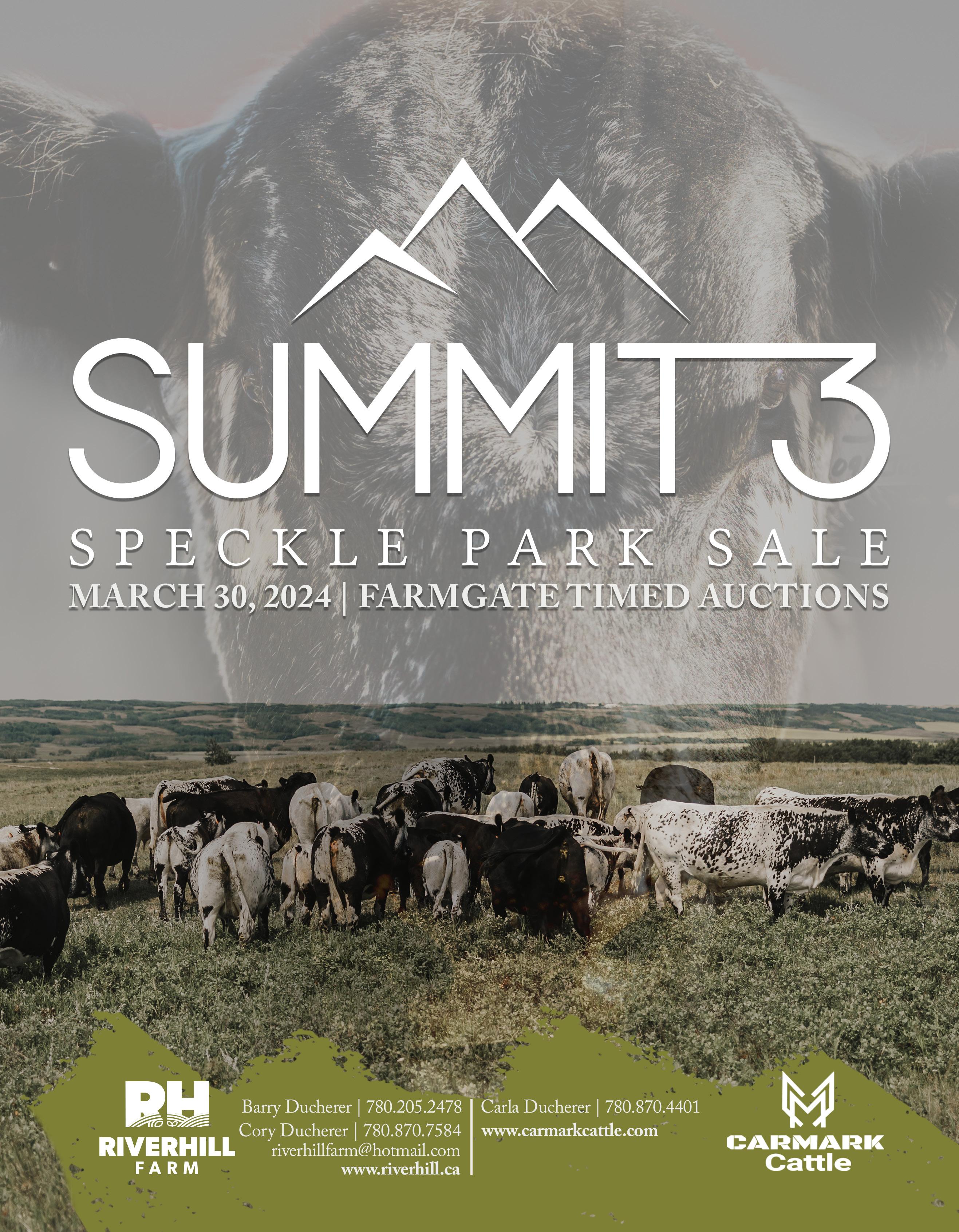

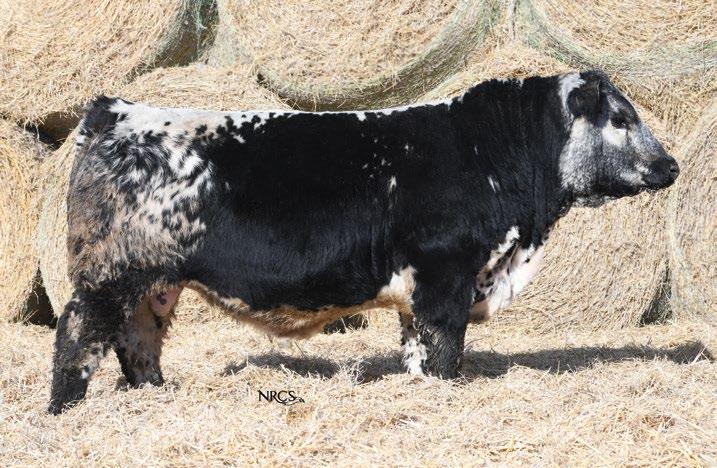
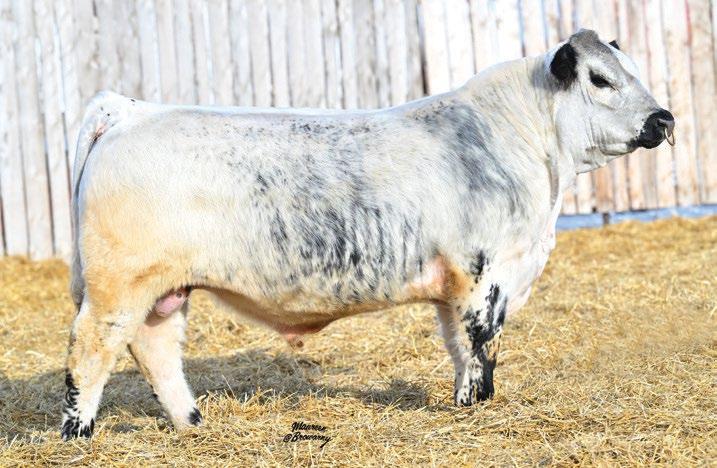
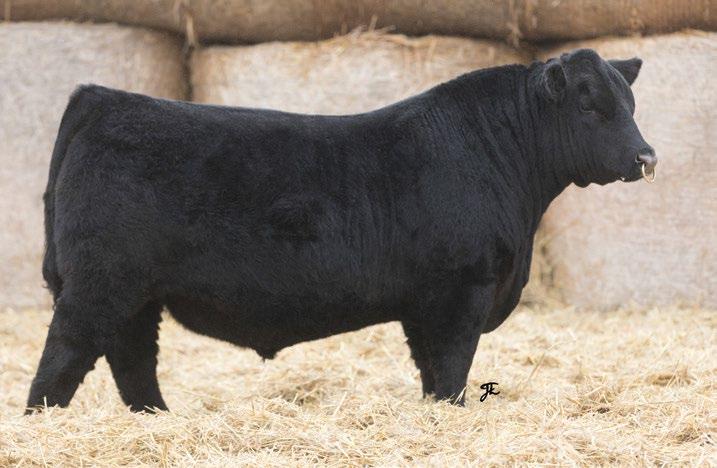
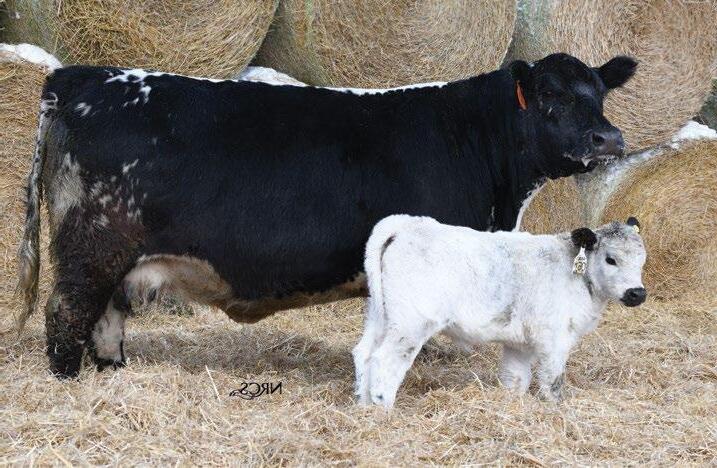
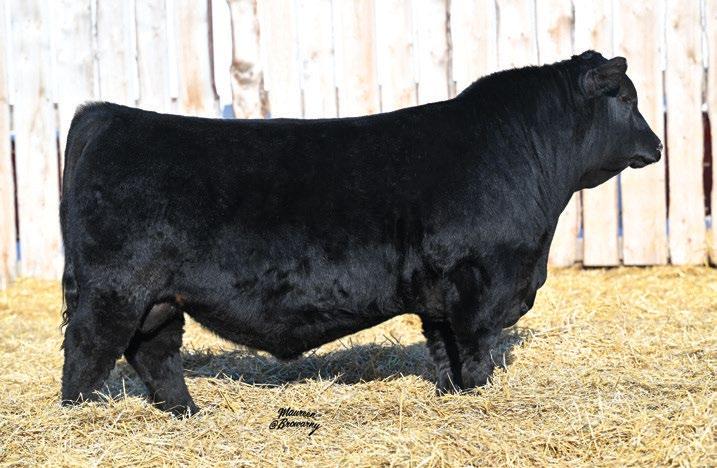
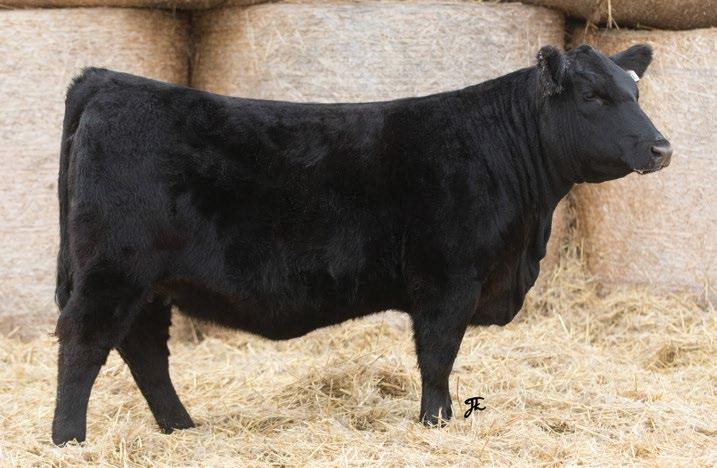
Tony, Tammy, Colton and Logan Freimark 306-830-8239
Layne Pickett
587-989-7995
Garry and Donna Berting 306-231-7567
306-231-5175
BARRETT & SHELBY ELLIOT St. Brieux, SK 306-260-8717
CHRIS POLEY: 306-220-5006
SHANE MICHELSON: 403-363-9973
BEN WRIGHT: 519-374-3335
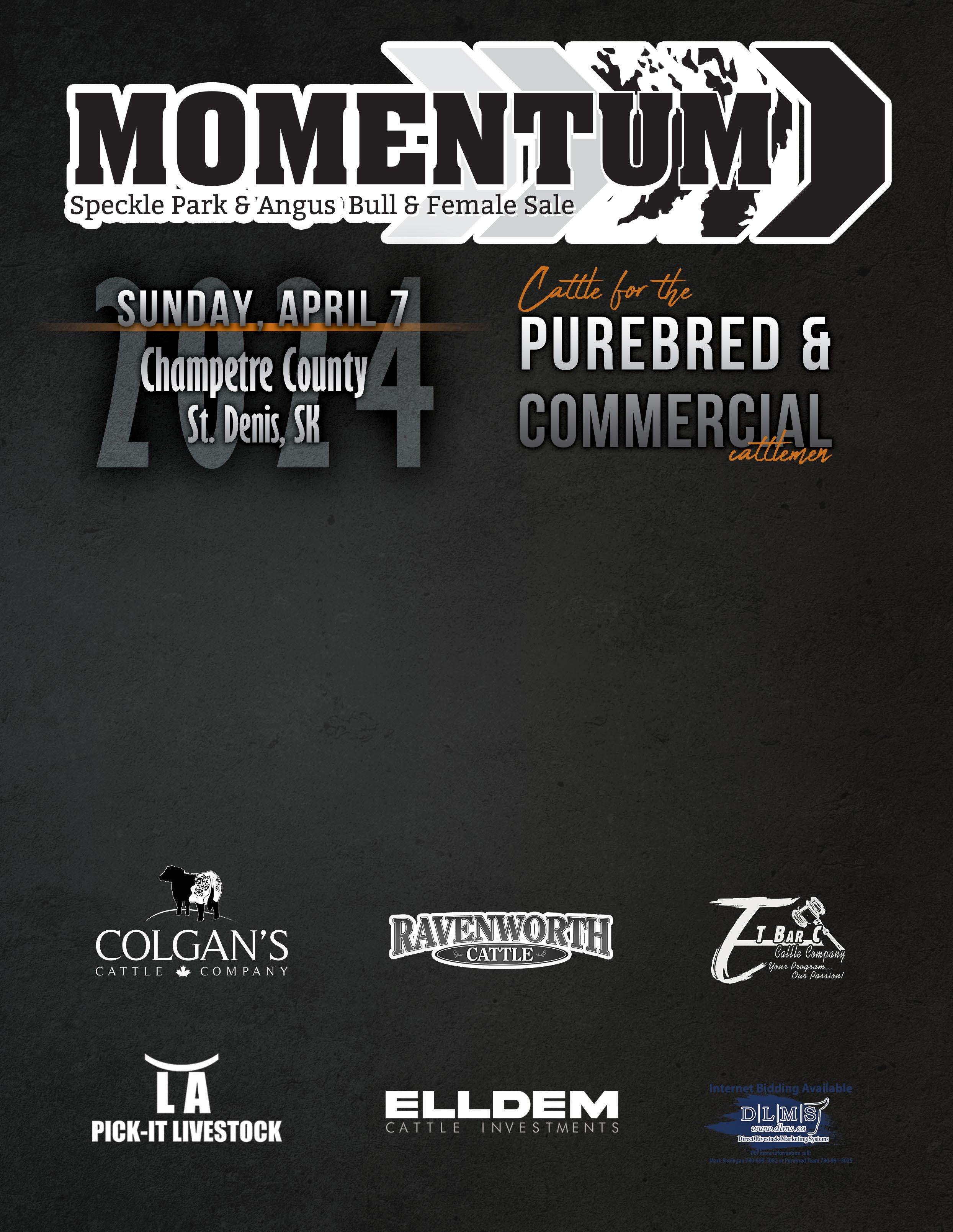


 CCCC 08L
GDB 307L
CCCC 02G
TWOB 302L
TWOB 314L
RAVE 8L
THESE BULLS AND FEMALES SELL!
CCCC 08L
GDB 307L
CCCC 02G
TWOB 302L
TWOB 314L
RAVE 8L
THESE BULLS AND FEMALES SELL!
The CSPA 2023 Lifetime Achievement Award was presented to Gary and Nancy Kiziak and family at the Speckle Park banquet hosted at Agribition. We recognize the Kiziak family for the immense impact they have made and continue to make on the Speckle Park breed and honour their dedication to the breed.

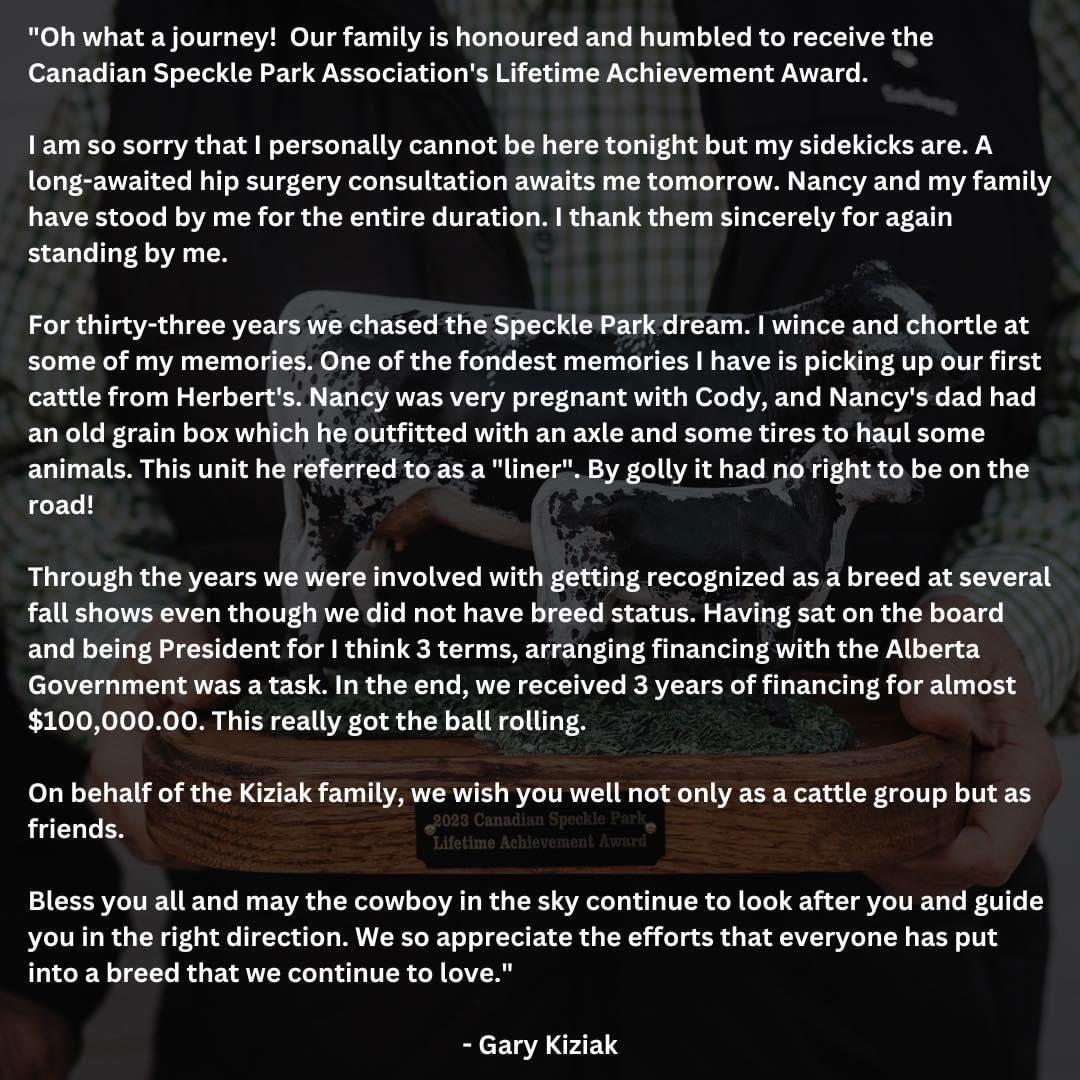
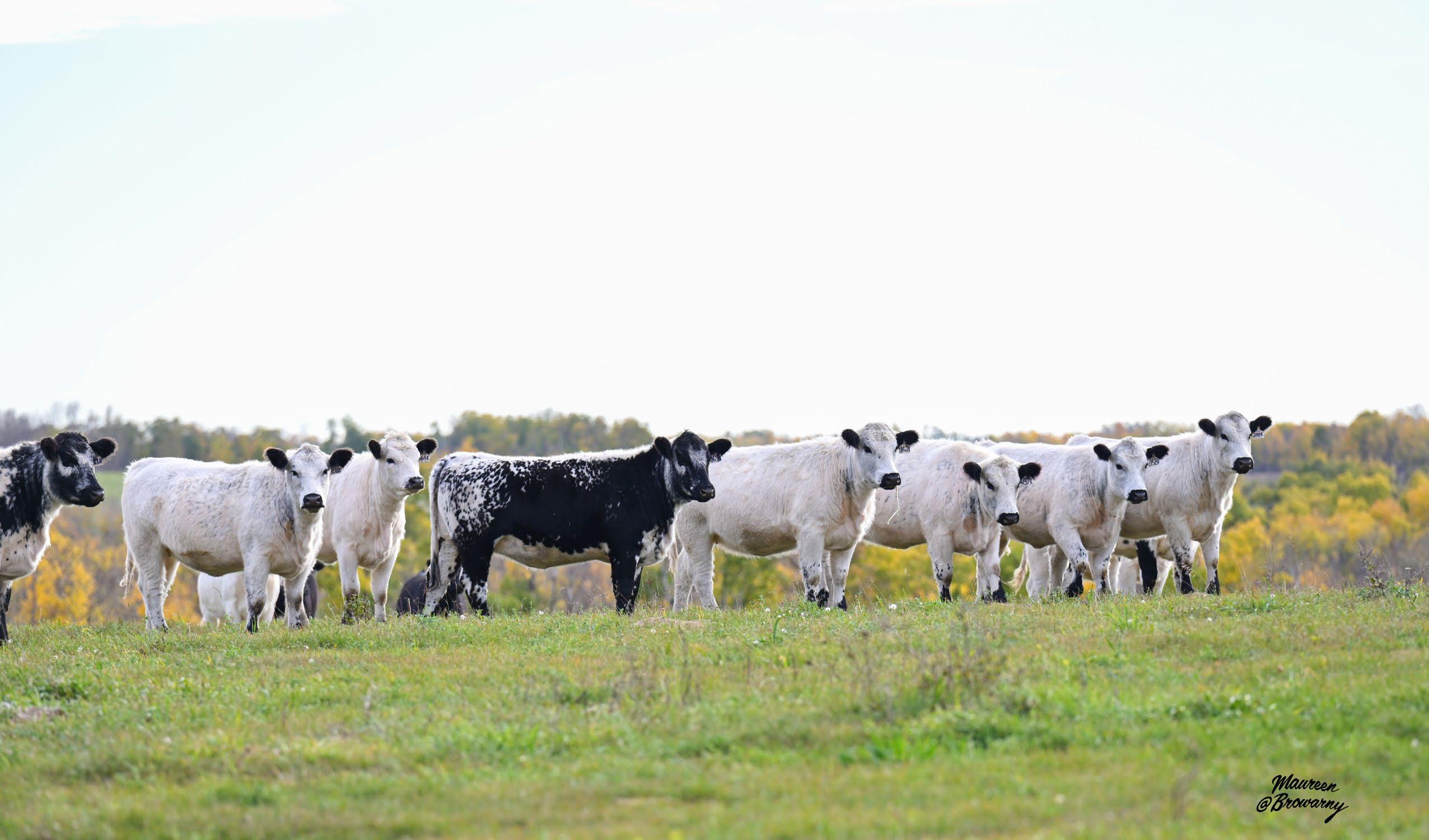
The Canadian National Junior Speckle Park Show which will be held July 8th-12th in Olds, AB in conjunction with Summer Synergy. Please reach out to Makenzie at youth@canadianspecklepark.ca if you have any questions!
The CSPA presented the 2023 Commercial Cattlemen’s Award to Leigh and Anita McKain at the Speckle Park banquet hosted at Agribition. We thank Leigh and Anita for their trust in and dedication to the Speckle Park breed!
The 2024 Canadian Speckle Park Association’s 2024 AGM will be hosted on June 14th-15th at Canad Inns Destination Centre Portage in Portage La Prairie, Manitoba (contact the CSPA office for a link to book your room).
AGENDA:
Friday June 14, 2024
Industry tours and events TBA
Saturday June 15, 2024
9:00 AM Doors open for Ambassador Room A. Coffee and Pastries will be served upon arrival.
9:30 AM AGM Begins
12:00 PM Lunch
1:00 PM AGM Resumes, Presentations from speakers
3:00 PM AGM Wraps Up
5:00 PM Bar Opens
6:00 PM Banquet Dinner
9:30 PM Bar Last Call
10:00 PM Bar Closes | Event Concludes
Deadlines of note:
April 15 Deadline for submission of Bylaw amendments to Head office. May 1 Deadline for nominations submitted to Head office.
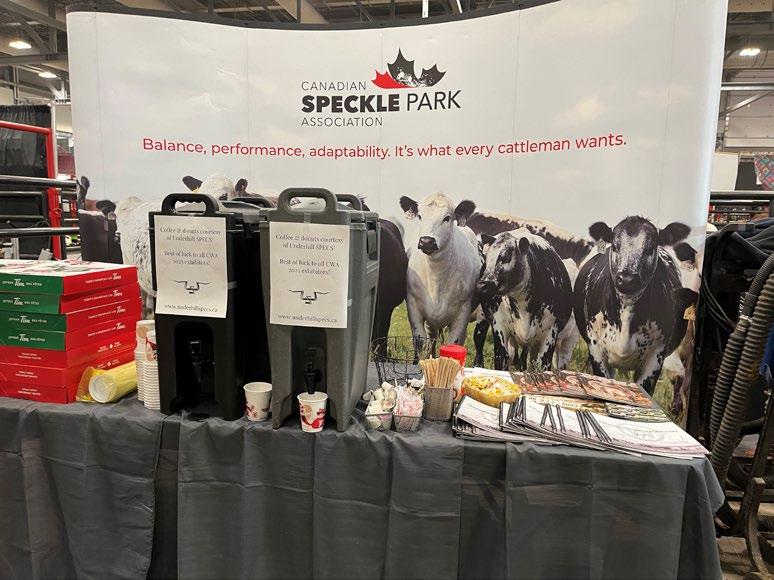
Thank you to Underhill SPECS for sponsoring Tim Hortons donuts and coffee at the 2023 Agribition CSPA booth!
Attention Ontario breeders! There will be a new Speckle Park breed show taking place at this year’s Barrie Fair in Barrie, Ontario on August 24th. There will also be a Speckle Park junior show (signup the day of). Winners of each breed show at Barrie Fair will compete for the overall breeds supreme bull and female title and the winners of this supreme will qualify for both the Royal Winter Fair and Agribition Supreme shows.
For more information, please contact Katarina Pautsch at k_pautsch@hotmail.com





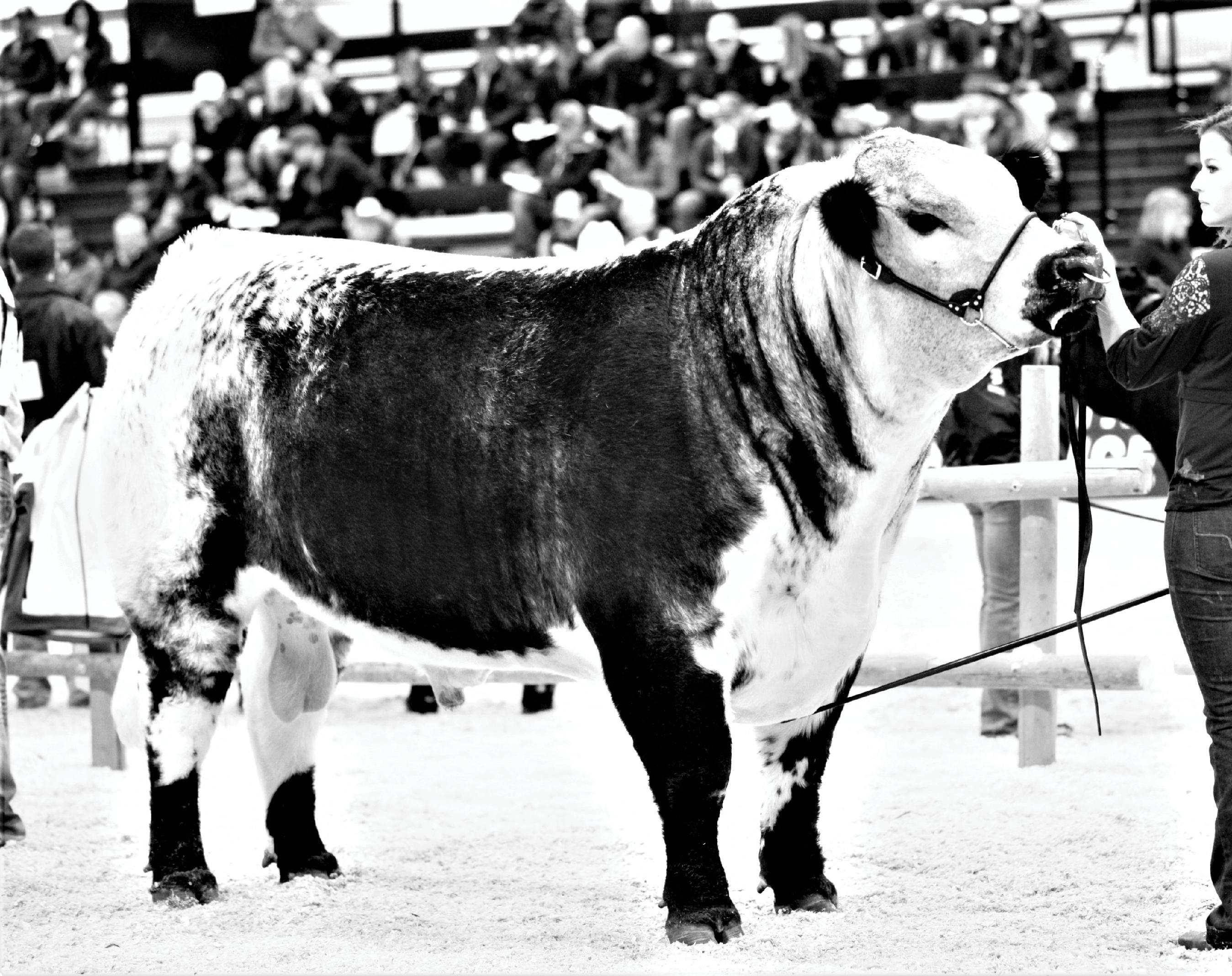
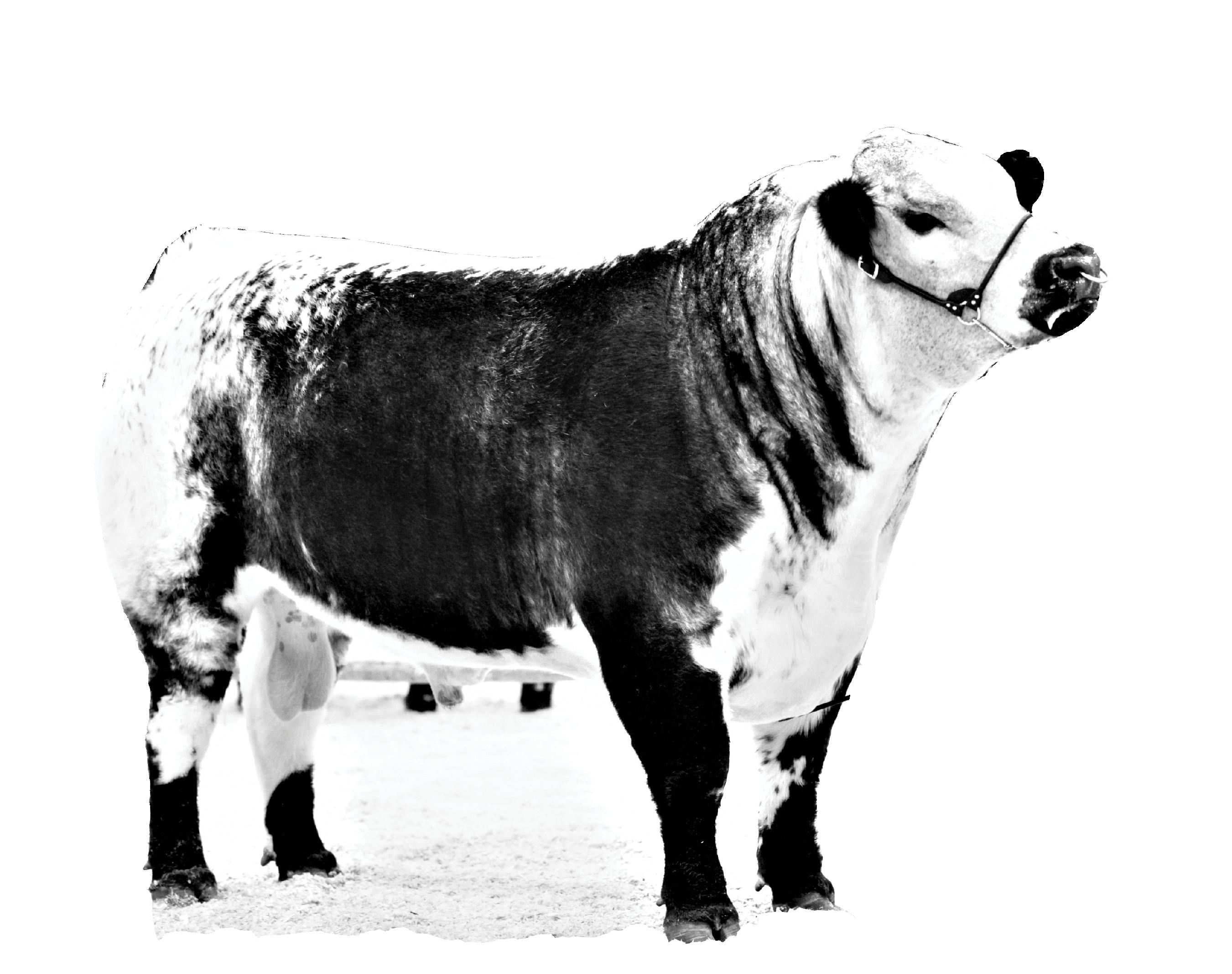














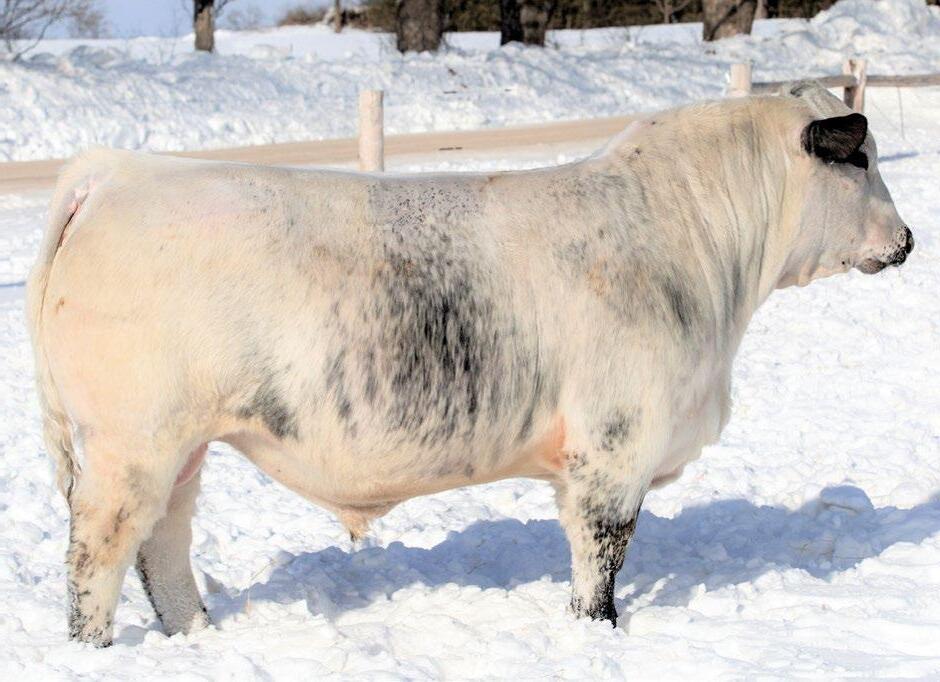
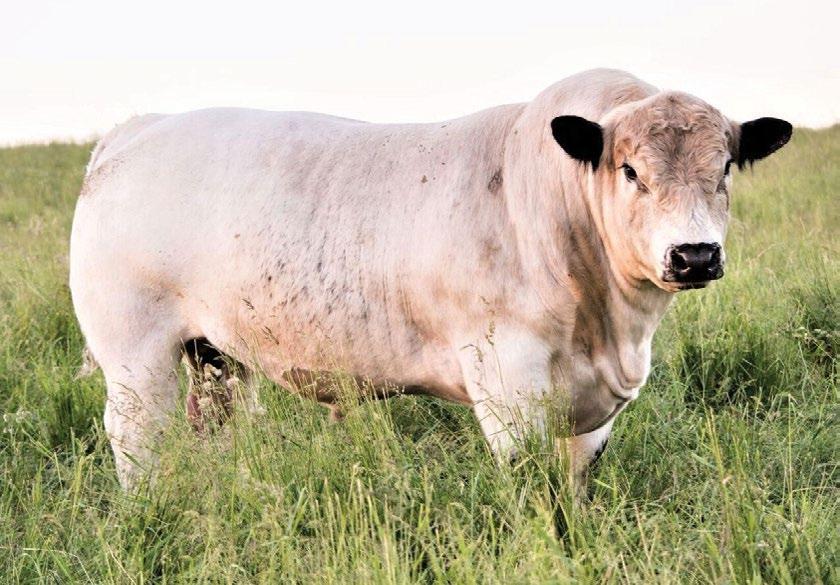


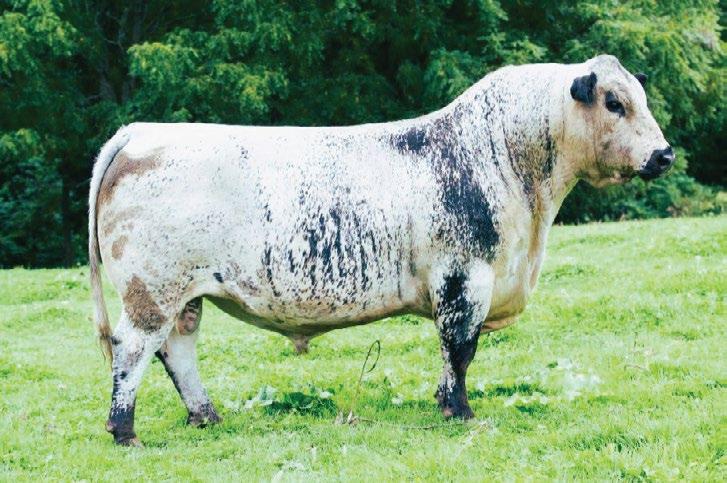
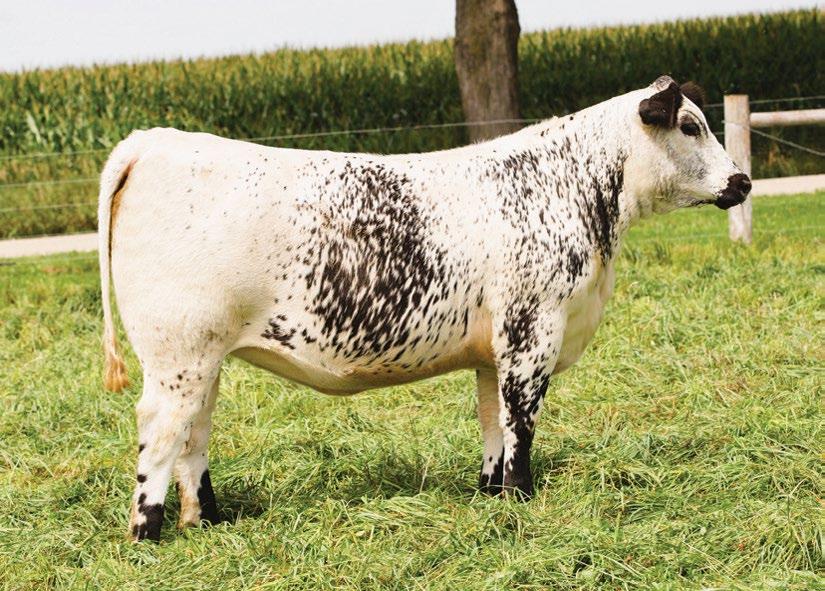
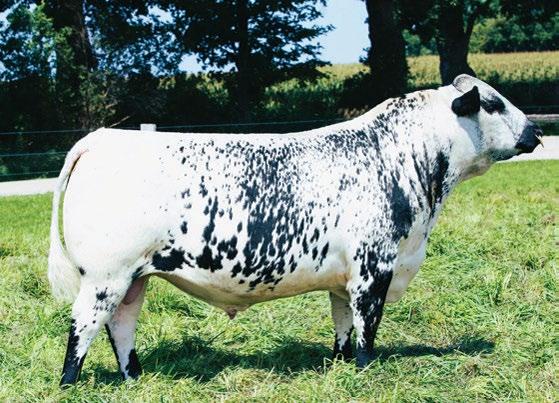
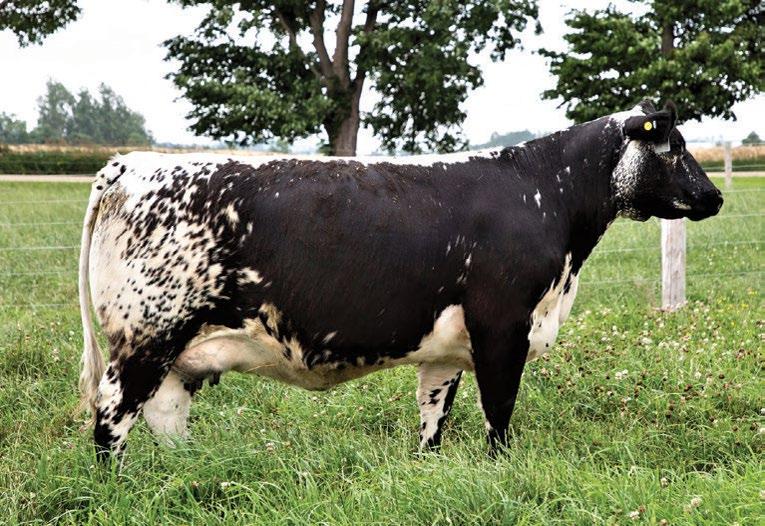
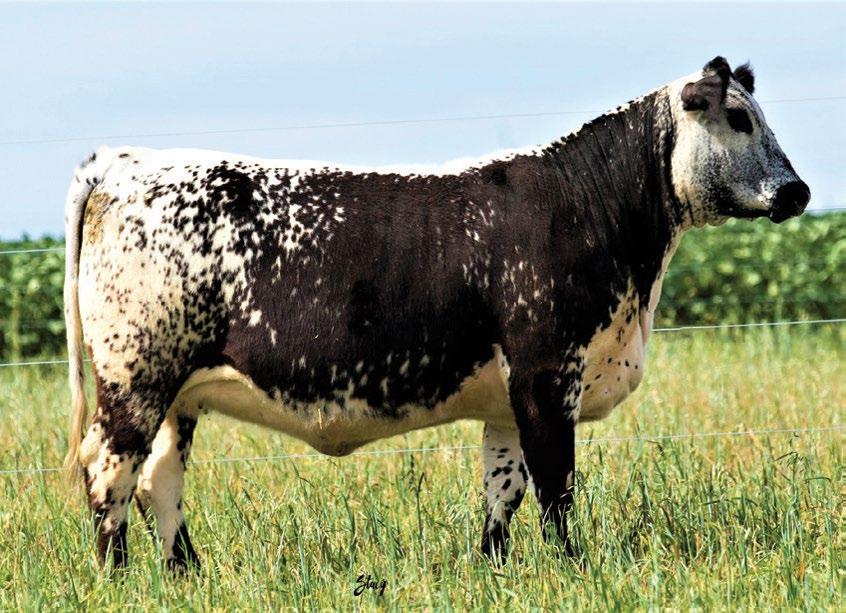





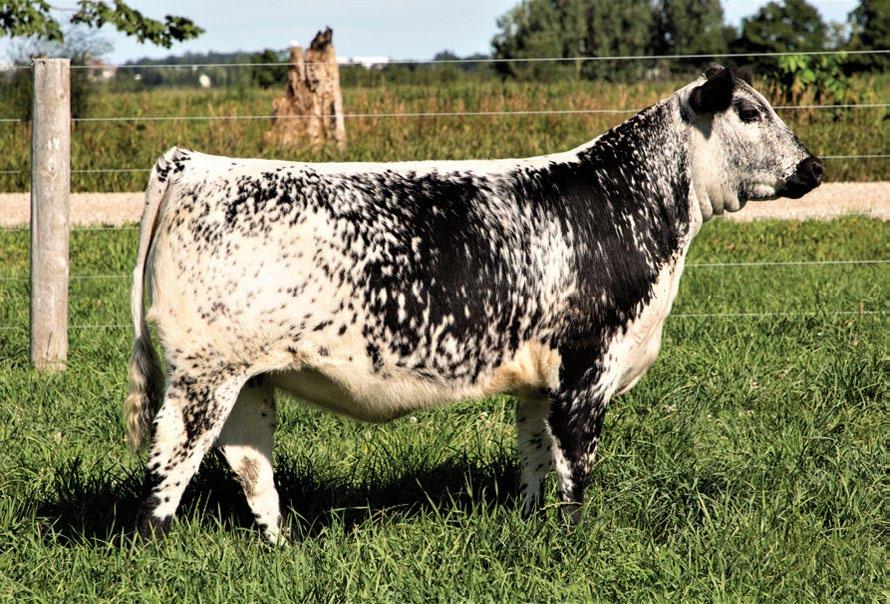

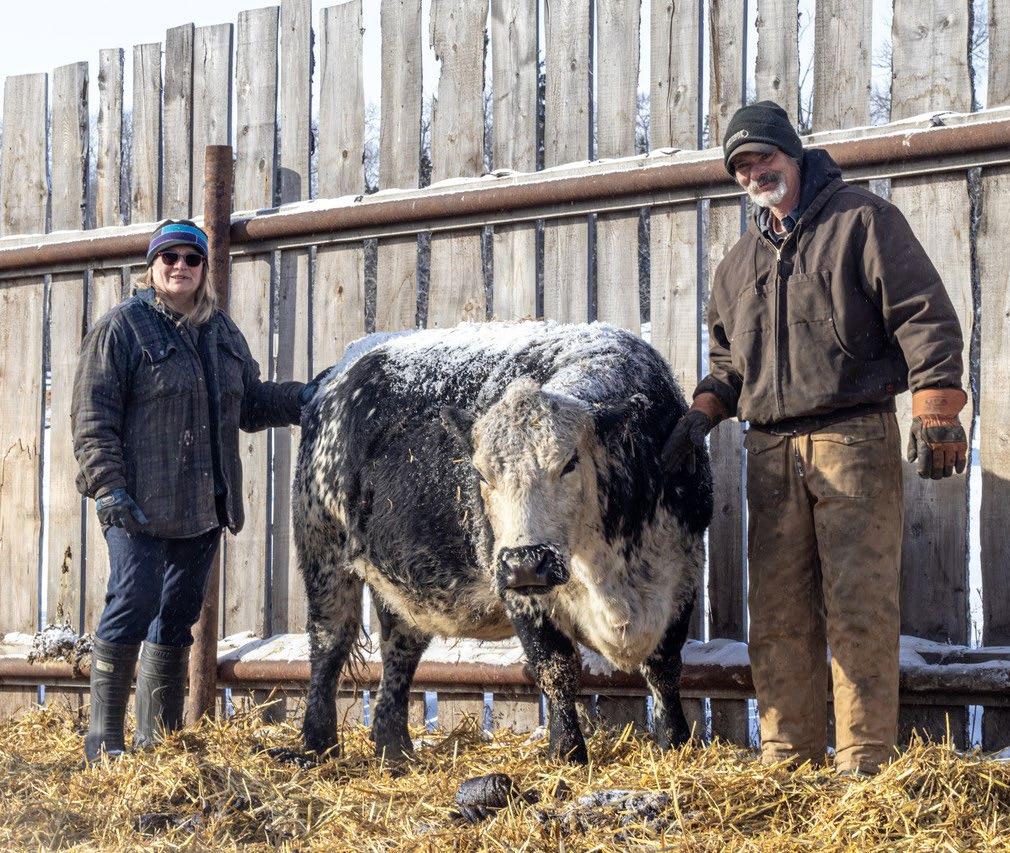
Developing a cow herd to a certain level takes time, patience, and a clear vision of what you want that herd to become. Or in this case of beef farmers, Leigh and Anita McKain at Over The Hill Farms, more of a spotted vision! When it came time to build the herd of their dreams, they had no trouble going all in on their breed of choice. That breed was, of course, Speckle Park.
Having both spent their entire lives around cattle, the McKains were excited to start their own herd when the opportunity presented itself 25 odd years ago. At the heart of that starter herd, a few of which were inherited from Anita’s father, were your standard issue Charolais/ Simmental cross cows found on many mixed farms in their Barrhead,
AB community. While this group of cows was a great start, they soon found themselves discussing alternative breeds that might better suit their operation and personal taste. One that had been in the back of both their minds for a long, long time was Speckle Park.
“There was a pamphlet that came in the mail back in the mid-1980’s on Speckle Park cattle. That was before it was even recognized as a breed,” recalls Leigh. Each of them remembered seeing this flyer on separate occasions but it had tweaked something in both their minds at the time. It quickly returned to focus when deciding which direction they would like to go with their herd, something the two of them had no trouble agreeing upon.

The docility the Speckle Park breed is known for held a lot of appeal for the McKains. Naturally easy-going animals are what best suits their style of cattle operation, adapting seamlessly to their management practices.
Several things appealed to them about this breed that was just beginning to develop some traction. They liked the idea of more moderate framed cattle, easy going temperament, general hardiness and of course the unique color pattern most of the ‘parks’ possess.
“We were young enough to jump into something new,” Leigh explains. Oddly enough, they chose to go with what they affectionately refer to as ‘the old man’s breed’. “We jokingly call them the old man's breed because they're so easy to handle and they're not monster cows,” he continues. “Not only that, but the most trivial part of it was, we were bored with having a red calf, or maybe a tan calf. Now calving is like Christmas! You don't know what you're going to get until it comes out,” adds Anita. It goes
without saying the special spots on each new baby add a bit of extra joy to the calving process.
The docility the Speckle Park breed is known for held a lot of appeal for the McKains. Naturally easy-going animals are what best suits their style of cattle operation, adapting seamlessly to their management practices. The cow herd is trained to come to the sound of the horn on the truck making gathering out of the bush and moving pastures a quick and easy job. Each fall, the weaned calves get a ‘babysitter’ in the way of a 2700-pound steer.
“He’s a big Speckle. He was tame right from the day he was born, he’d come to you out in the pasture right from his mother. We put him in with

the calves in the fall, he shows them where the water and feed are and everything to get them settled in,” describes Leigh.
They liked the idea of more moderate framed cattle, easy going temperament, general hardiness and of course the unique color pattern most of the ‘parks’ possess.
“Attitude is a very big deal in our herd,” stresses Anita, “If they’ve got a high head or they kick, we usually sell them, even if they're a good animal.” Not only do the McKains find this selection process helpful, so do their customers who come to buy replacement heifers, breeding bulls or 4-H animals off the farm. “It’s nice when we have people that come into our yard to buy cattle, they can walk amongst them and touch them and scratch them, nothing gets worked up,” notes Anita.
Two of their children, Morgan and Dylan, were all for the Speckle Park idea as well. They were both excited to showcase Speckle Park calves as projects throughout their 4-H years.
“These two were the only ones in the area with spotted calves for a long time,” Anita says, “everybody came to the club to see our spotted cows because nobody knew what the hell they were.” A testament to the longevity of the breed, after 14 years one of the kid’s original 4-H heifers is still in production on the farm. “Every couple or three years she gives us twins. She's still got good feet and a good bag,” she continues.
In terms of their marketing strategy when embarking on this journey,
things haven’t changed a great deal. While the McKains have sold calves direct to the feedlot when there was demand, the calves still mostly sell through the ring at the local auction market. The key to making this approach successful is in the numbers.
“With the larger groups, interest from the buyers is strong, it’s when you have just a few head that get put through 2 or 3 at a time that you take a hit on the price,” explains Anita. Quality counts too. As Leigh mentions, “Like with any breed, it’s the top end cattle that are going to pay the bills”.
The fundamentals of good stock are something the McKains have always made top priority throughout the building of their Speckle Park herd. From the time they purchased their very first Speckle Park bull in 2008, soundness, functionality and docility have always been their main focus. The following year they bought 6 Speckle Park heifers that fit that same vision. When their first Speckle Park calves hit the ground in 2009, they were hooked, in fact they have purchased strictly speckle bulls ever since. Shortly there after, 25 of their Simmental cross cows were sold to facilitate the acquisition of 20 top end Speckle Park cows. Over the years they have culled hard on animals that didn’t bring what they wanted to the table.
“If a cow wasn’t giving us what we wanted she went to town, we’d replace her with a speckle heifer,” they both agreed. This is largely what has advanced their herd to where it is today. That being between 110-120 head of top producing Speckle Park cows, depending on the availability of feed and pasture.
In terms of the amount of speckle genetics in the herd, “We have a just few 50 percenters, but the bulk of them are anywhere to 75% and up,” explains Anita. With many of the cows being straight Speckle Park, they have even
ventured into the purebred aspect of the breed with more than a dozen papered cows currently on the place from which they raise and sell a select few elite 2 year-old bulls directly off the farm. Looking to dabble a bit more in that area, some embryo work is on the horizon.
With the recent addition of registered Speckle Park, they chose to add a herd prefix with much historical significance. The Hanging Heart Speckle Park name was derived from a brand that originally belonged to Leigh’s great grandfather, Issac Herber.
From the time they purchased their very first Speckle Park bull in 2008, soundness, functionality and docility have always been their main focus.
“When the hanging heart brand was registered to Isaac Herber of High River back in the late 1800’s, it was one of only two single iron brands registered in Canada,” Leigh recalls expressing how special it is to now own that particular brand and include it as their purebred herd’s namesake.
If the accomplishment of developing a beautiful, functional herd from the ground up brings sweet satisfaction, being named Speckle Park Commercial Breeder of the year for 2023 is the icing on the cake. Upon learning they had been chosen for this honor, they arranged for things to be taken care of back home and made the trip to Canadian Western Agribition this past November. There they were presented with this prestigious award during the Canadian Speckle Park Association Banquet. The McKains were elated that fellow Speckle Park breeder, Dalton Payne, had nominated them for this level of acknowledgement within the breed.
“We worked really hard to get to this point. Of course, we always thought our animals were good, but it’s nice to know that other people are impressed with them as well and to be recognized on the national level,” says Anita.
There is no doubt that Hanging Heart Speckle Park have influenced some changes to the local landscape over the past 25 years.
“Now we're not the only ones in the neighborhood that can be accused of having black and white cows,” chuckles Anita. “You know, you used to go for a drive, and you didn't see very many, but now you see one here or half a dozen there or even a whole bunch along the way,” adds Leigh.
It is with the help of dedicated producers like the McKains, that the Speckle Park breed is making its mark in today’s beef industry and getting the credit it deserves.
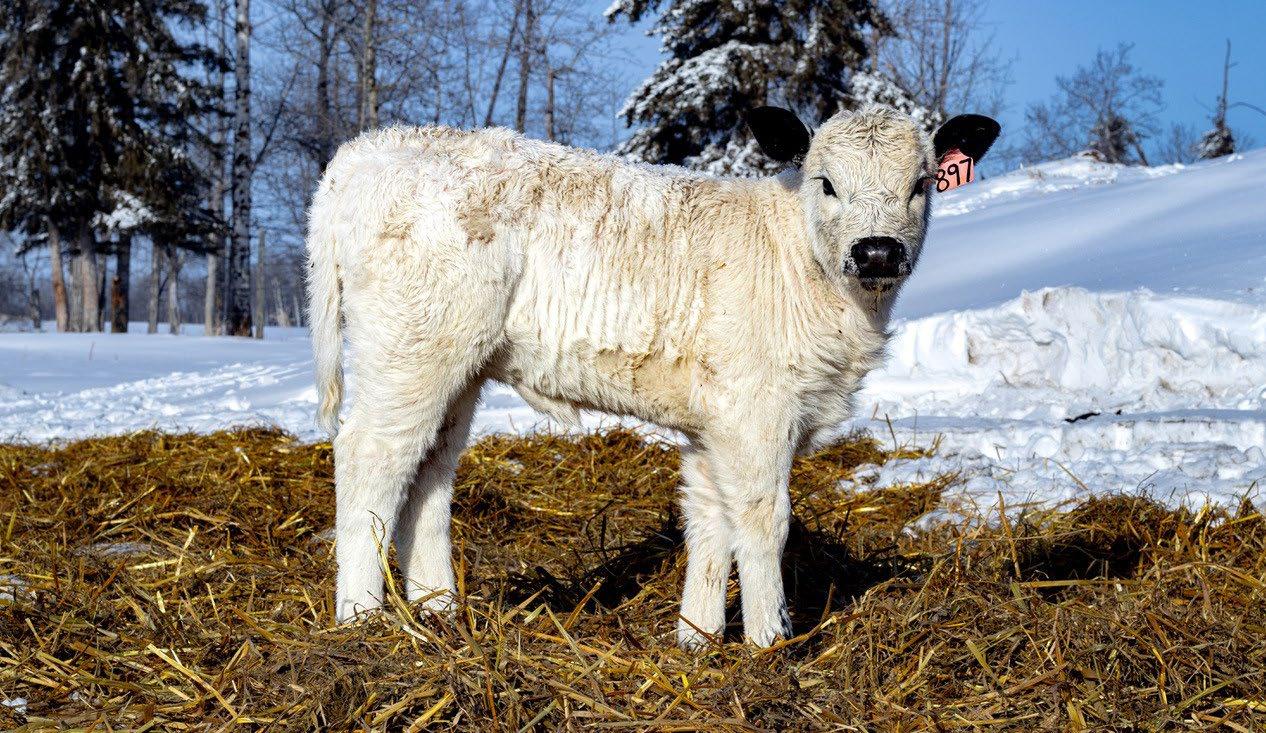
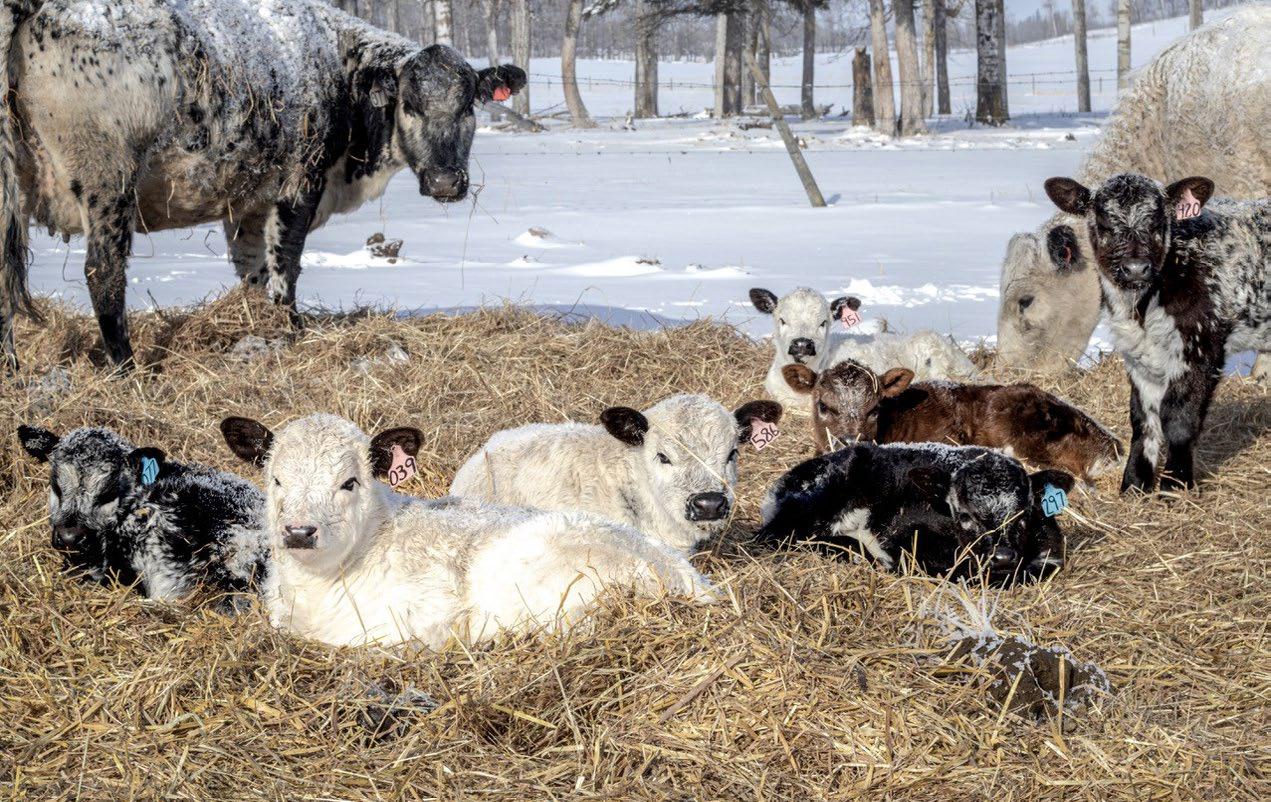
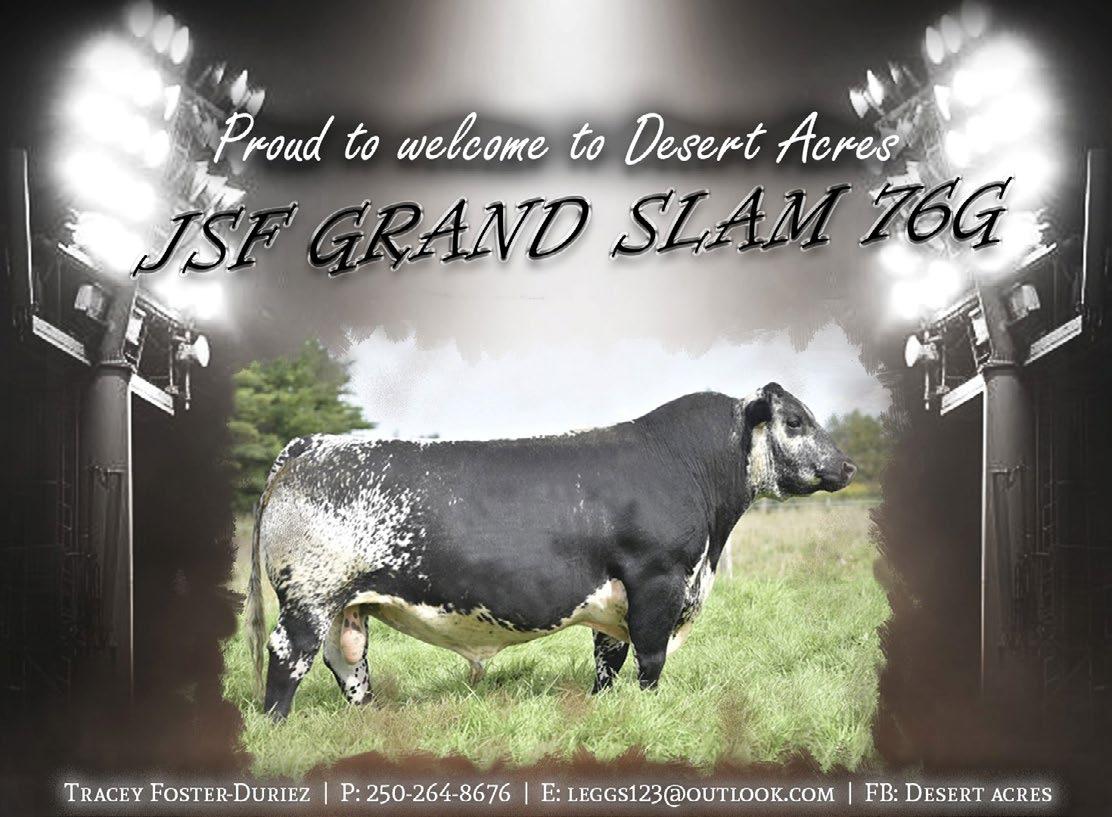


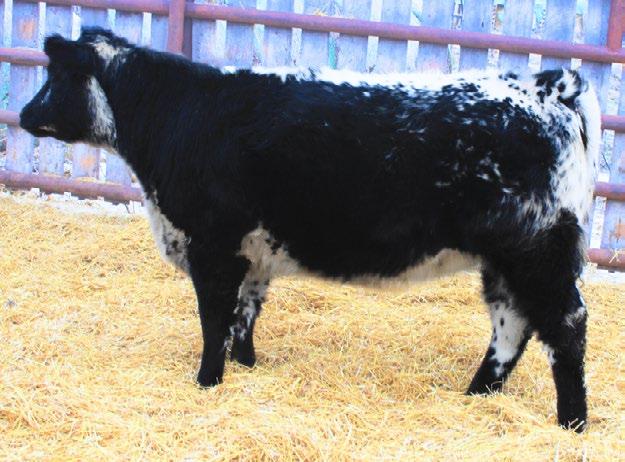
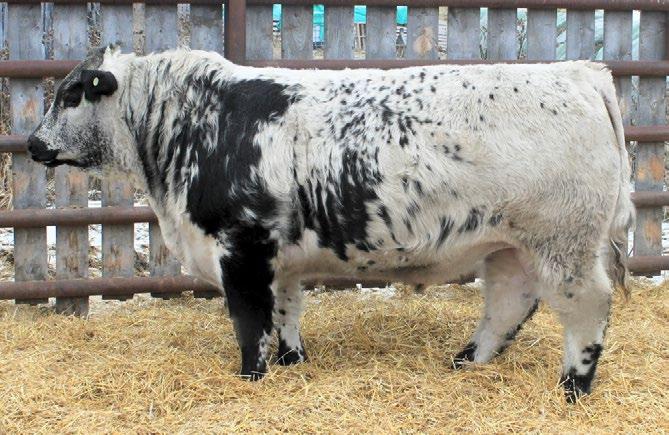
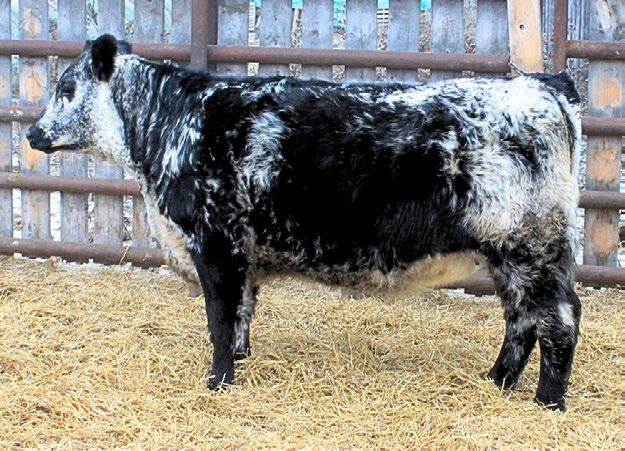



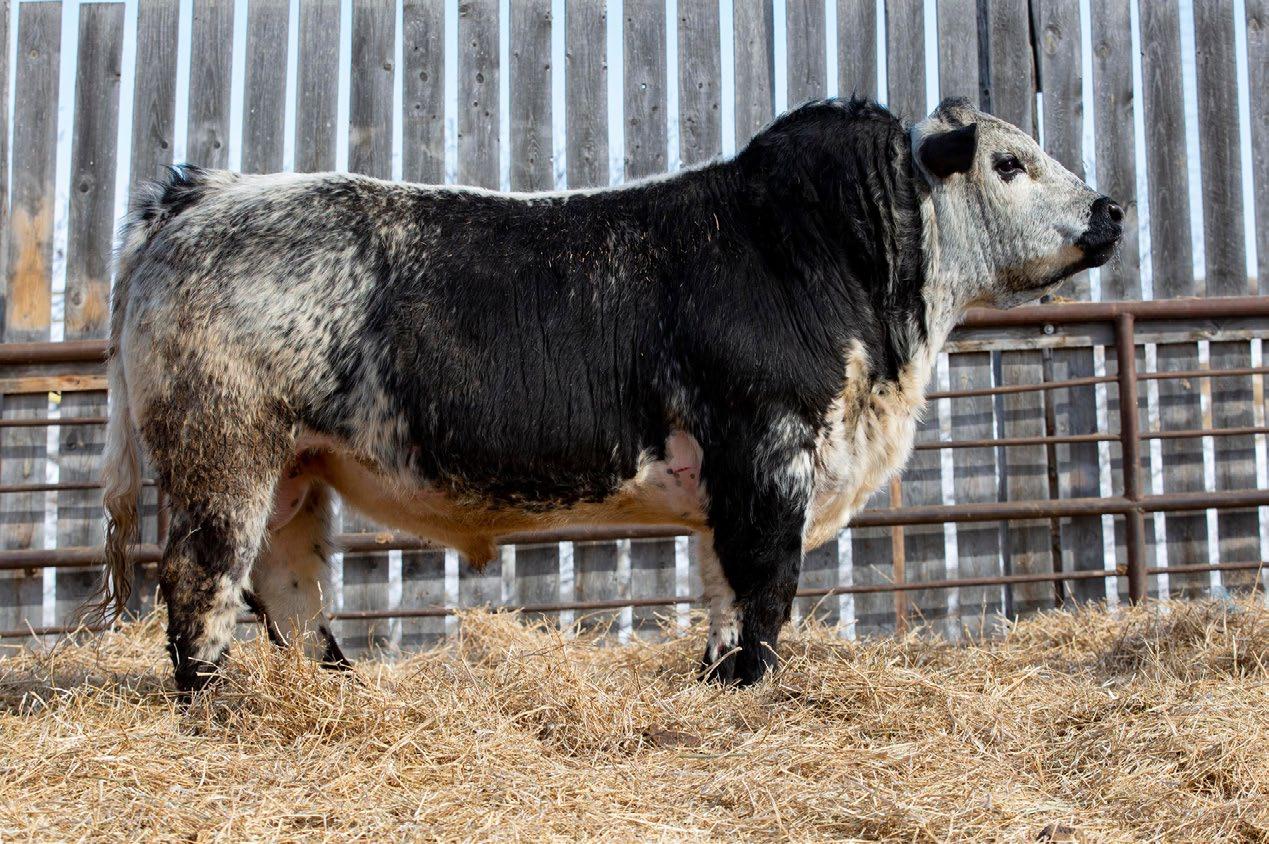

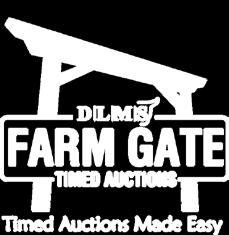








Indeed, the adage 'a picture is worth a thousand words' holds significant weight in the cattle industry. Photographs serve as vital tools for informing, promoting and captivating audiences across various platforms. From sale catalogues to social media posts, from website content to promotional materials like advertisements and calendars, compelling imagery plays a crucial role in communicating the essence of the individual and unique breeding program. Whether captured by the breeder themselves, with the assistance of a picture pen team or entrusted to the expertise of a professional photographer, the quality and effectiveness of these images can profoundly impact their intended purpose.
In the multifaceted landscape of modern cattle breeding and farming/ ranching, proficiency in photography emerges as yet another valuable skill set. As breeders strive to showcase their livestock in the best possible light,
understanding the nuances of photography becomes increasingly essential. Here, in this section, we provide a platform for insights and expertise from professional photographers, camera-clicking fellow beef breeders and other CSPA members. Join us as we delve into the art and science of bovine photography, offering tips, techniques, and inspiration to elevate your imagery to new heights. Let's capture the essence of bovine beauty and excellence through the lens of creativity and expertise.
Keep an eye out for the Idea Exchange in upcoming issues, where we'll continue to present skillful tips and share innovative ideas from the CSPA membership and other recognized leaders in the beef industry on a range of topics. If you have a topic that you would like to see covered in this section, please let us know!
Located in Branchton, Ontario • https://bygracelivestockphotography.smugmug.com/
Having quality photos is super important when marketing your cattle. Many times, the photo is the first thing a customer sees and often, what attracts them to that animal in the first place. Properly representing your animal is key. Here are some guidelines for picturing your cattle on pasture:
• Getting the right angle is one of the most important parts of taking a good picture. Try to position yourself even with the animal. Photos taken when the photographer is not square to the animal may make the animal appear distorted. Equally as important, is being at the right height. Try to position yourself level with the animal. Taking a photo from too high will shrink your subject, and likewise taking one from too low will cut off their top line and affect the appearance of their underline.
• The best position to picture beef cattle in is when they are set up, having both front legs square, and picture-side rear leg back.
• Always shoot with the sun at your back. Profile shots look best when the sun shines directly at your subject, and there are no distracting shadows that may take away from your animal.
• My favourite time to picture cattle on pasture is either early morning, or late afternoon and evening, before sunset. It is much easier to control the direction of shadowing, and cattle are typically more mobile during the cooler hours of the day. Try to avoid shooting in the late morning and mid afternoon.
• Consider the background of your photo. One of the struggles when picturing Speckle Park animals is making sure that their white top line doesn’t blend into the sky. Pay attention to your position, and the landscape you’re working with. Try to keep
the landscape behind them instead of the sky, so the animal stands out from the background. Another thing that will ensure your animal stands out, is having minimal objects or buildings in the background. The more distractions that appear in a photo, the less the animal stands out.
• When possible, take another person with you to help get the animal's attention. To make your animal appear the most attractive, you want the animal looking straight ahead, so have the second person making noise, head-on to the animal.

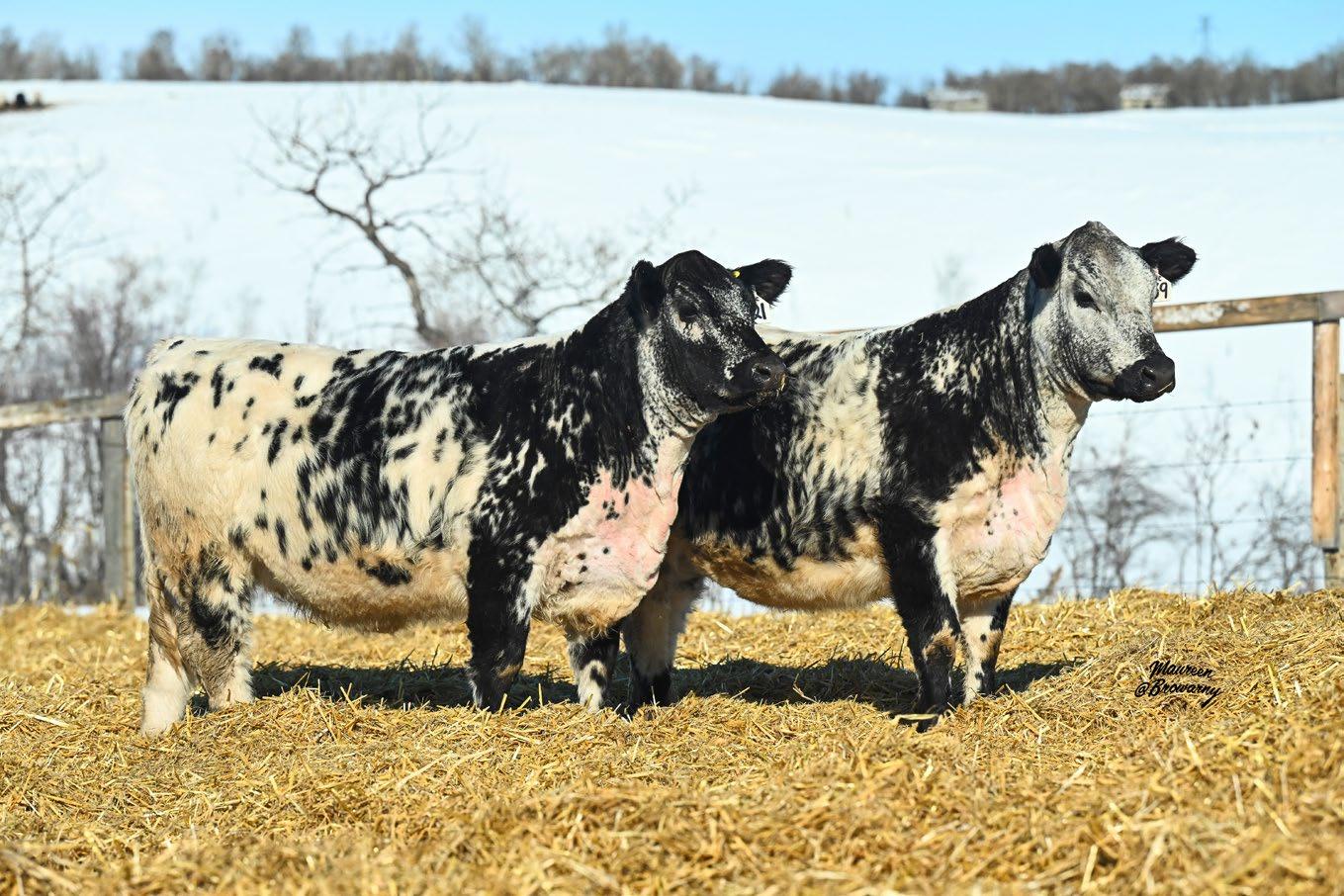
•Your business is perceived by its image. Obtaining a great photograph of your livestock all comes down to presentation. Are the cattle in good physical condition? What do their surroundings look like? Are they clean, have they been clipped? Does your photographer or camera gear have the ability to capture all of your hard work accordingly?
• What does it mean to be a herd bull or a brood cow? Herd bulls look best in good physical working condition, while being photographed on green grass. To me, that is the definition of an attractive bull representation. They’re at the peak of their abilities. Hormones are flowing nicely, and they look like they should…bulls! Breeding females look best when they are in good physical condition, and milking. Again, often on green grass. These conditions are, after all, the soul purpose of breeding cattle. And so, it is ideal to represent them to the very best of their abilities.
• Sale animals obviously need to be photographed in a time frame that works with your marketing plan. This is the time to pull as much interest and profit out of them as possible. Photographing on a sunny day, with little distractions surrounding the cattle is the most ideal. Clipping the animals helps to create a clean lined look and more striking final image that naturally will draw the attention of more eyes. However, clipping cattle is not entirely necessary, and does work in some areas and marketing plans.
• The single most important part of getting a great image is the conditions. Weather, grass, clean ground, animal presentation and physical condition, etc. After that, it is your photo area, surroundings, and photo assistants. You could have every element near perfect, but if your photo pen assistants struggle to help pull the best attributes out of those animals, you’ve only made it to 50% of the final outcome. Not everyone is a great photo pen help, and oftentimes the people you don’t expect to be great help, truly are. Hiring a professional photographer is ideal, as they are trained to be a part of your marketing plan and understand what makes or breaks a powerful image. After all, this is simply product representation! What does the world need to know about your product and how does the customer perceive it?
Located near Saskatoon, Saskatchewan www.showchampions.com
The average person takes 22 photos a day. More than 3.2 billion images, and 750,000 videos are shared daily.
The power of one image can make or break a sale, there is no debating that!
• An ideal photo pen is tidy, with a clean looking fence. Broken boards and pieces distract from the final look, and at the end of the day can read negatively to the audience. The cattle should have enough room to be comfortable to travel in and take a look around. If the pen is too small, the cattle will tend to have a more compacted look, and not feel comfortable to come in, look around, and pose comfortably. A popular method is to have cattle standing right along a wind-fence. This, however, is not a powerful or striking look. The fence sucks the power out of the cattle and makes them look small. I like to pull the cattle off the fence, utilizing perception. The subject is close, and the background is far, thus keeping your subject as the focus. Ideally, the background is as open and free from distractions as possible. Multiple different poses and angles are necessary to try, as the shadows can really add or subtract shape and dimension.
• Post-processing of your photographs is very important. Cropping properly, exposing and colour correcting anything that was not able to be done in camera. This is an area I excel in, handling most all ShowChampions on-farm images with over 17 years of experience in photoshop. Photoshop… a subject for another article!
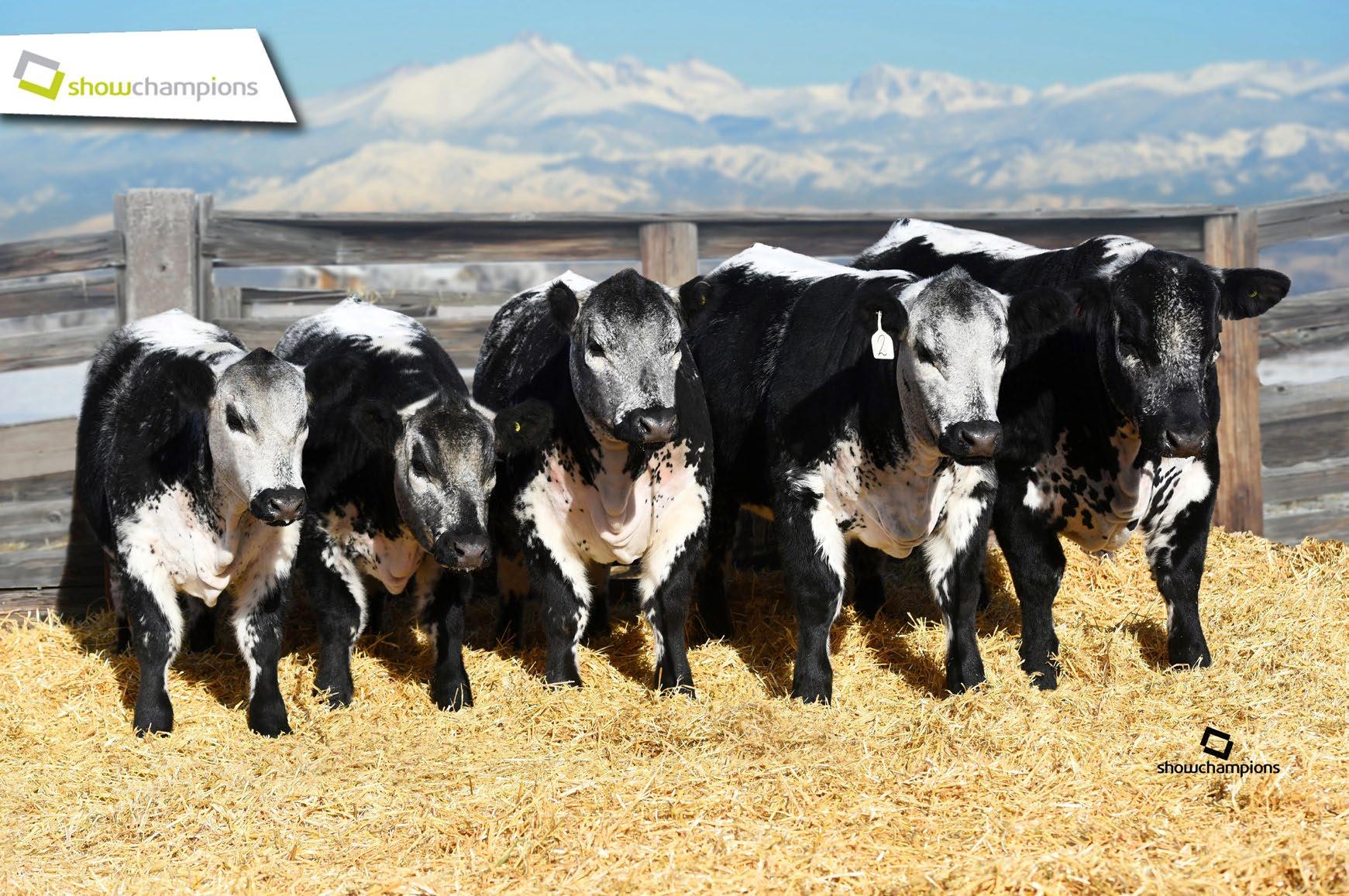
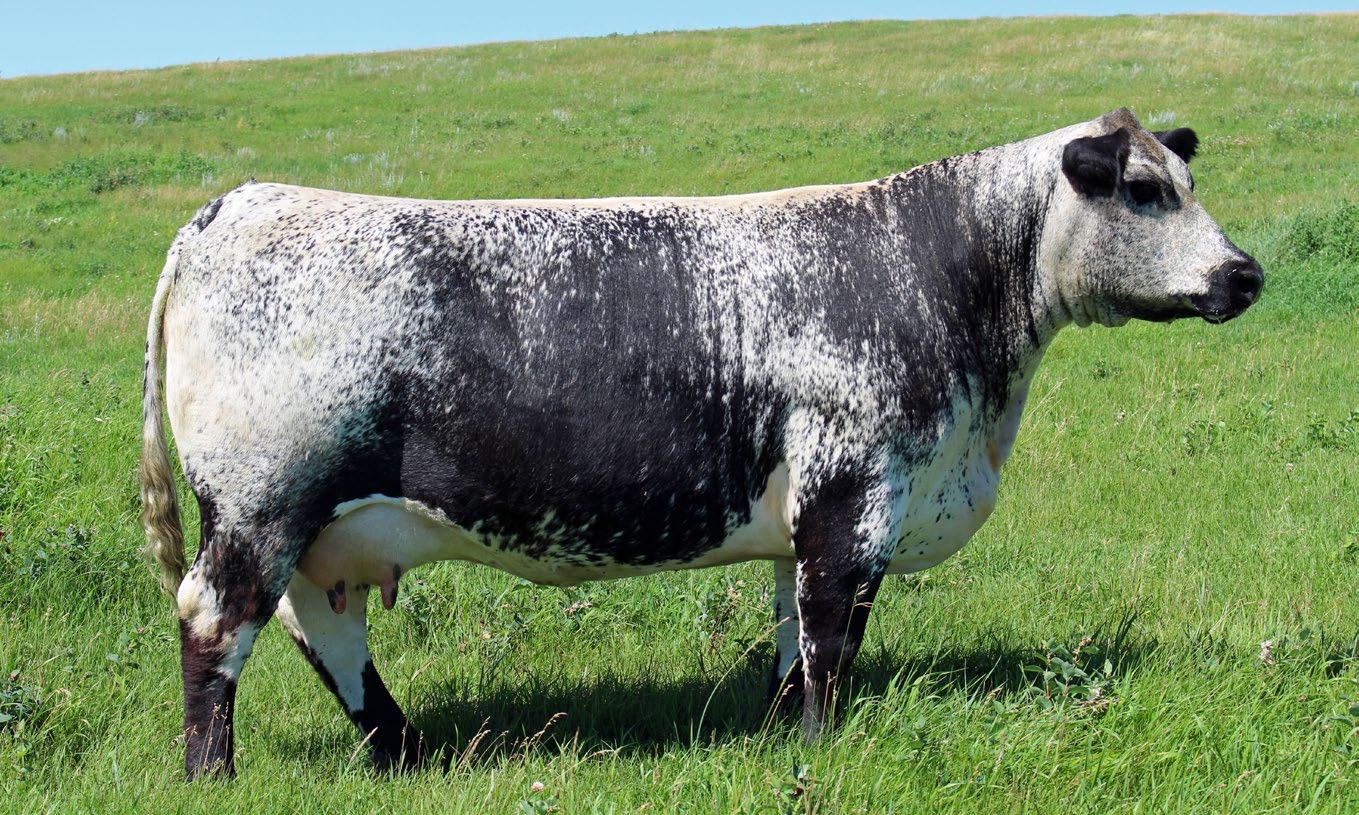
• Have the animal set up properly
You want an animal set up so that their front legs are close to square with the front leg farthest from the photographer set slightly back, so it is visible. The far-side hind leg should be forward, with the hind leg closest to the photographer set back to create a “scissored” look. From there, have your helper get the animal's attention - you want the animal to hold their head high, looking forward at an angle where the far-side ear is just visible to the photographer. This setup will best display your animals topline, back leg set, shoulder, front-end, udder or testicular development, and navel/sheath.
• Photographer positioning
The photographer should be perpendicular to the animal and holding the camera level to the centerline of the animal. If you are taking the picture from an angle above the centerline, you will make the animal appear smaller than it really is. In contrast, if you are below the centerline, you will make the animal appear tighter middled and longer legged.
When picturing a cow, you want to be at an angle where her far-side teats are in line with the teats closest to the photographer, this will make the udder look clean. If they are not lined up it can give the illusion of larger teats and a sloppier udder. When picturing a bull, you want to be at an angle where the testicles are visible as it showcases testicular development.
• Lighting
Lighting is crucial to the success of a quality photo. Ideally, you want to set up so that the sun is shining on the photographer's back, which would result in it being casted onto the animal’s broadside with little to no shadows. This will ensure the color of your animal and all its features are displayed clearly.
Located in Lloydminster, Alberta www.greenwoodspecklepark.com
As the saying goes “a picture is worth a thousand words” and it could not be truer when it comes to the cattle industry. Having quality photos is vital to a breeding program as it is the first thing, and sometimes the only thing, people from around the world will see. Here are a few things to take into consideration the next time you go out to picture your animals that may help improve the outcome of your photos.
• Background
One thing that detracts from a quality photo is a background full of distractions. Avoid picturing in an area with buildings, vehicles or other animals, as this will take away from the animal in focus.
• Patience
Patience is key - remember that animals often reflect the emotions of the people working with them. If one is not cooperating, it is best to move on and come back to them once they have settled down.
While I do not consider myself a professional by any means, these are some of the tips I have learned along the way from time spent with some of the best photographers in the industry, as well as studying their work. However, there is no substitute for patience and practice - but remember, "Practice does not make perfect. Only perfect practice makes perfect."
- Vince Lombardi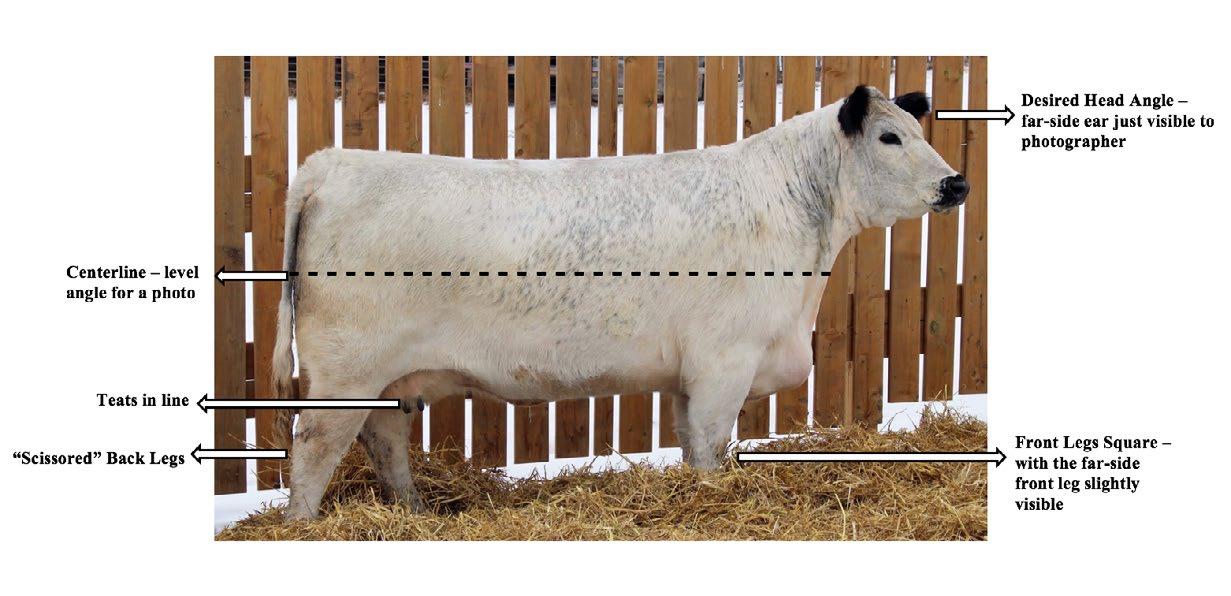
Located in High River, Alberta
https://www.gonewestmedia.ca/
First impressions are one of the most important keys to success in our day to day lives, whether in social settings or professional, a negative first impression can be tough to beat going forward. That’s why a quality photo of your animal is so important, that is your first impression. Whether a quick candid photo in the pasture, or a sale photo in a catalogue, that image influences the viewer going forward not only on that animal but your operation, you as a producer, and even your breed.
Seems like a lot of weight for an image to hold, but whatever we choose to print, post or snap, should always be viewed as a marketing opportunity for every aspect of your operation.
The most common photos taken of cattle are obviously sale photos, and to help your photographer help you, keep in mind these tips before your next picture day.
• Contact your photographer to book early. Once you know your catalogue deadline, book your photo day for at least a week to 10 days before that deadline to allow for weather delays and editing time.
• Do initial clipping early. Show cattle can be groomed and fitted day of, but don’t wait too late to peel heads on the rest of the bull pen, a little regrowth photographs better. Also, keep an eye on bedding and tag build up well ahead of photo day and adjust. Some tag can be edited out, but not all.
• Plan out where in your yard will be best for photos, not just the easiest. Level ground, secure fencing, just enough ground cover, whether straw or grass, and plain backgrounds are all important to location.
• Quality pen help is key! Most successful photos happen because of the enthusiasm of the person catching ears. A lot of embarrassing noises must be made, and what happens in the pen stays in the pen.
• Have patience. Some animals will picture in 30 seconds, other animals might take 30 minutes. Trust that your photographer is always doing the best for you. Your success is our success.
Located in Keady, Ontario • braedenweppler@gmail.com
The two essentials when becoming a good photographer are both patience and cattle sense. Livestock photography isn't for everyone and can become a stressful day for all those involved pretty quickly. Below I will try and outline some brief points to help avoid those stressful situations and to enhance your photography experience.

• To start, a good picture pen is essential. What I mean by this is if your pen is too large you will spend more time running yourself and the livestock around than getting the desired picture. If the pen is too small the animal won't set up naturally and may feel confined. The size of the pen is also affected by the distance required between you and the animal you are picturing. Each camera lens is different and may require different distances to ensure everything you desire is in the frame. The picture pen ideally has a clear background, as a cluttered background (i.e. barns, fence lines, other cattle) doesn't only look messy, but may also take the focus away from your camera/the animal being pictured. A clear background also makes editing halters off much easier.
• Make sure you plan your picture day in advance. A good crew goes a long way, especially when picturing a large group of animals. People that know how cattle act and who can get and keep their attention without getting them worked up makes things run smoothly. Always plan for the weather, as lighting is key to a nice crisp clear photo. The sun should always be to your back to avoid shadows and you should adjust your position throughout the day to maintain that. Picturing too late or too early in the day will affect how bright or dark your photos are. Midday is typically a hard time to get a great photo as the overhead sun creates shadows on the sides of the animal.
• The correct stance as a photographer is the most important part of a great photo. You should be perpendicular with the animal, their front feet planted square with their back feet off set with the closest leg to you extended back. This position showcases all the animals’ attributes. Your photos should be taken at the same level as the animal. Looking down on the animal will make them appear smaller than they are and if you are positioned too low, that will affect the lighting and view of their dimension.
• As far as equipment goes, you do not need the most expensive camera and lens. That being said, if you are taking photos that will be published in a catalog, a cell phone doesn't offer a high enough resolution.
Now, if all these steps for preparation and positioning are taken, you will be set up for a successful picturing experience. But take it from me, it takes time, patience, and a whole lot of practice.
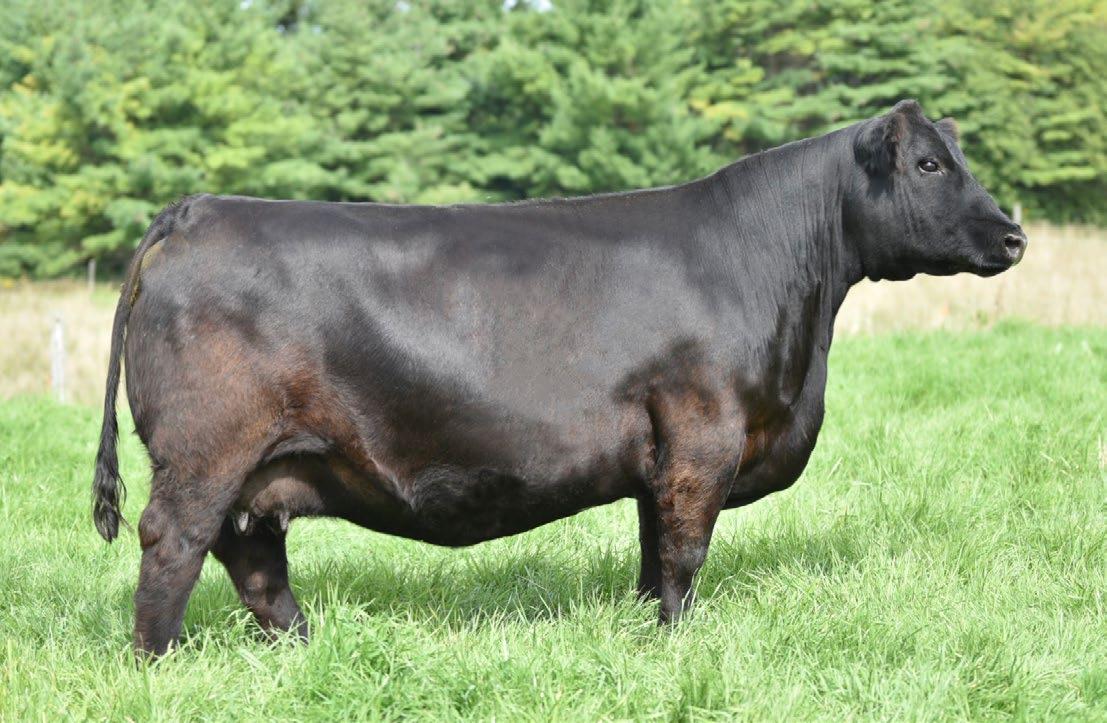


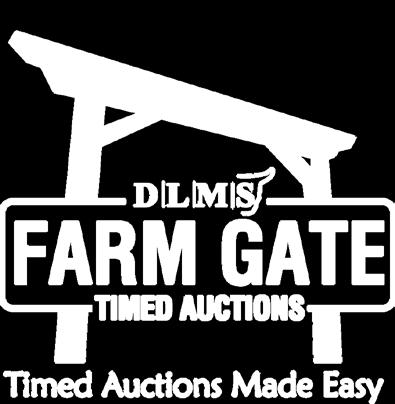
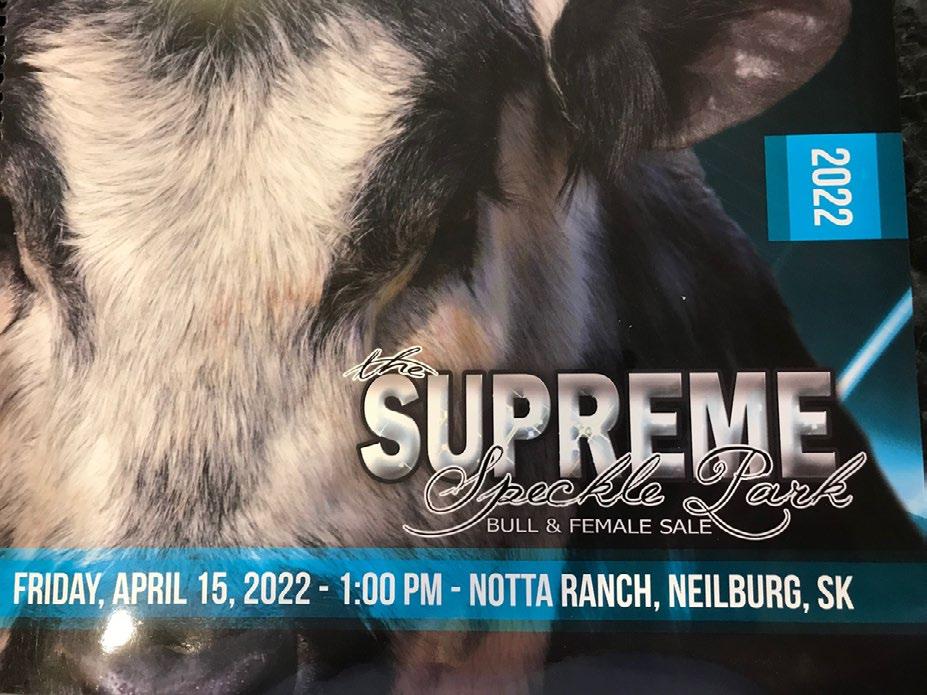
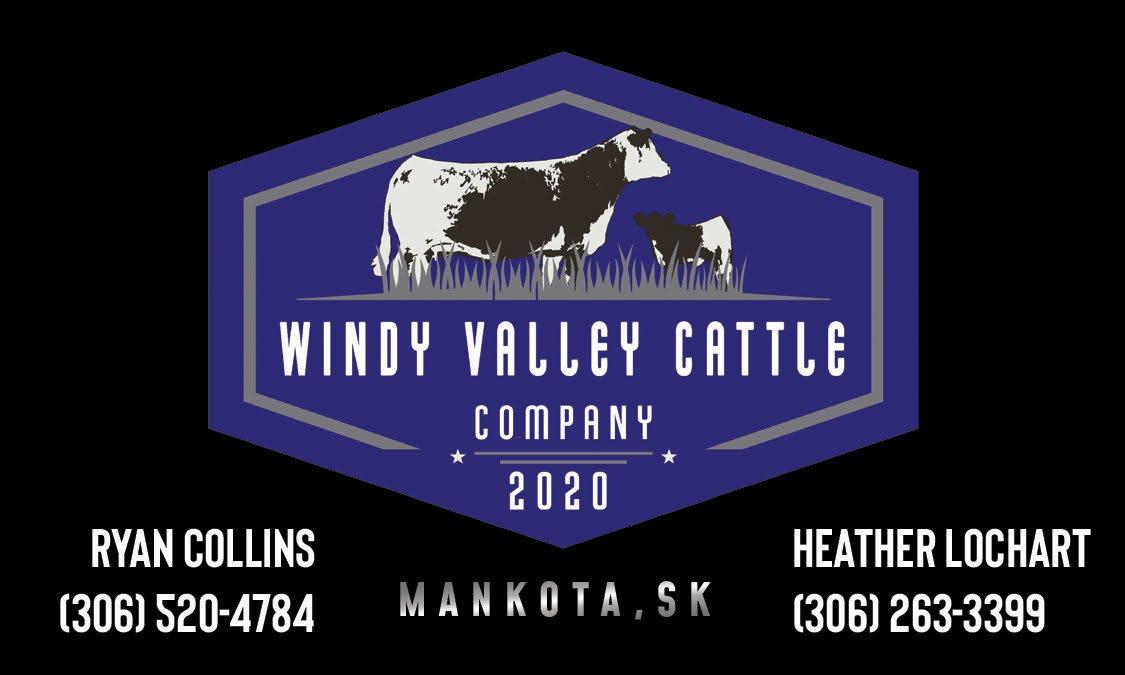

October 7-9, 2023 Rockton, Ontario

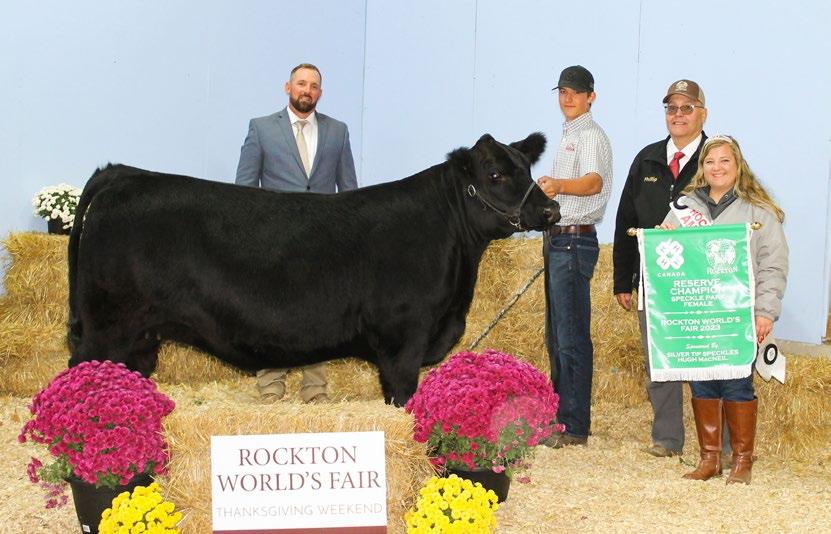
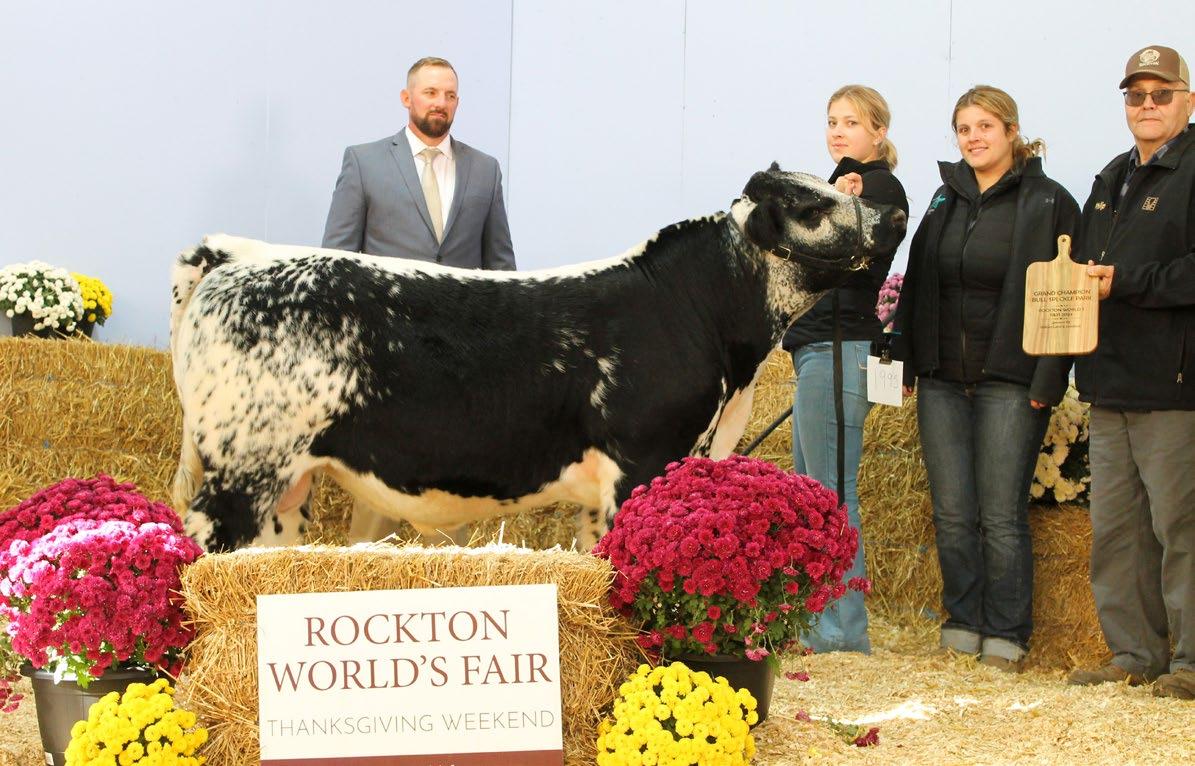

October 8-16, 2023 Victoriaville, Quebec
RESERVE CHAMPION FEMALE
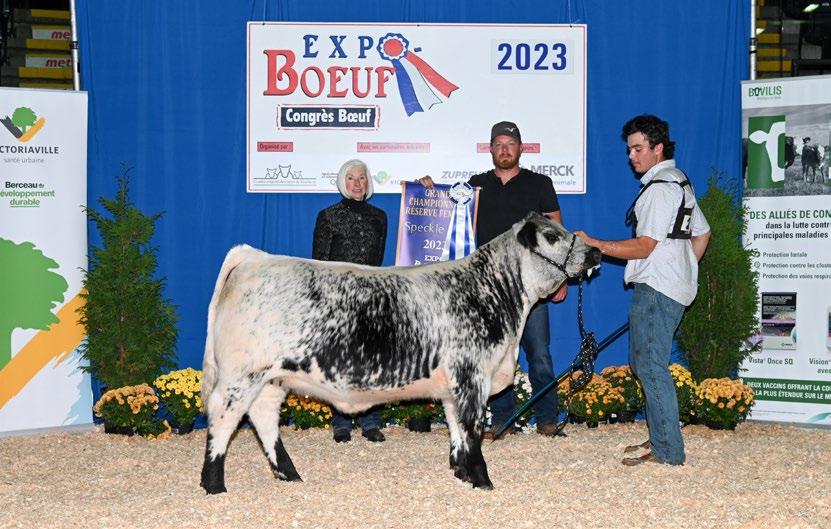
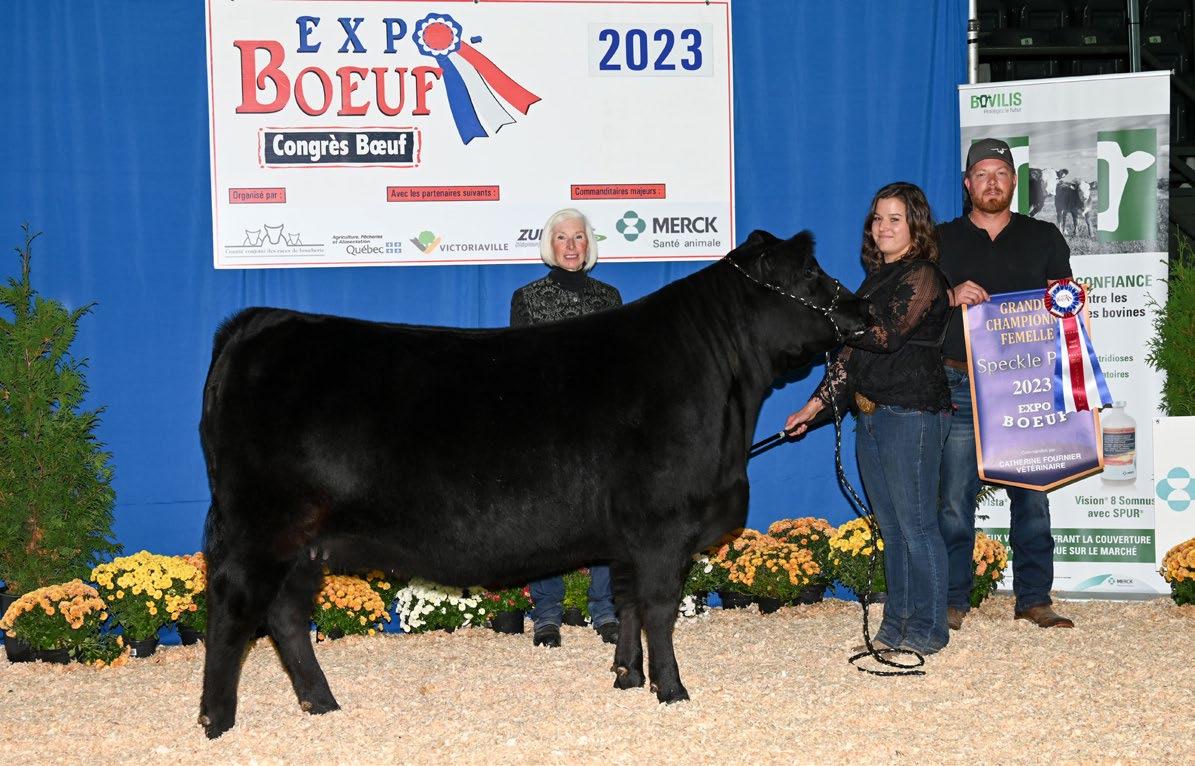
RESERVE CHAMPION

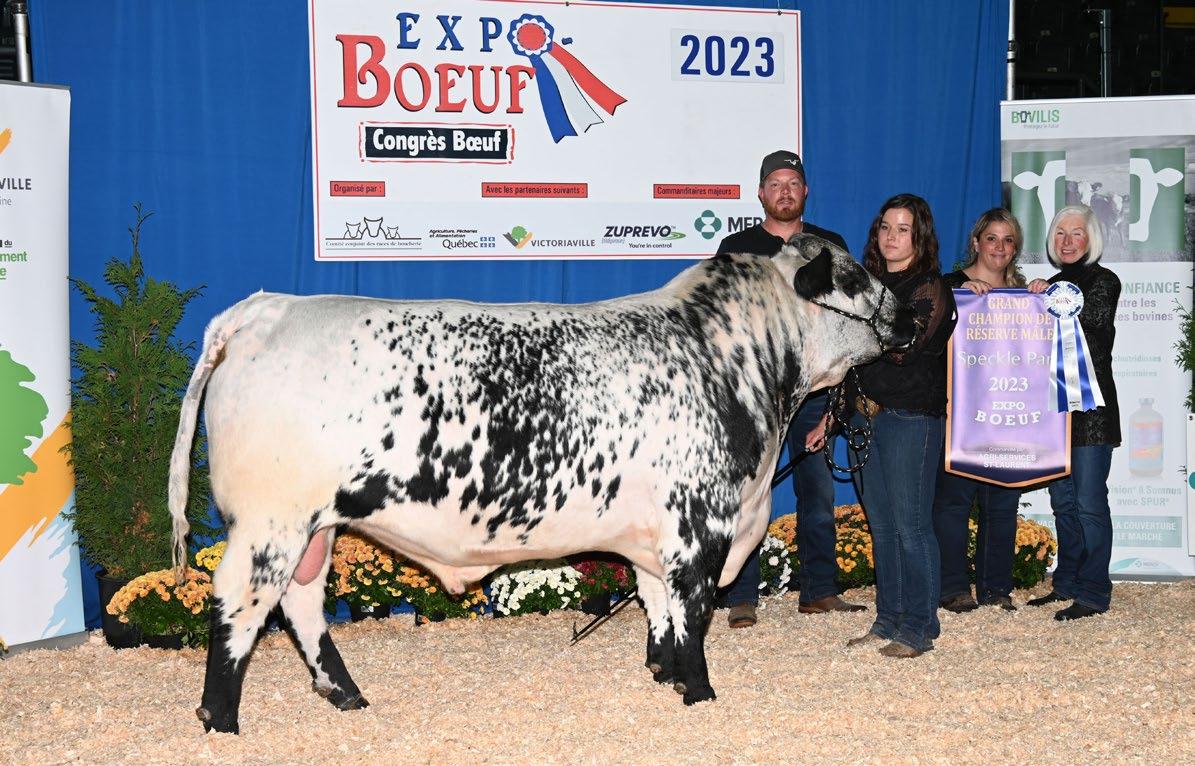
October
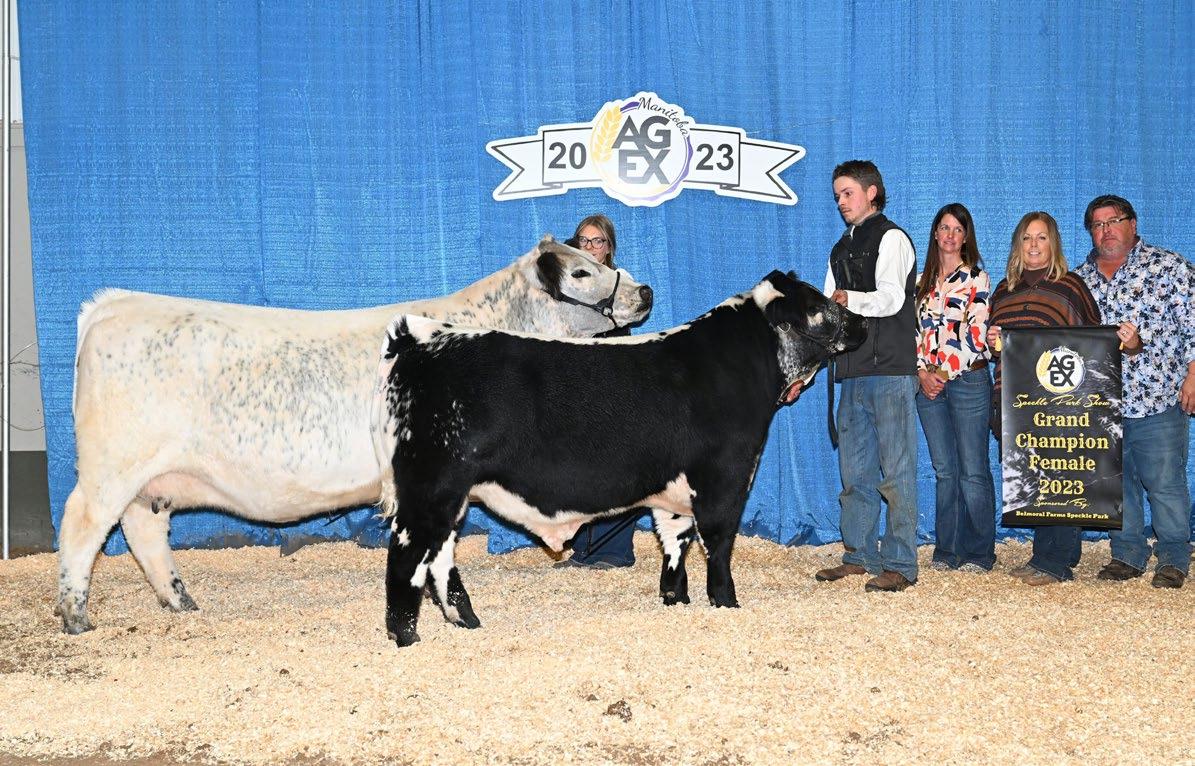
RESERVE CHAMPION FEMALE

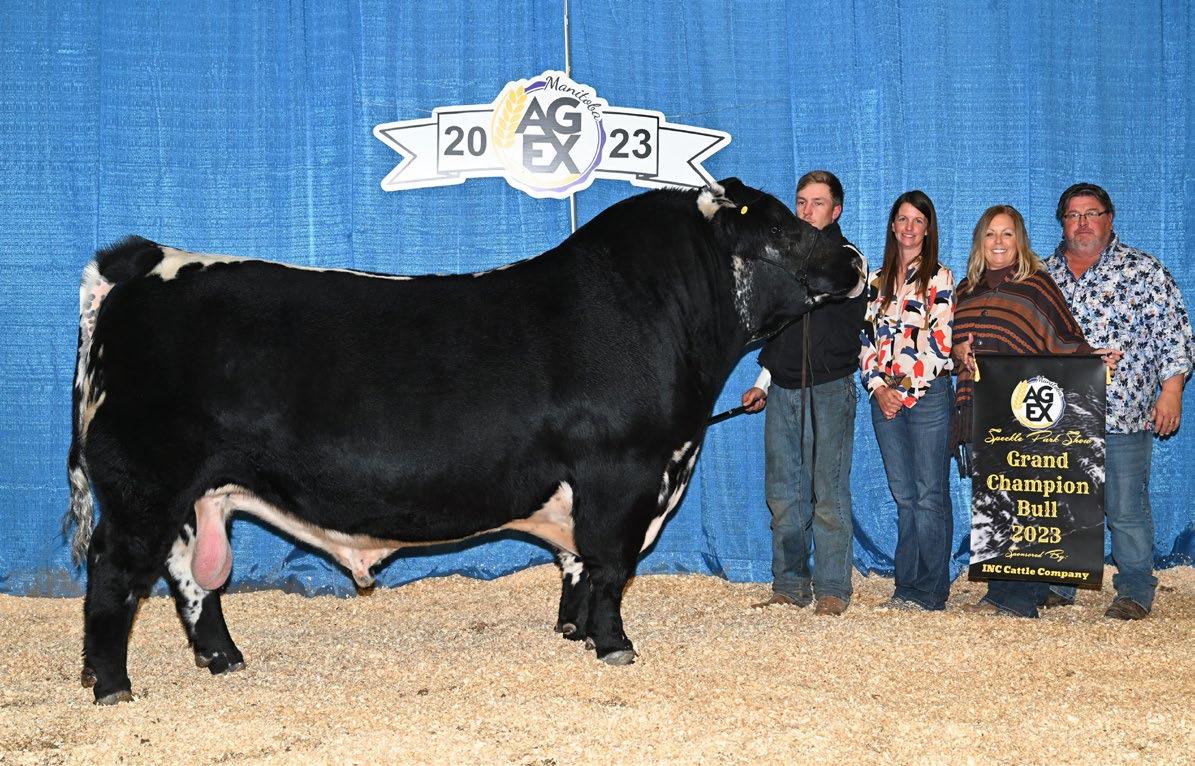
RESERVE CHAMPION BULL
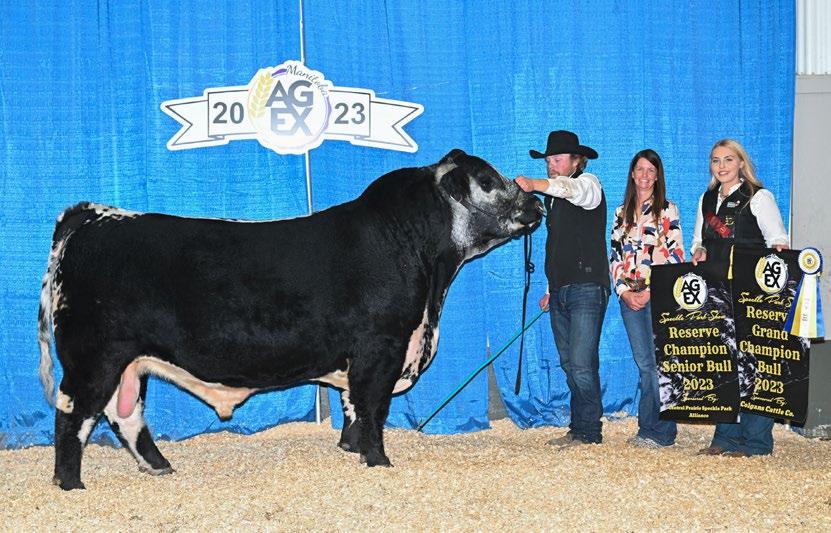

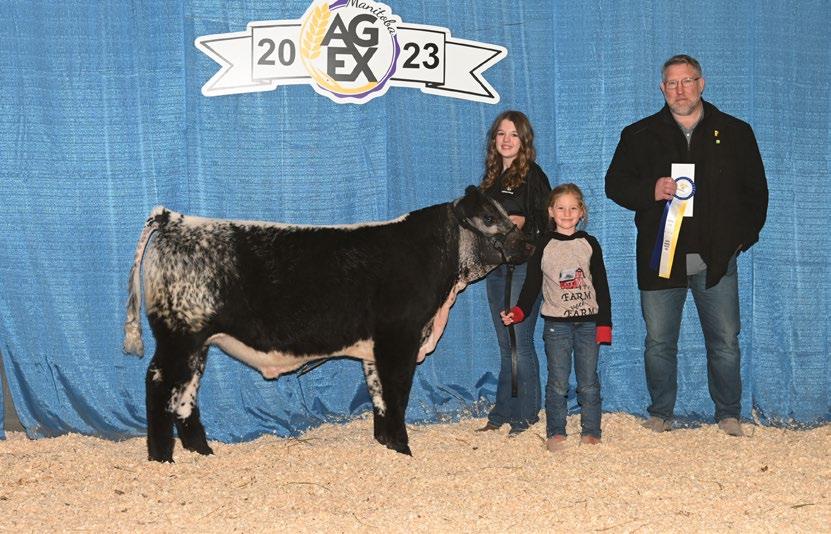
RESERVE PROSPECT STEER
CHAMPION SPECKLE PARK FEMALE
Junior Show, Speckle Park Division
Prairie Bell Lilo 1L Cagen Sauter
Prospect Steer & Heifer Show (All Breeds)
Wilcox Steer 49L Emma Wilcox
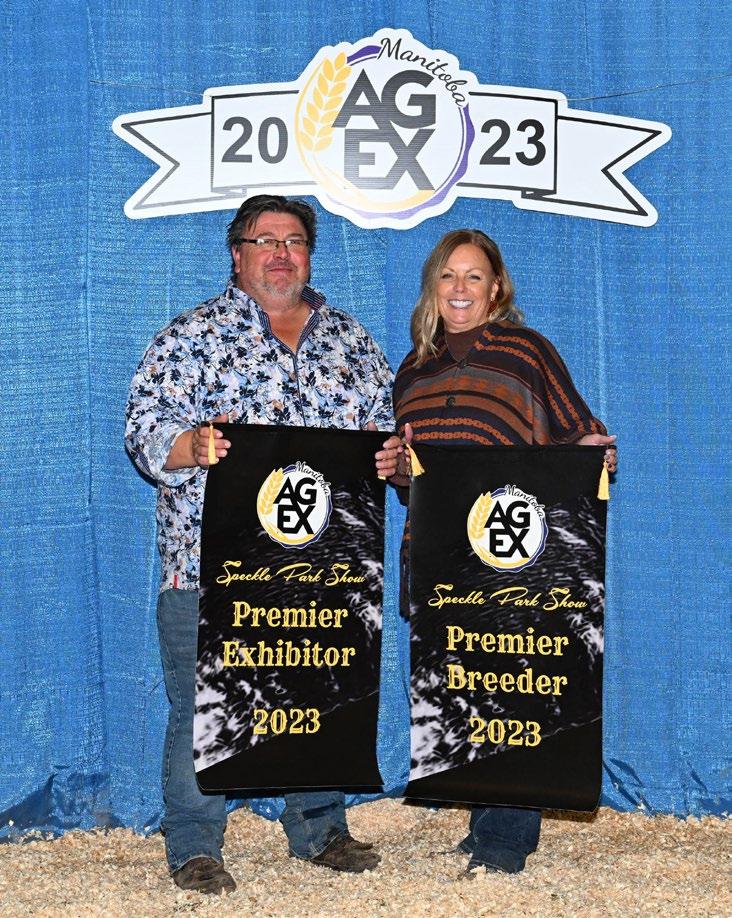
PREMIER BREEDER & EXHIBITOR

November 1, 2023
Lloydminster, Saskatchewan
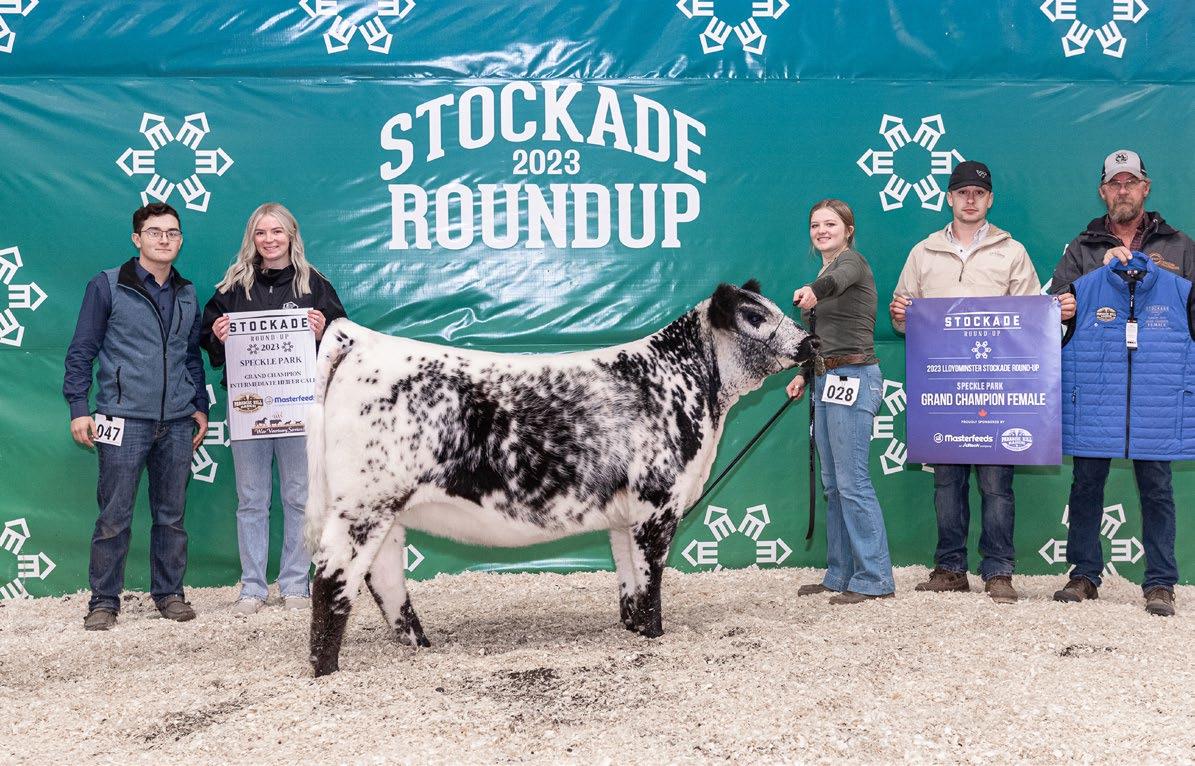
RESERVE
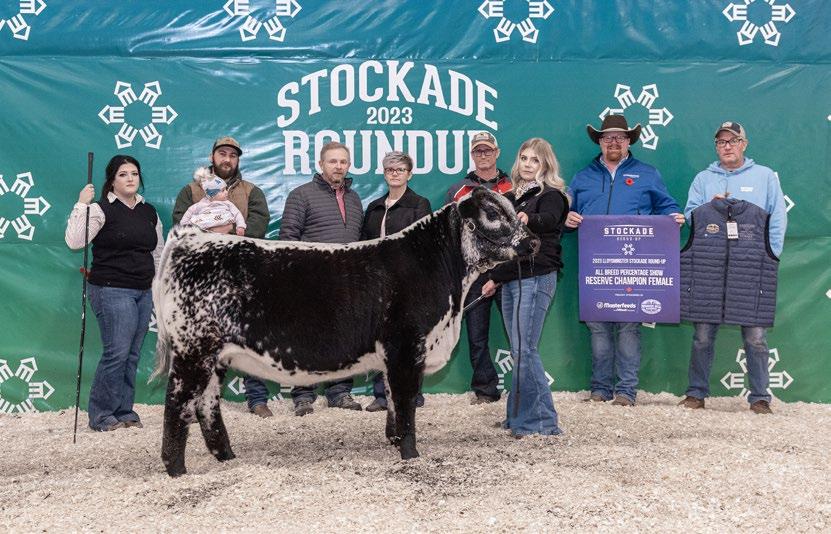

RESERVE
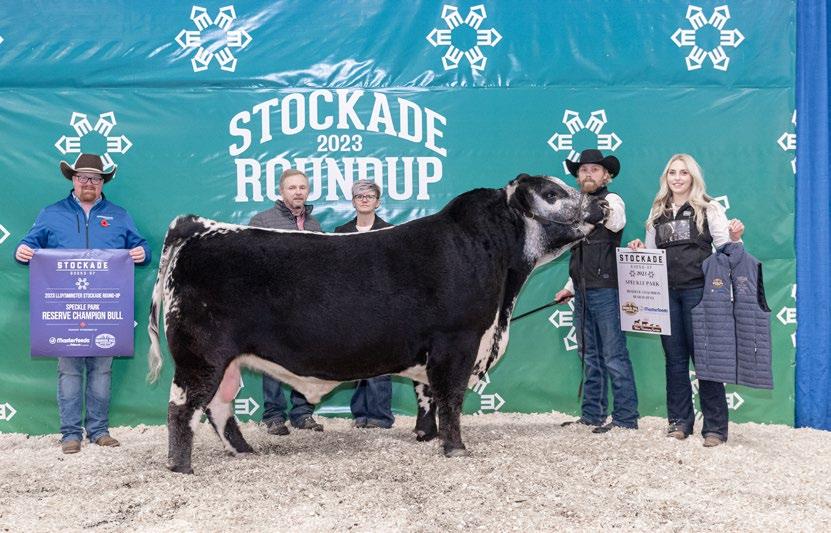
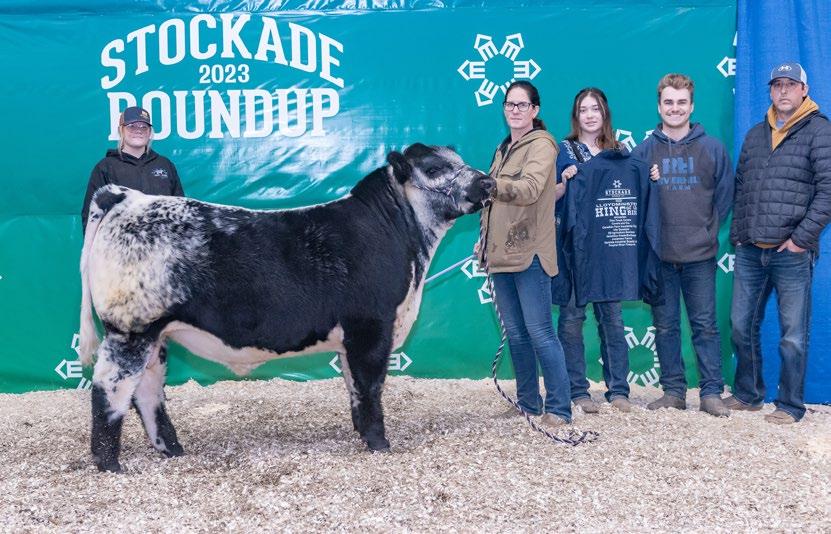
PRINCESS OF THE PRAIRIES (All Breeds Competition)
QUARTER FINALIST (NO PHOTO)
KING OF THE RING All Breeds Competition • Speckle Park Division
CHAMPION SPECKLE PARK BULL (NO PHOTO)
GW/ID Nightfall 31L Greenwood Speckle Park & Ivery Downs
RESERVE SPECKLE PARK BULL (PICTURED LEFT)
Carmark Laredo 101L Carmark Cattle Co.
Colgan’s Krizia 22K Colgan’s Cattle Company Corp.

PREMIER BREEDER & EXHIBITOR
Colgan’s Cattle Company Corp.
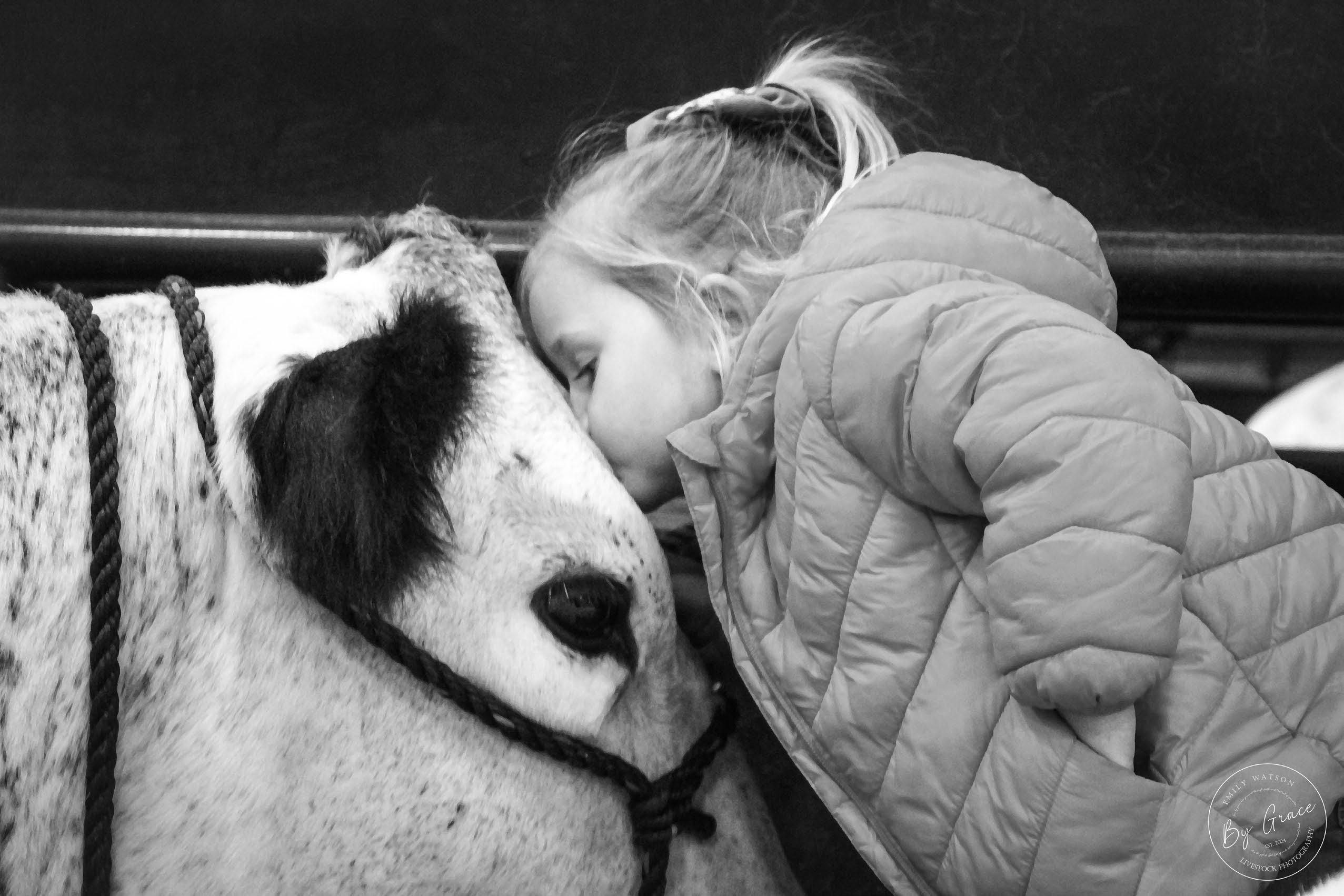
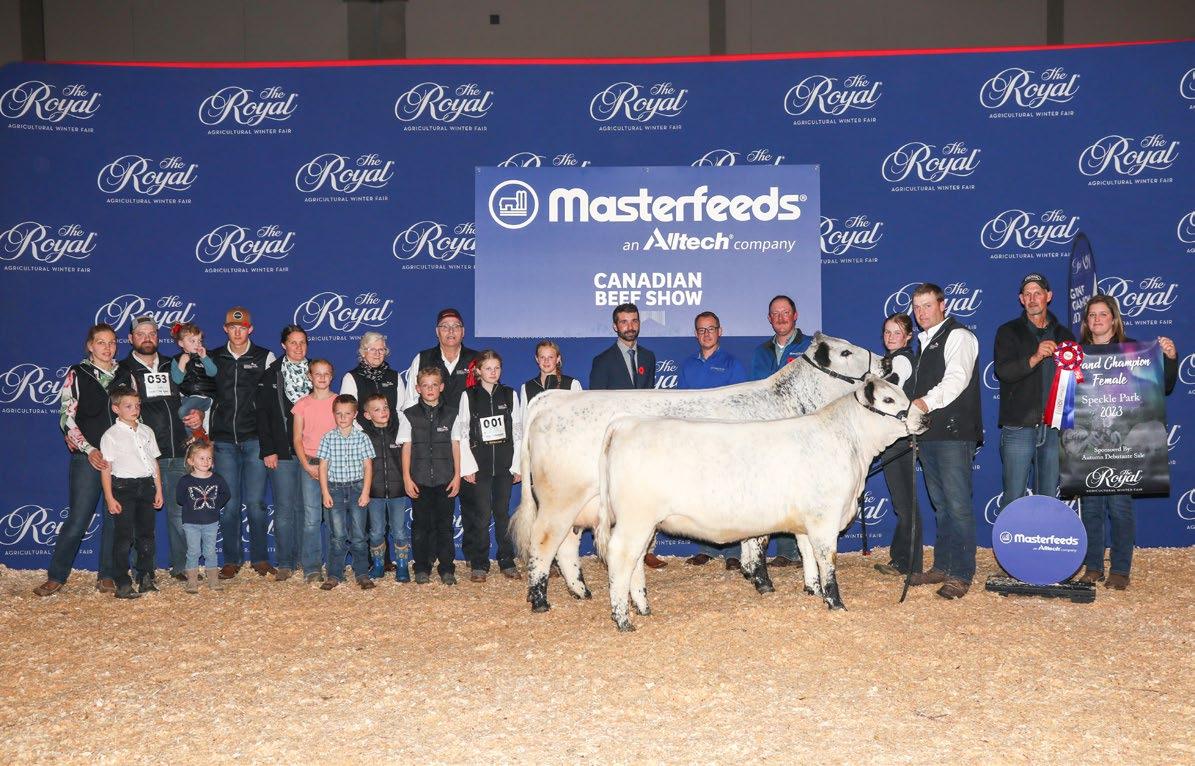
RESERVE CHAMPION FEMALE
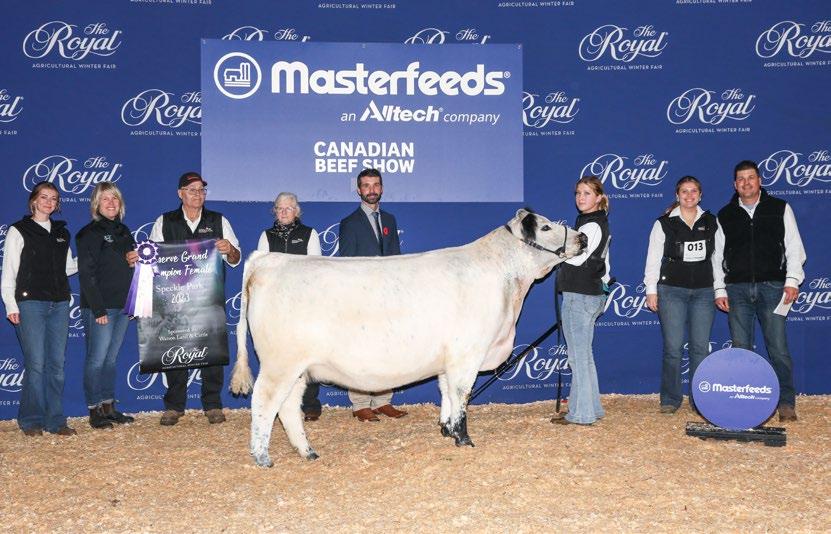

RESERVE CHAMPION BULL
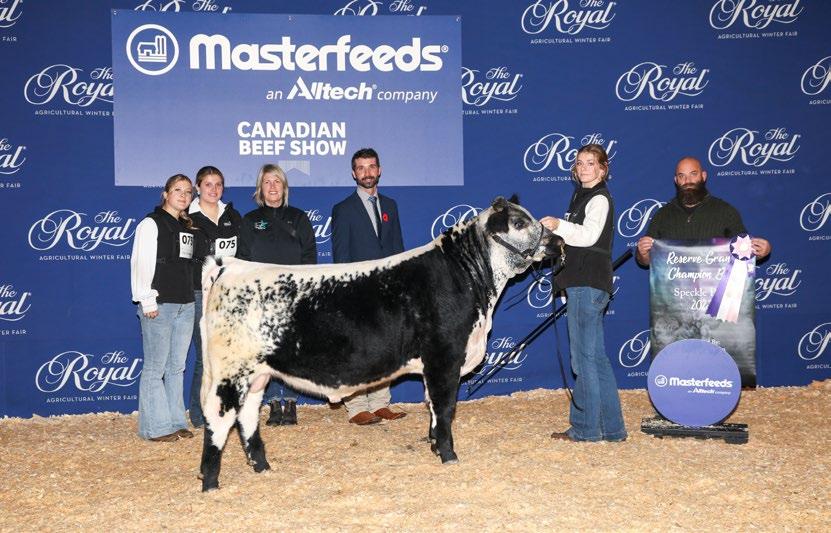
November 2-13, 2023 Toronto, Ontario
Judge Chase Miller (Speckle Park Show), Paul Stafford (Charles John Watson V Memorial Award Show) & Jirl Buck (National Junior Beef Heifer Show)
Photographer Showchampions
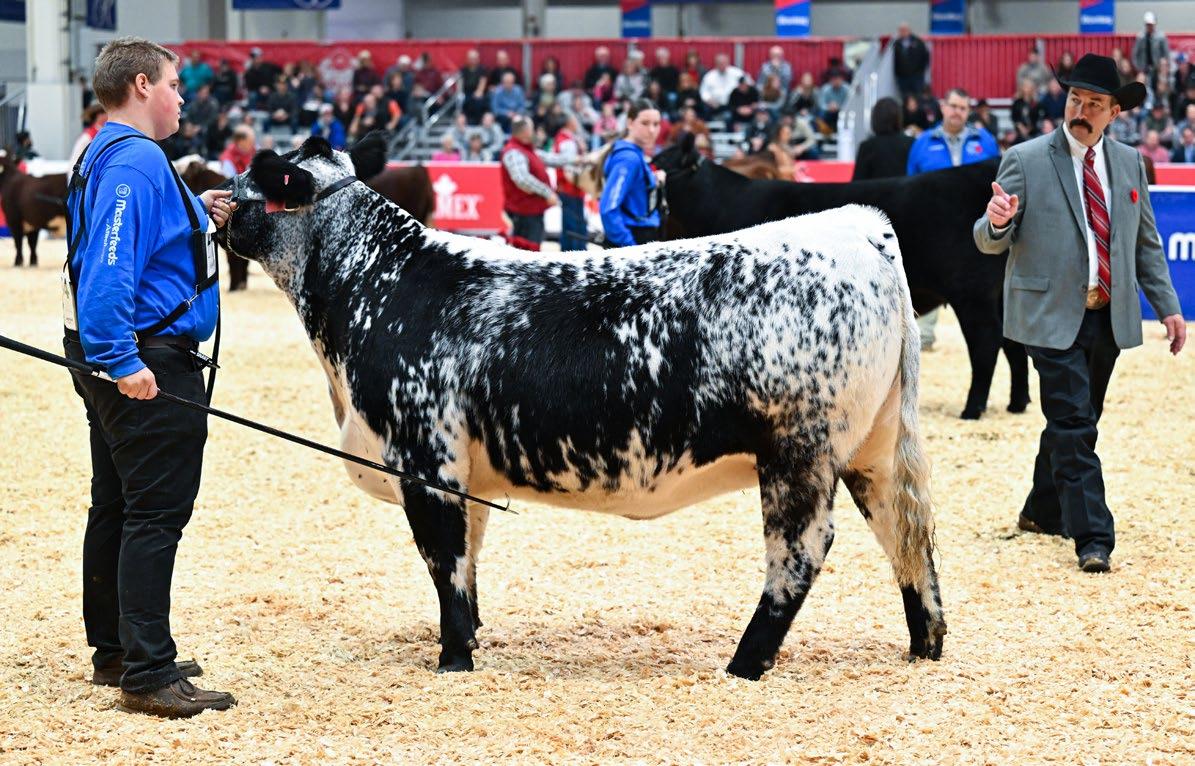
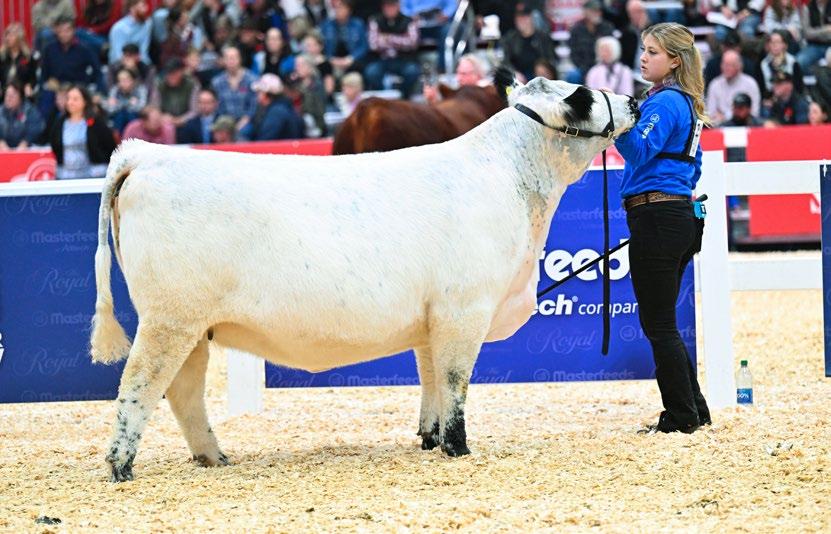
BRED AND OWNED DIVISION, THE NATIONAL JUNIOR BEEF HEIFER SHOW
Blizzard 121K
Faith Walker

November 8-11, 2023 Edmonton, Alberta
Judge Riley Lafrentz Photographer Showchampions
GRAND CHAMPION FEMALE
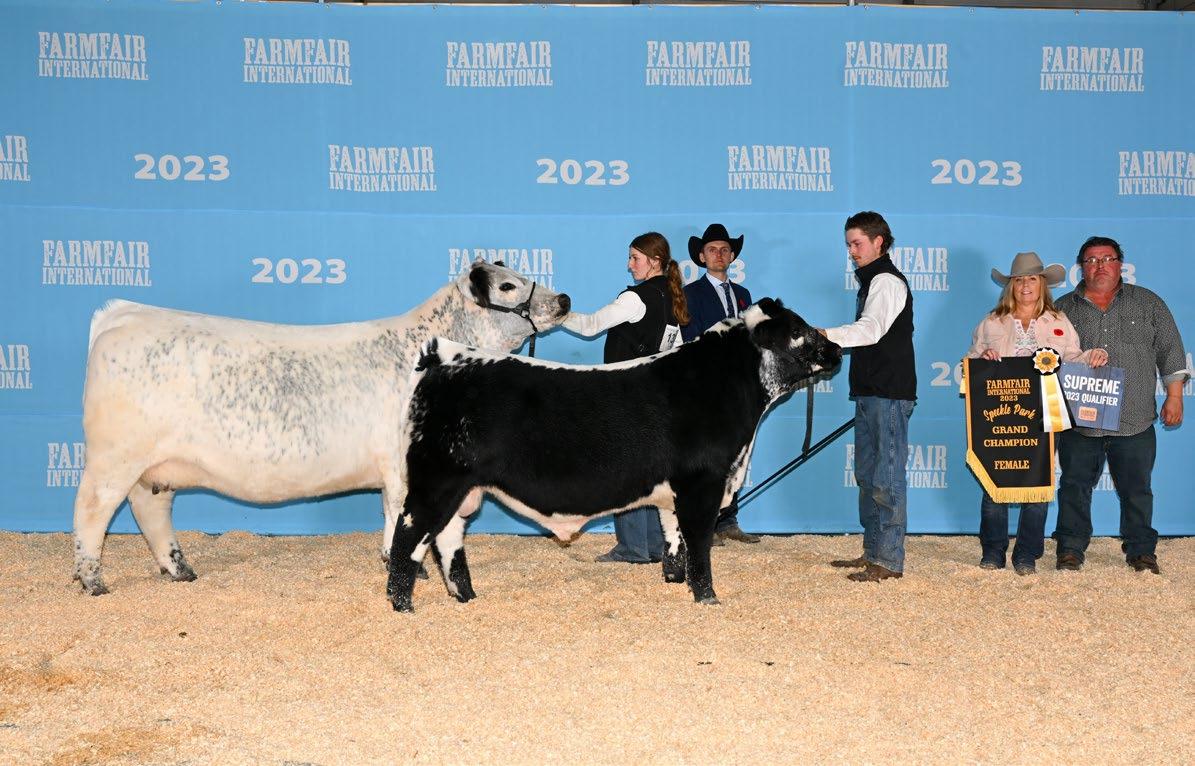
INC Carnival Ride 67J INC Cattle Co.
RESERVE CHAMPION FEMALE
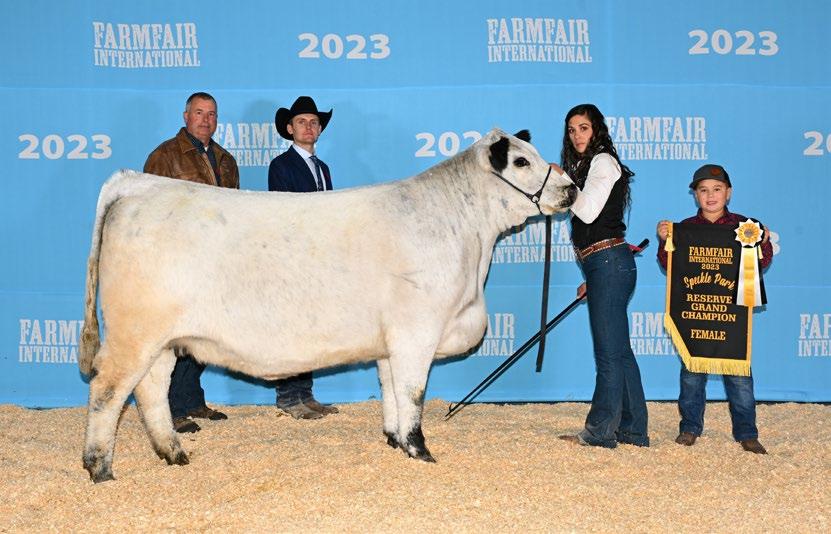
GRAND CHAMPION BULL
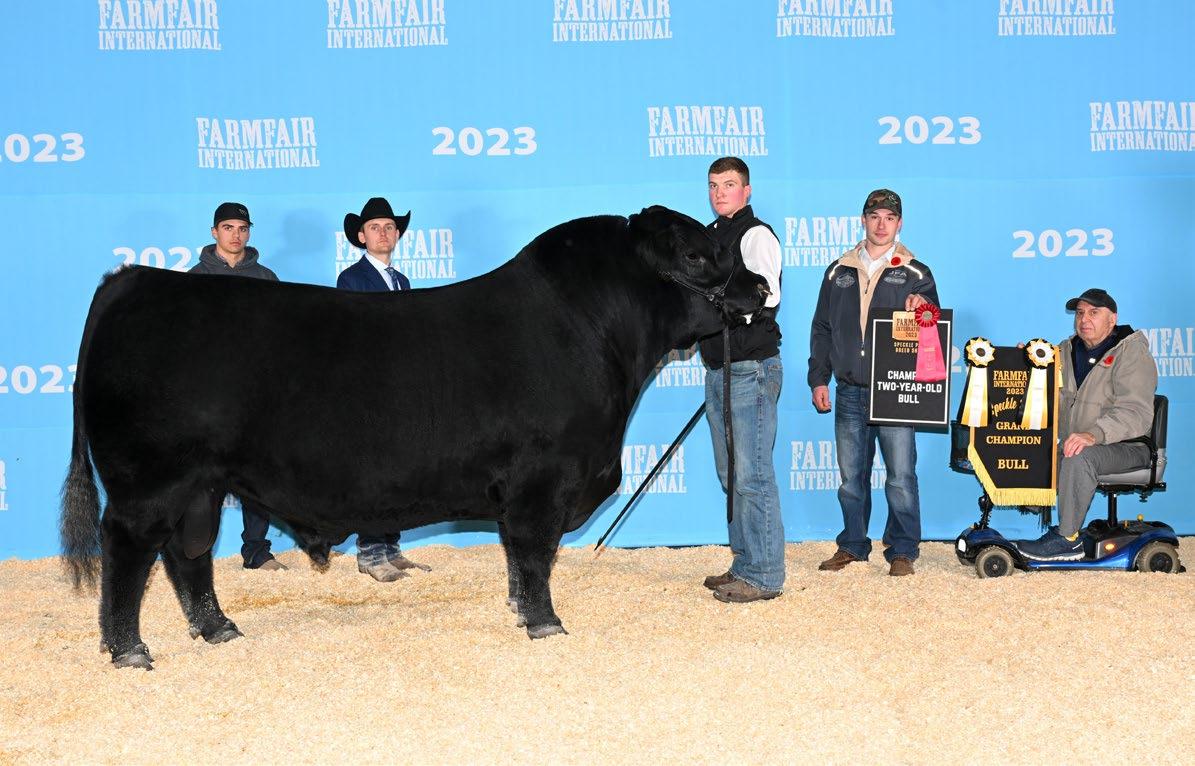
RESERVE CHAMPION BULL

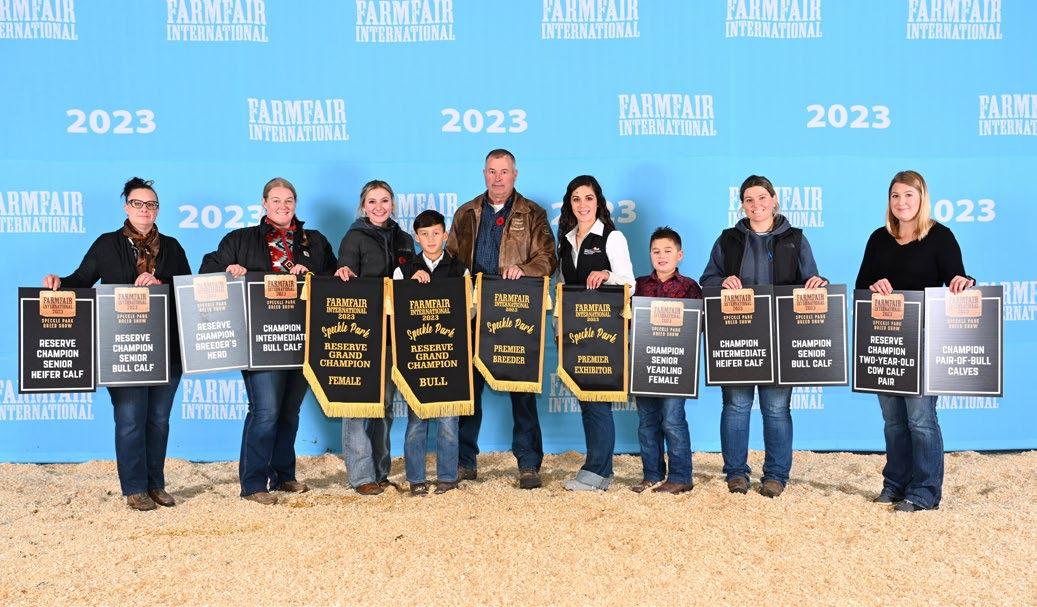
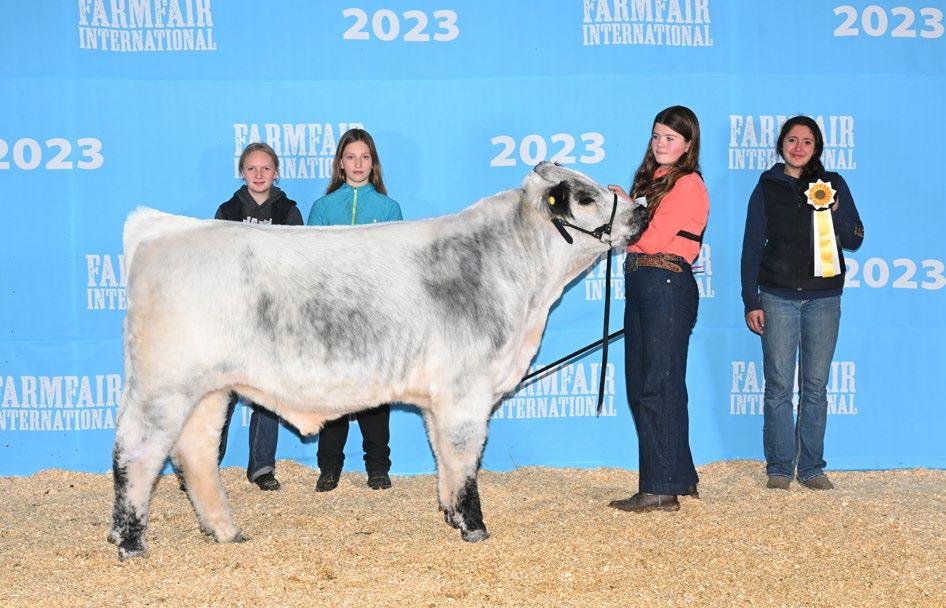
CHAMPION SPECKLE PARK INFLUENCE PROSPECT STEER
Wheeler Peta Kendall-Price
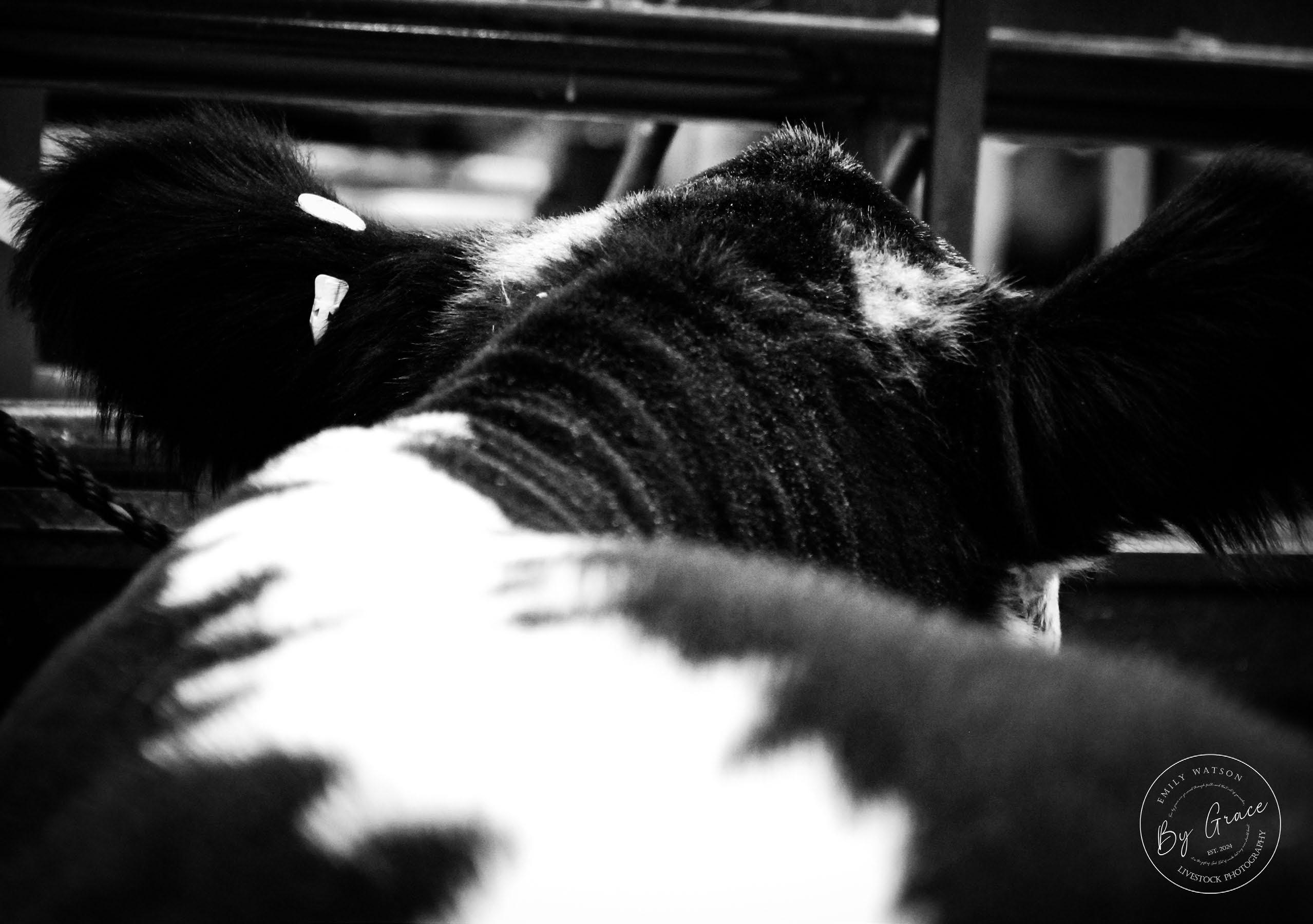

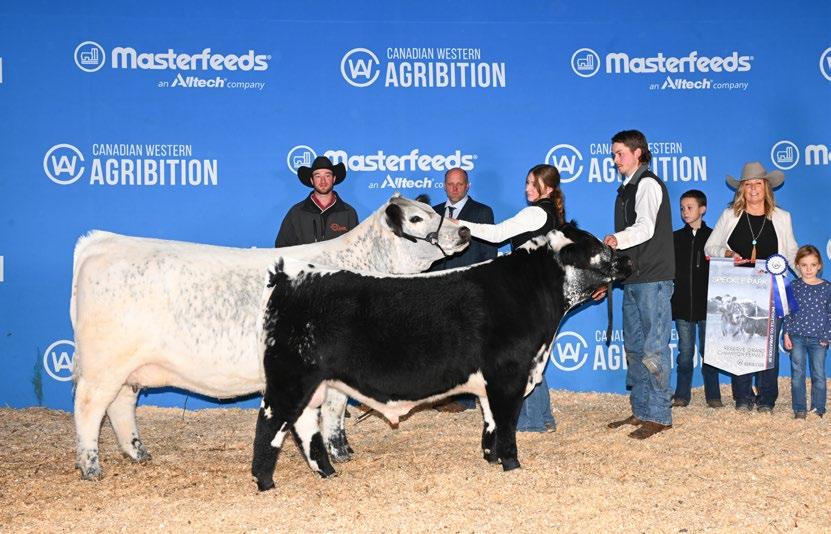
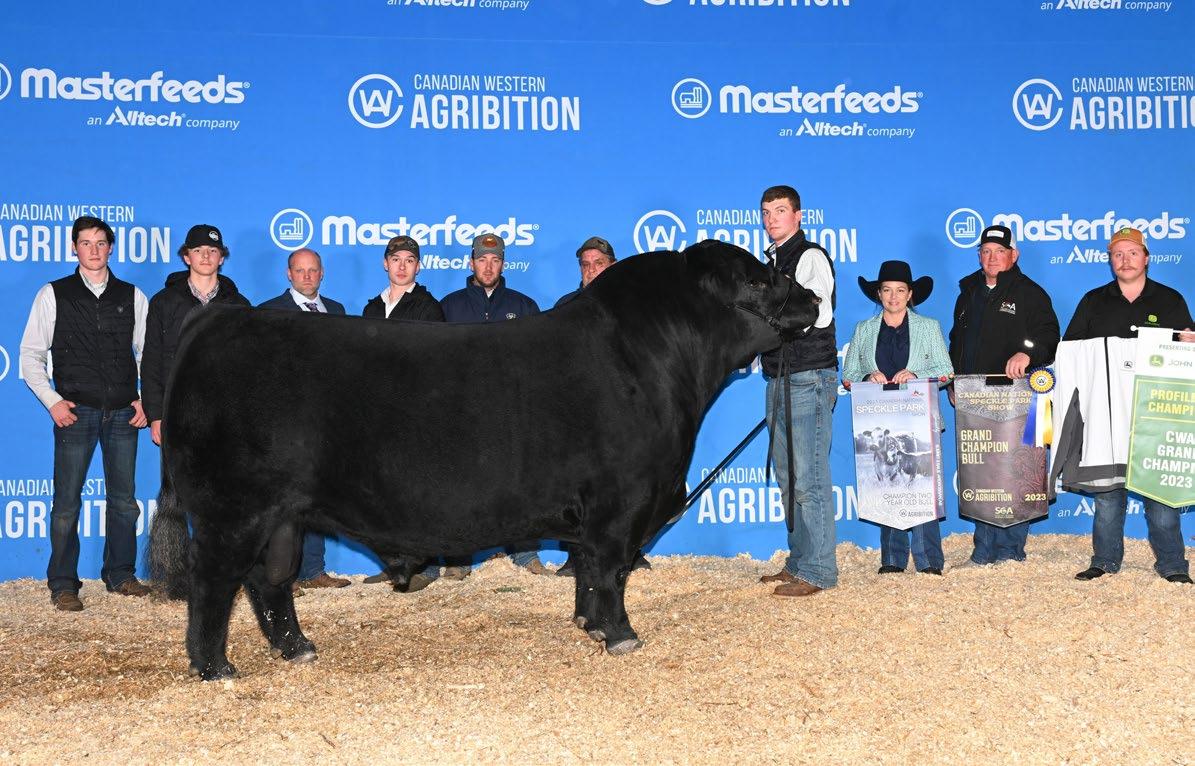
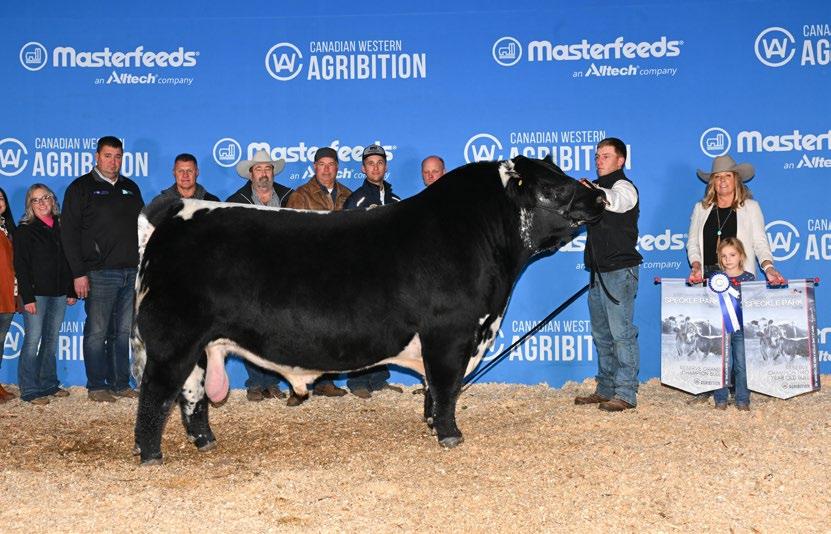


PREMIER BREEDER KFC Farms
PREMIER EXHIBITOR INC Cattle Co.
PRESIDENT’S CLASSIC SPECKLE PARK DIVISION

CHAMPION BULL CALF GW/ID Loyalty 30L Greenwood Speckle Park & Ivery Downs
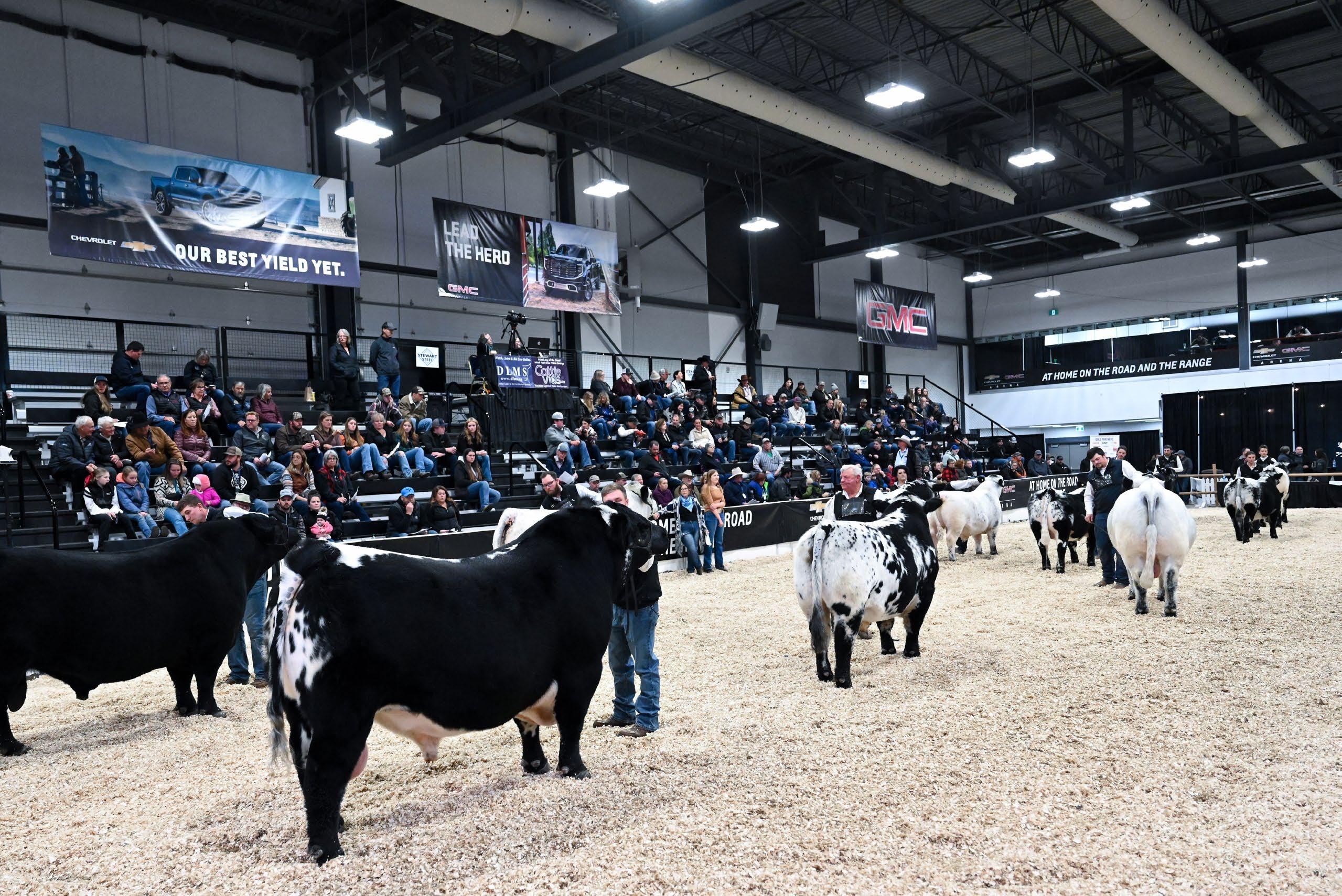
SPECKLE PARK DIVISION
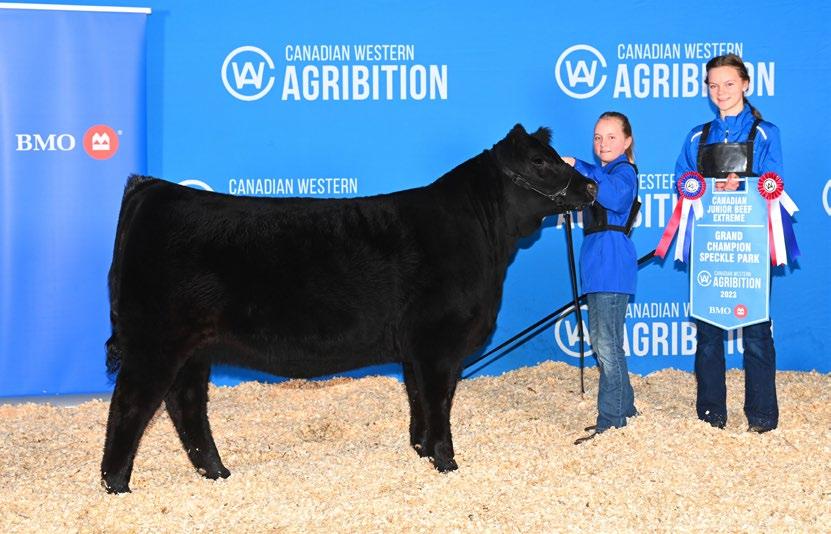
CHAMPION FEMALE
Wolf Lake Aspen 37L Melody Brundige
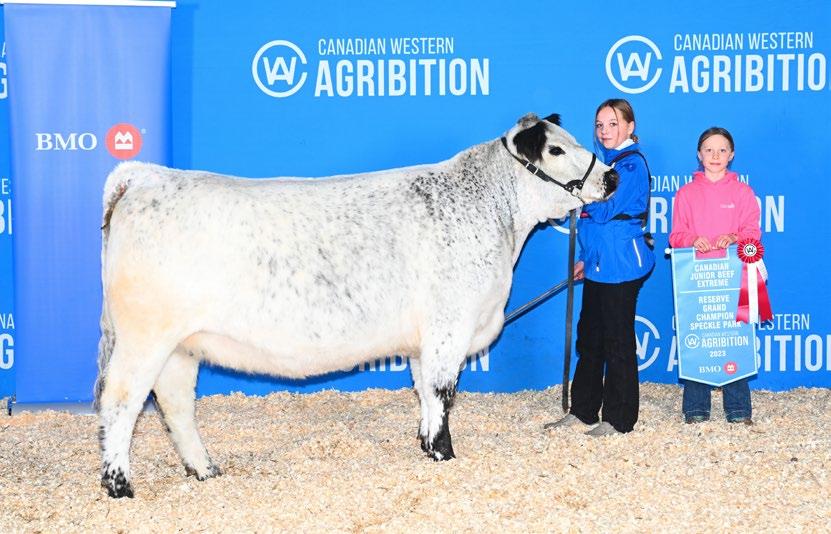
RESERVE FEMALE Calico Creek Wilcox Karma 53K
Bronwyn Zwicker
BMO CANADIAN JUNIOR BEEF EXTREME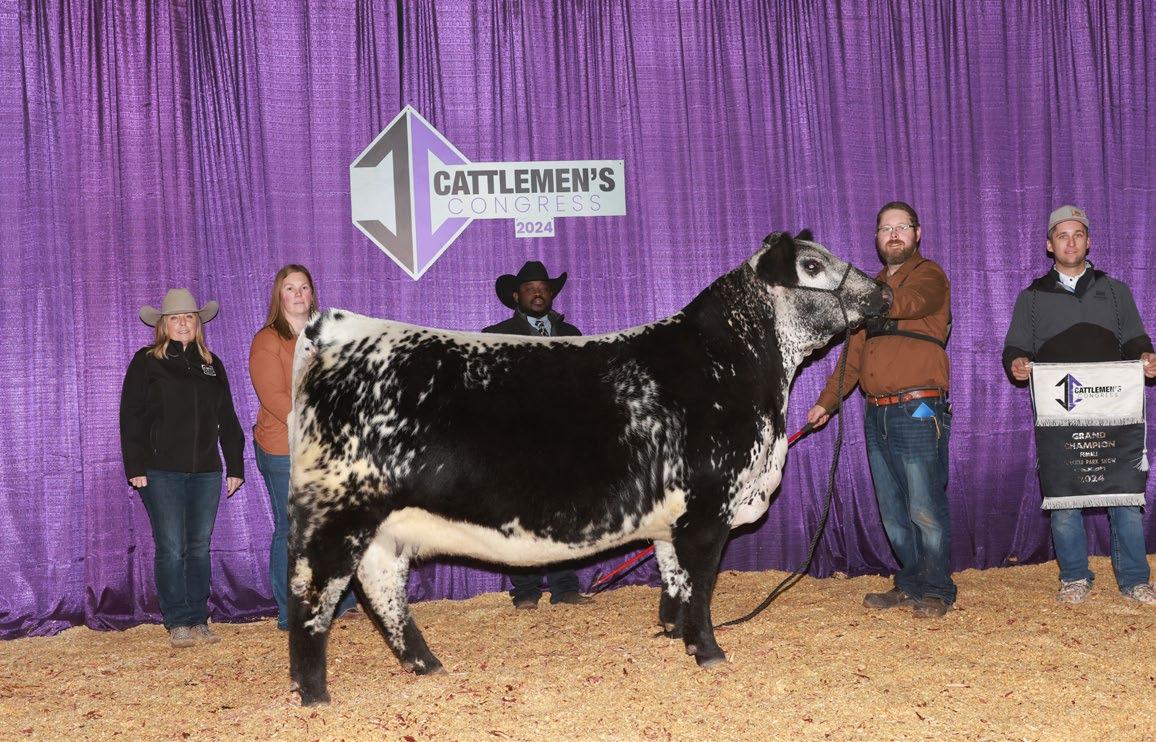
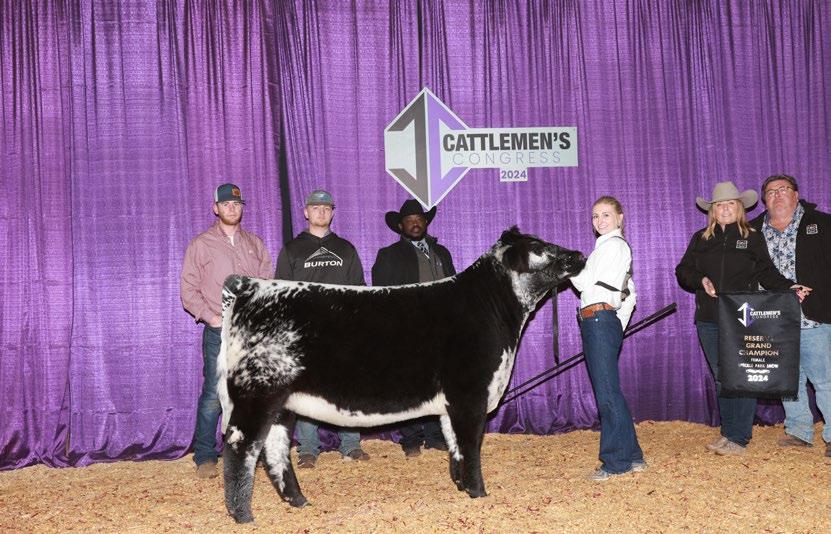
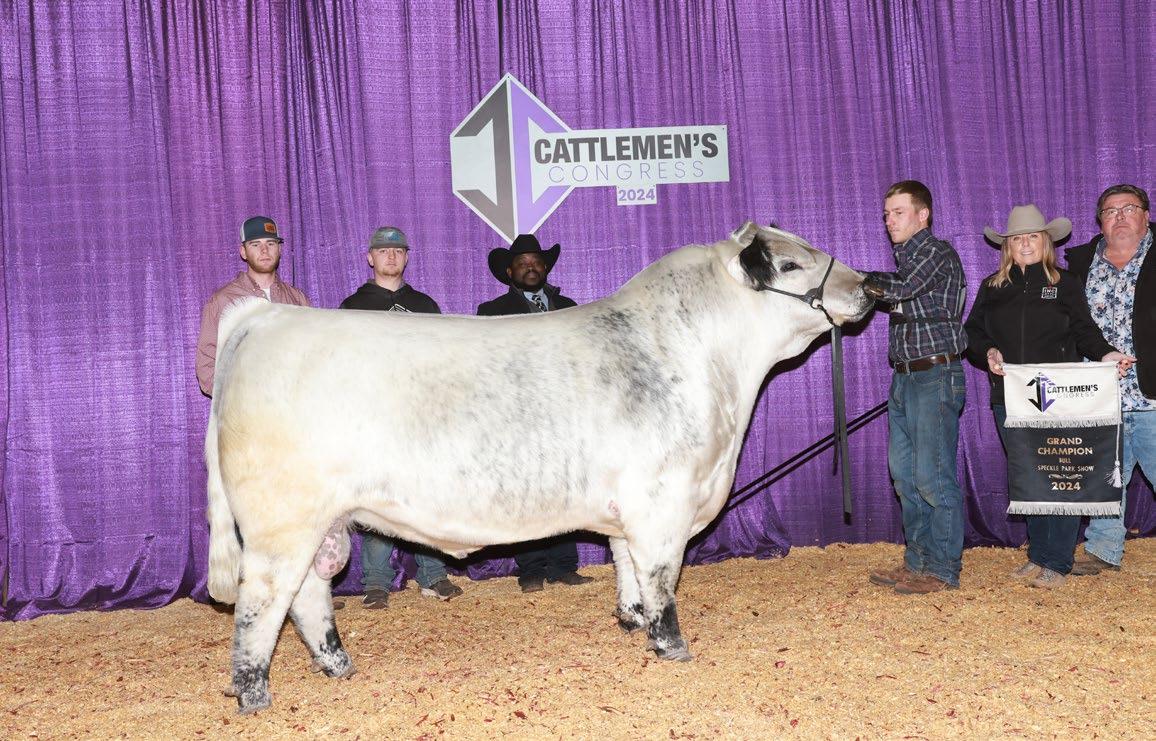
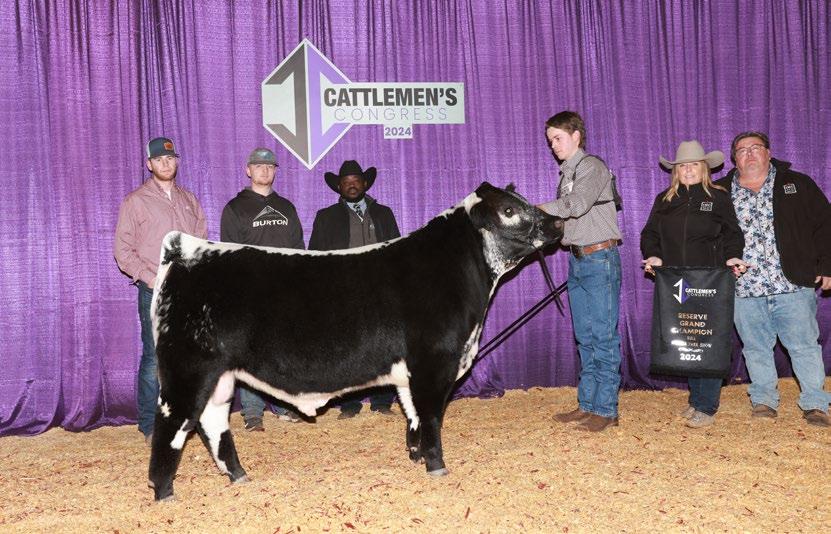

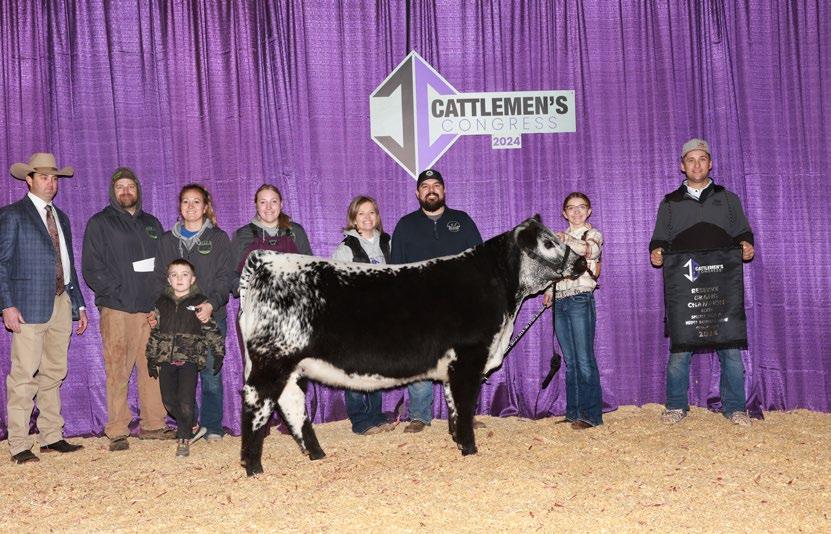
CHAMPION
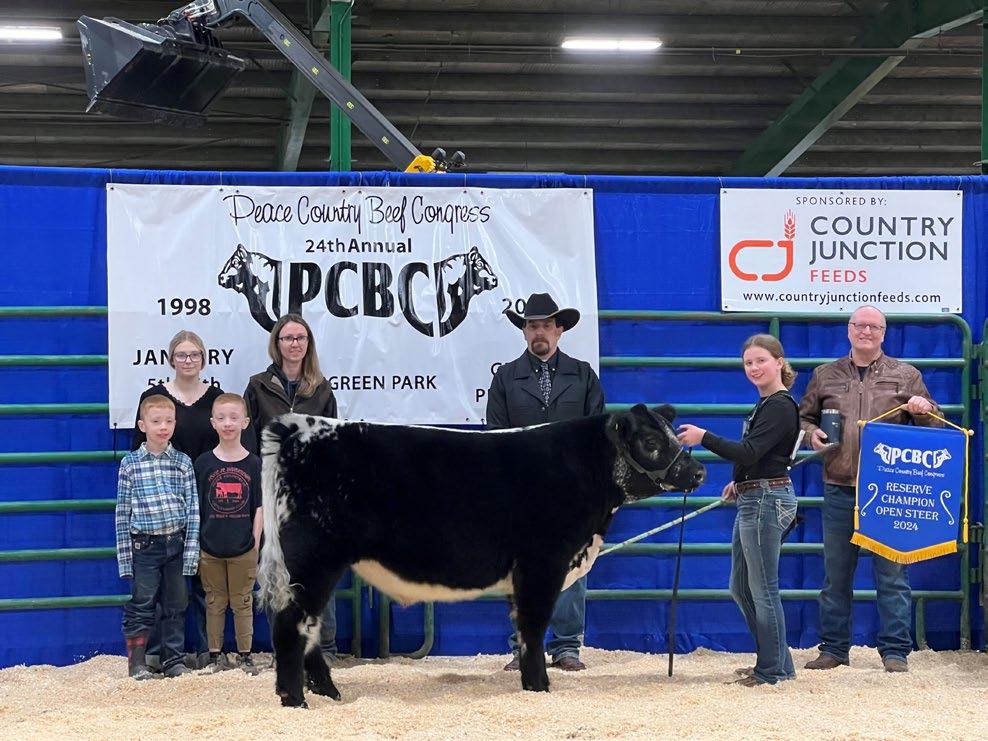
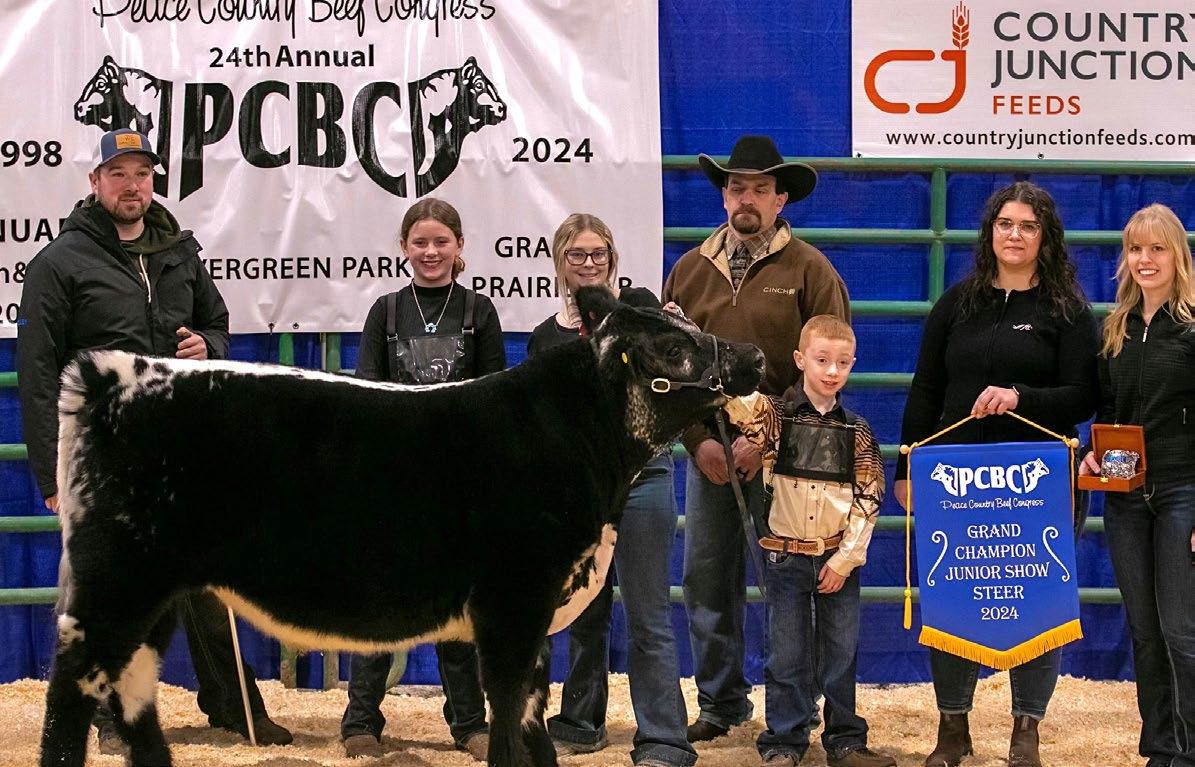

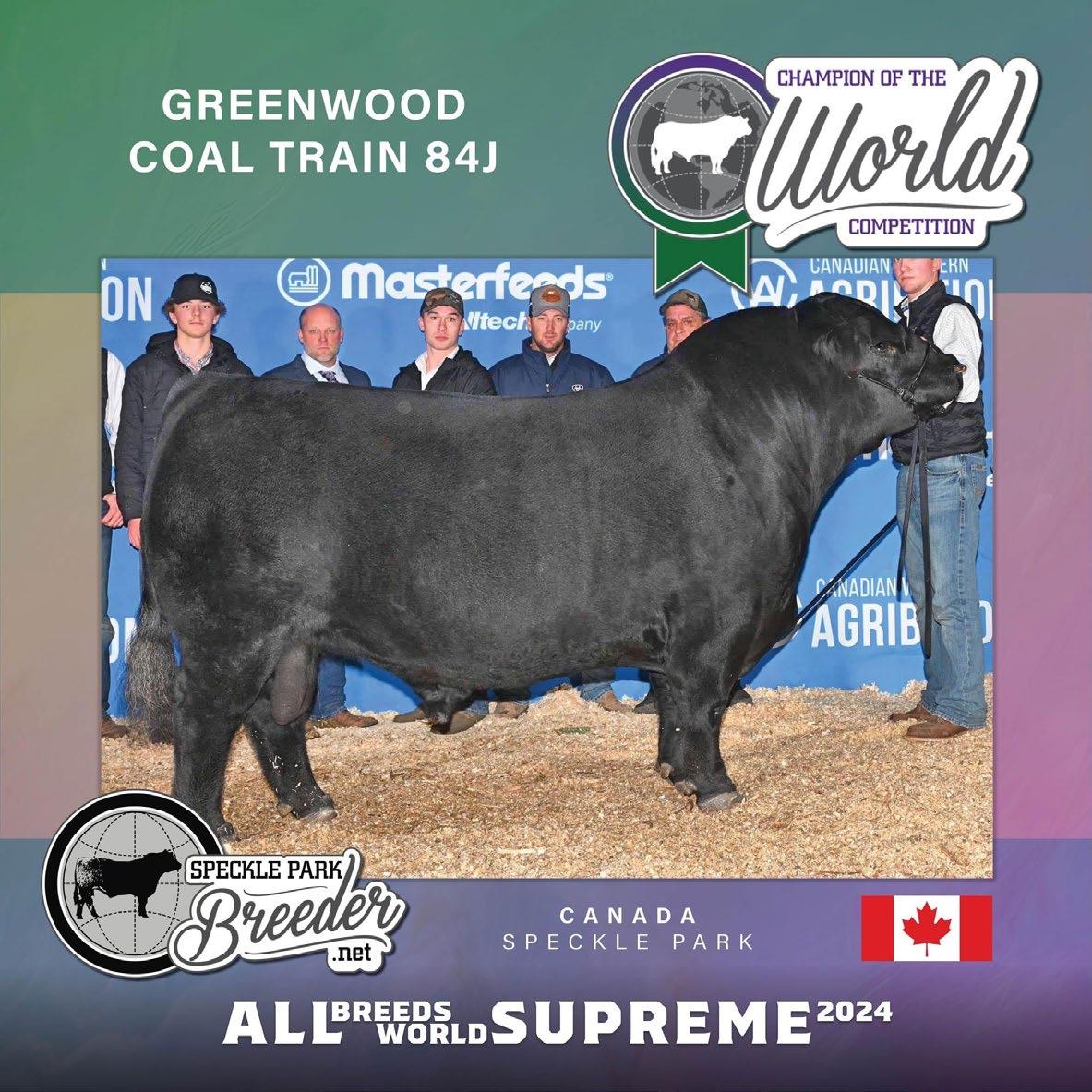
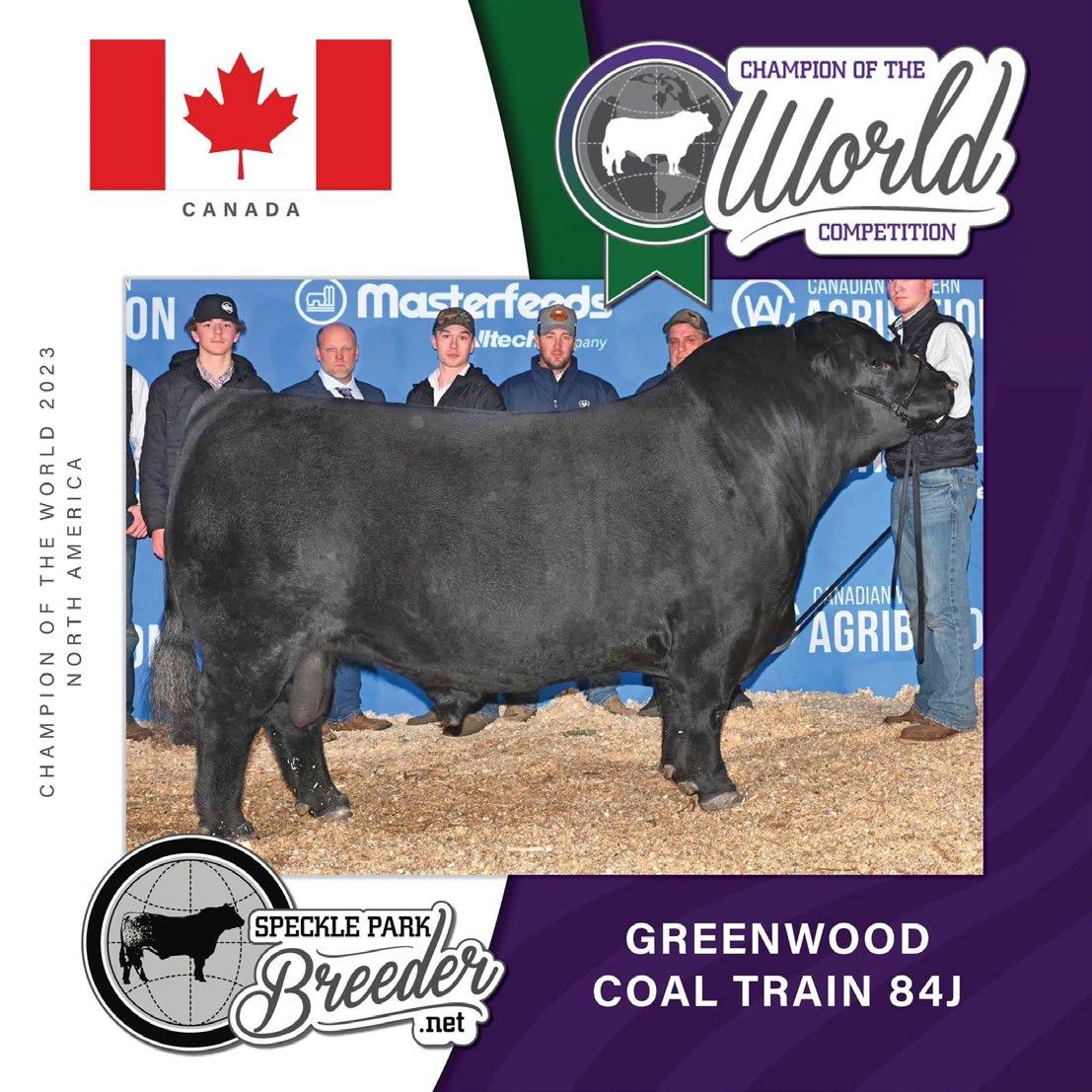

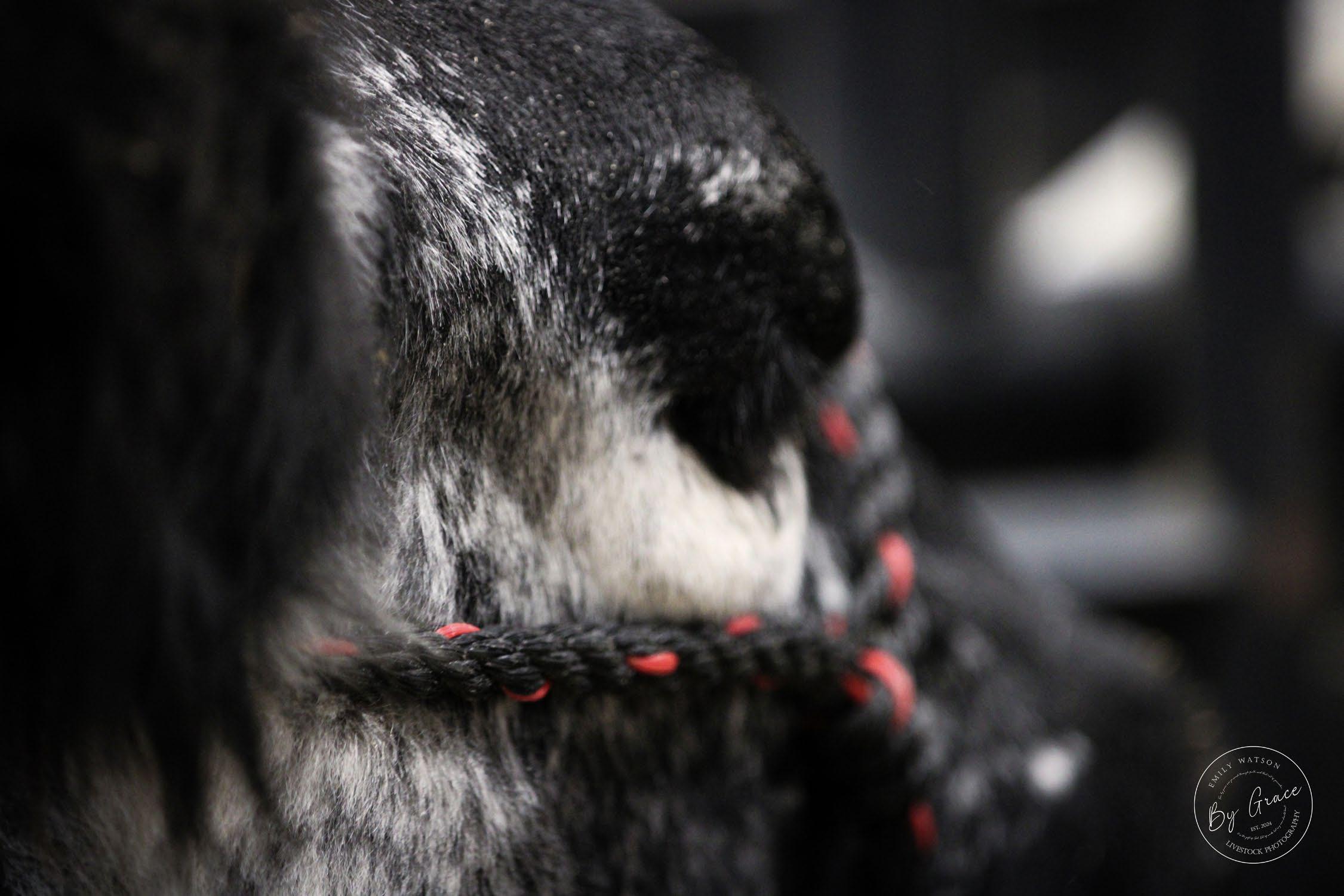
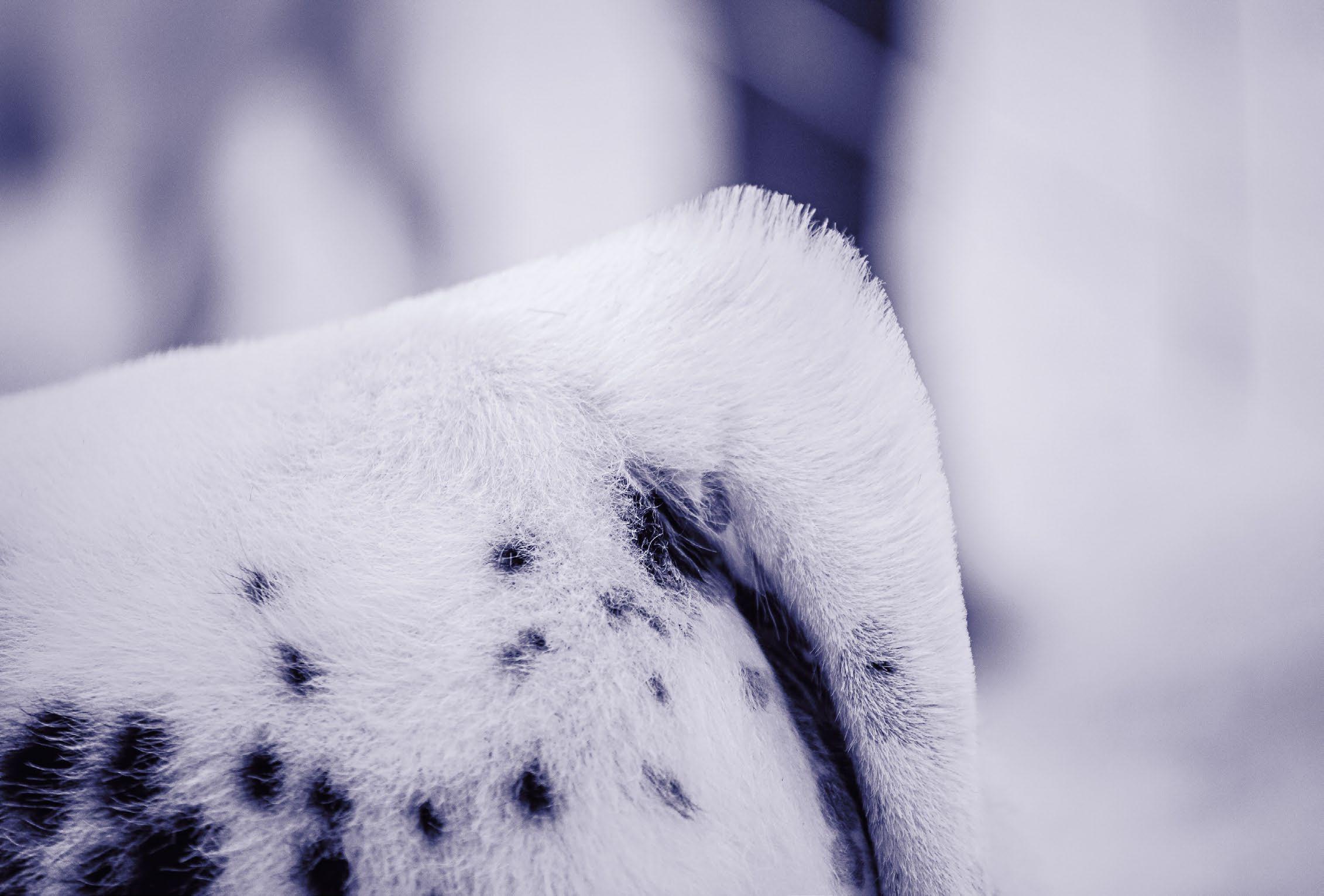

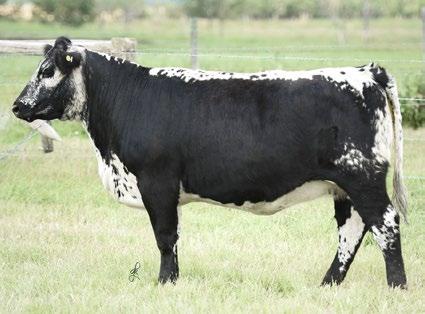

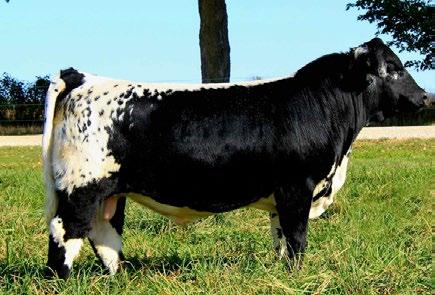
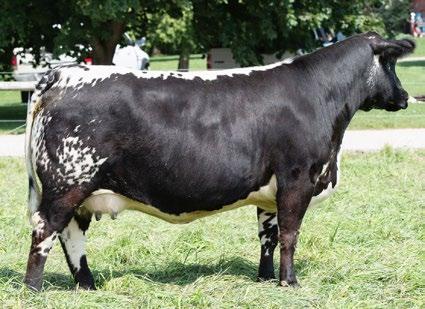

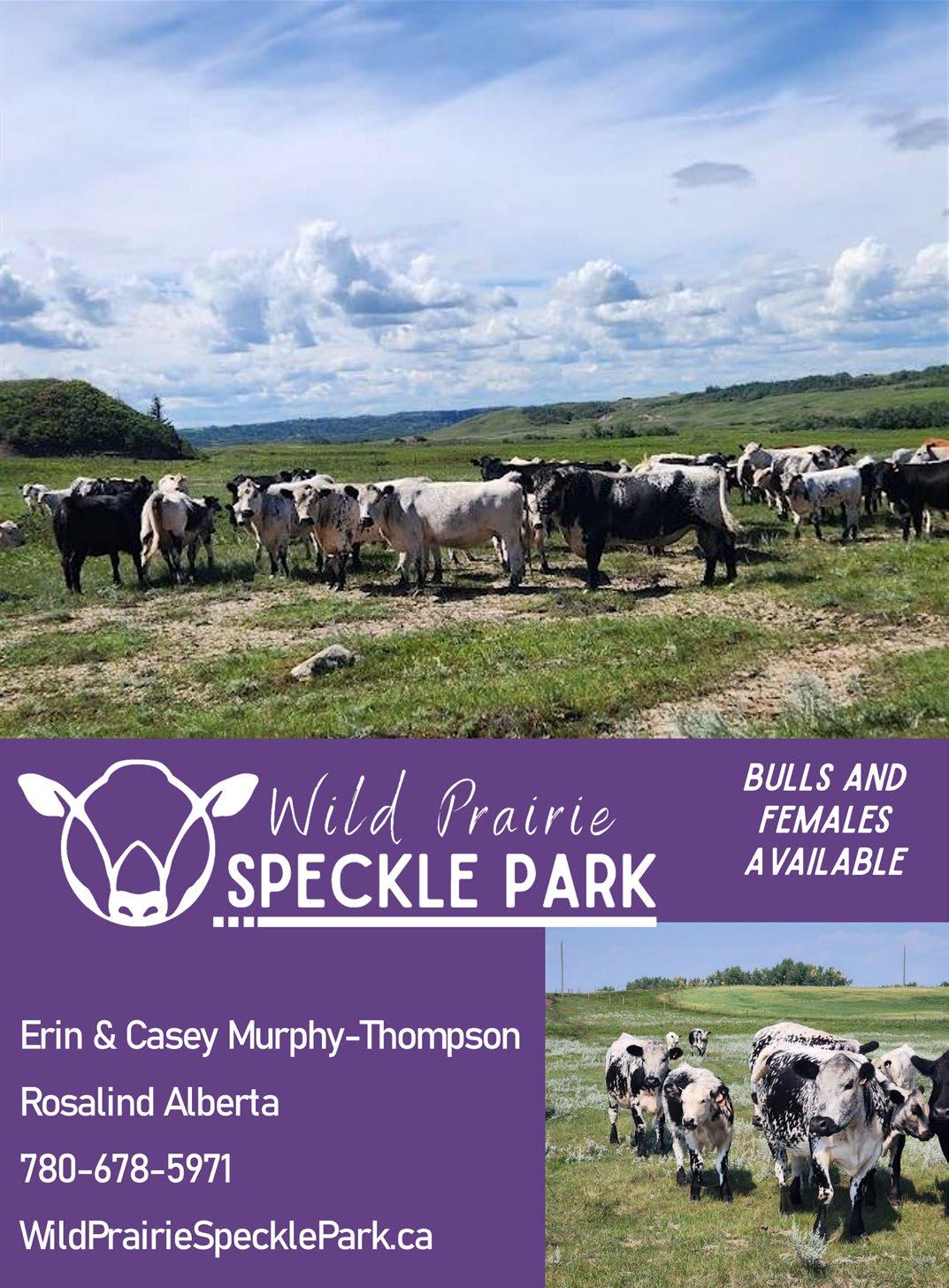

“It was the Speckle Park steers that made the difference,”
Pam and Aaron Tjepkema of Peace Vale Farm and Meat Shop in Fort St John, British Columbia, discovered the merits of Speckle Park cattle quite by fortunate chance. Their on-farm meat shop slowly but surely developed a beef clientele until one year, they had more customers than fat steers available. At the auction barn at Dawson Creek they sought out 10 of the most affordable quality steers available, which happened to be Speckle Park steers.
“My beef clients have always been honest with me,” says Pam “but when I sold the meat from those Speckle Park steers, someone reached out to me to say that even though they have always had a good experience with their beef, they wanted to know why the most recent beef purchased was extra good.”
“It was the Speckle Park steers that made the difference,” says Pam.
She and her husband Aaron are sold on the meat quality of the breed and are also sold on their efficient Speckle Park cows. Some customers are specifically requesting Speckle Park beef.
The reason they got a good price for those auction mart steers, says Pam, is the prejudice that some buyers have with non-conventional looking cattle. Since that fateful original purchase, they have experienced the same prejudice against their own Speckle Park influence cattle in the auction ring. The black hided calves normally fetch a premium over their speckled calves.
Those “Speckles” are nevertheless the foundation of the Tjepkemas’ herd and growing business.
Pam grew up on the Fort St John-area farm that would eventually become the location of her immediate family’s current home and family business. Her Swiss grandparents established a dairy operation there in 1952, having immigrated to Canada earlier. Her mom and dad, Esther and Chris Haab carried on that dairy, along with a horse operation with Pam’s uncle. They raised Morgans and Welsch-Cob-cross horses. Ultimately, the dairy quota was sold and the operation transitioned to grain farming. As her parents and uncle slowed down, Pam and Aaron would frequent the farm to visit and ride horses. The couple were high school sweethearts, together since the age of 16. They married in 2001. Aaron always dreamt of being a fireman and a farmer. When Pam’s uncle made retirement plans, Pam and Aaron bought into the operation by way of a succession plan that spanned over nearly a decade, from 2009 to 2018. It was a dream come true for them.
Previous to moving onto the farm, both Pam and Aaron worked full time in town – she as a speech therapist assistant and he as fireman. They also did some real estate investment – renovating a fixer-upper, a new build and a few rental properties.
Now on the farm, Aaron continues to work full time as a fireman and the two of them slowly established their own Angus-Simmental beef herd while also developing a freezer beef trade. The Speckle Park were incorporated more recently. Aaron has developed the art of feeding cattle and producing great hay under the mentorship of Pam’s dad Chris.
There was no business school or butcher training involved. The meat operation has been a natural evolution from the family’s annual steer killing and processing meat for their personal use on-farm – first on plywood on the garage floor and cutting meat in the farm kitchen, up to 2004, to converting the old dairy parlor into a butcher shop.
“Up north,” says Pam, “we are very self-sufficient.”
In 2009 they hired a Swiss butcher to work alongside them for two years, processing wild game and three to five beef animals annually. The operation grew from there. And up to 2020, they have had a total of three professional butchers work with them for different lengths of time. Their current butcher has been on board with the Tjepkemas for
nearly five years and is training another, on the job.
In the original make-shift butcher “shop”, they started with a 10’-by-16’ cooler which would comfortably hang eight animals. And in their first years, they processed about 10 beef animals annually.
During COVID, the couple invested another $180,000 to expand their cooler space enough to accommodate 25 animals. Cattle prices at auction were low and unpredictable at the time but growing meat sales, by contrast, allowed them to control prices for their beef, thereby establishing a consistent profit margin and the ability to hire full time staff.
The farm is conveniently located eight minutes from the city of Fort St John, which makes them very accessible. They avoid shipping, by selling strictly to people in the region, which includes the Dawson Creek area. They no longer search for customers. Customers now seek them out. They also avoid deliveries. As Pam says, she can either spend a lot of time delivering beef or she can focus on producing quality beef, well processed and packaged. She prefers the latter and prides herself on a good customer experience. The future may include supporting a farmer’s market of some kind on the farm itself and may also include selling beef into local restaurants. Already, they market produce from their own market garden in the summer, made possible with the help of Pam’s mother Esther.
Family support has contributed a great deal to this couple’s success. Pam’s parents, now in their seventies, play a constant role on the farm and their cattle know-how serves the family well. Aaron and Pam’s children also take part in many aspects of the farm and shop operations. Seventeenyear-old Abel helps regularly in the meat shop. Twelve-year-old Willem and 10-year-old Jakob feed the steers twice daily. And 8-year-old daughter Holland is happy to help out however and wherever she can.
Yet farming can be lonely, as Pam points out. So she is happy to have constant contact with her meat customers.
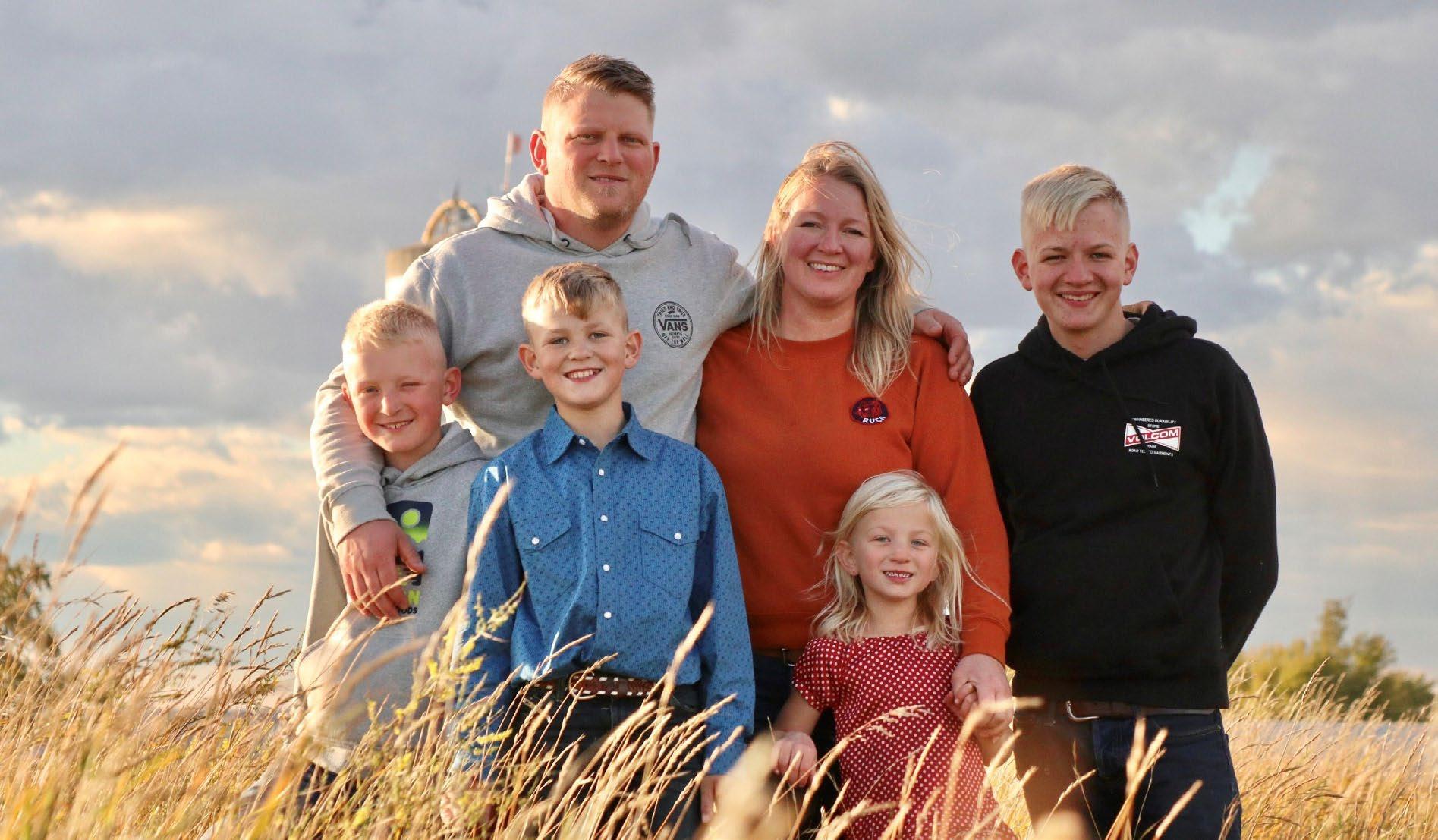 Right: The Tjepkema Family
Right: The Tjepkema Family
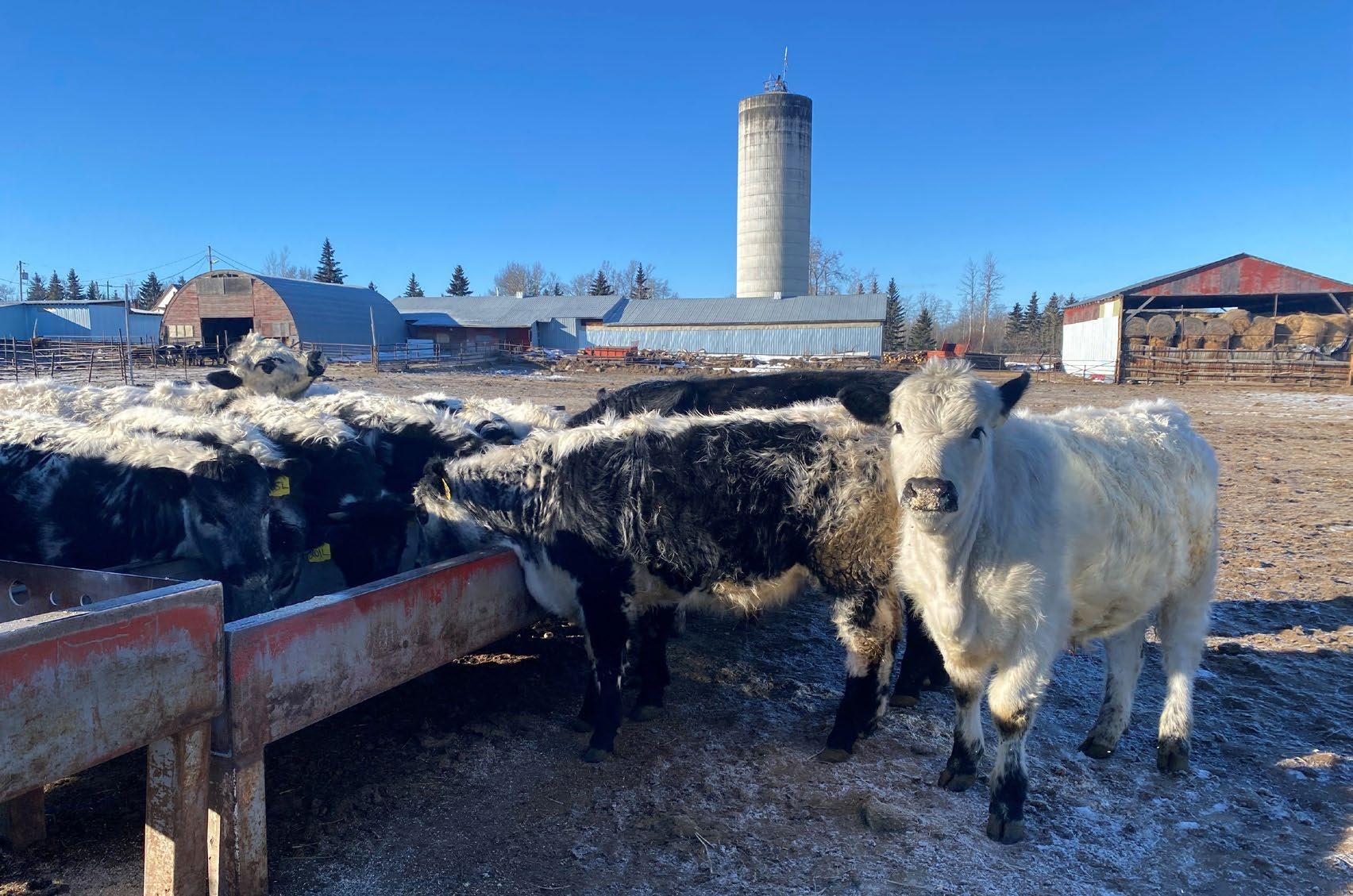
Local farmers have supported the Tjepkema family well, she says, by using their custom meat cutting services. A full two-thirds of their business comes from custom cutting. The patronage of fellow farmers has allowed the family to hire and keep great staff, before which, Pam says, they were near burnout doing everything themselves. Alongside their butcher, they have three other full-time staff, allowing Pam to play more of a managerial role in the business. Aaron sometimes works in the shop but spends much of his time occupied in his full-time work off the farm. When at home, he is mainly managing the cattle herd. They have a 40-cow herd. Production would accommodate a herd of 100 cows but land mass is their current limitation.
The Tjepkemas work with two local slaughterhouses within a 1.5-hour radius but are now applying for a license to do on-farm slaughters in the future.
“The future of our business looks strong,” says Pam.
Peace Vale offers grain-finished beef and only occasionally grass-fed beef. To ensure the quality of the grass-fed beef, they learned it was necessary was to change how they manage whole segments of the operation to accommodate some later calving cows. Calves born on grass in June and July would ensure that they are ultimately finished on late summer sweet grass, as opposed to dry grass, at 18 to 24 months of age and about 1,300 to 1,400 pounds. Grass fed steers born earlier, which finish out on dry fall grass, by comparison, seemed to have tougher connective tissue, resulting in tougher meat and firmer ground beef and a strong flavor to their fat.
Their grain-fed steers are raised on pasture all summer but through the winter months, the Tjepkemas appreciate how much feeding the steers grain trains them to follow their feeder/handler, making it easier to move and handle them, which translates, ultimately, to a stress-free experience for them, all the way to slaughter.
A strict economic goal for the operation has been to raise as many animals as possible on their limited 220 acres and some leased land. Having experimented with several crosses, the Tjepkemas have found the
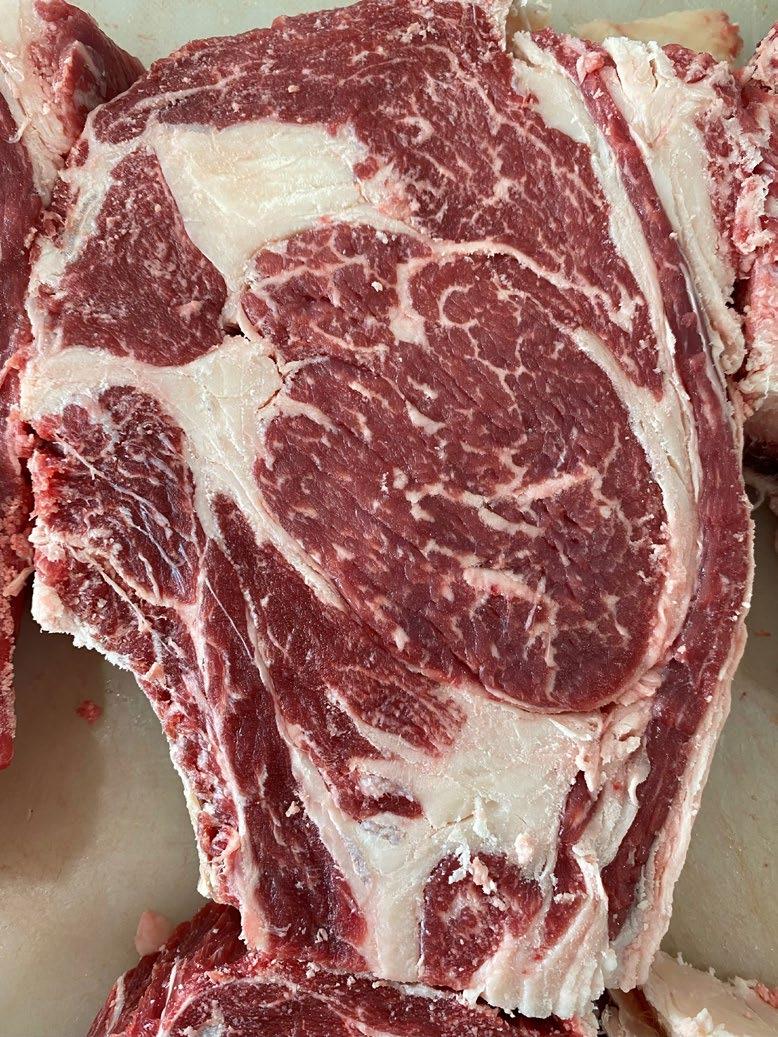
1,100 to 1,200 Speckle Park-influence cows to be most efficient, weaning comparable calf weights on less feed, relative to heavier cows.
From the butcher shop perspective, above all else, what they love about the Speckle Park-influence cattle, in Pam’s words, is this: “Their fat distribution is remarkable.”
“Fat is dispersed between the cuts and within the cuts,” she says. “And they produce less waste.” Other breeds of beef cattle with comparable carcass weights of 750 to 800 pounds, consistently produce 150 pounds of excess waste product she says, and much of their fat is laid down along their topline. And as Pam explains, they just aren’t able to fully utilize leggy carcasses at their shop yet.
Shorter legged Speckle Park make for less waste because very few customers are interested in the shanks.
“Customers are happier to pay for meat in the freezer versus soup bones and waste,” says Pam.
Having experimented with several crosses, the Tjepkemas have found the 1,100 to 1,200 Speckle Park-influence cows to be most efficient, weaning comparable calf weights on less feed, relative to heavier cows.
And marbling is achieved, she says, even when barley feeding isn’t precisely consistent. The odd day can be missed by their busy family when their kids miss a feeding. But she says the other breeds weren’t so forgiving if you missed an otherwise regular feeding routine.
Pam admits that there are outliers in every breed, in terms of carcass
traits and genetic expression. So they carefully choose the lines that have worked, based on cow families, while currently aiming for a cow size under 1,500 pounds.
“If she can’t fit through the chute, she can’t stay at Peace Vale Farm,” says Pam, with a chuckle.
Conformation-wise, they breed for full hips, strong, straight toplines and full briskets. They cull mainly for bad feet, problem udders and large dam weights.
While they own a few Speckle Park cows, their program mainly involves putting high quality registered Speckle Park bulls on their largely AngusSimmental cow base.
What Pam appreciates most on an ideal day on the farm is when she and Aaron can take their morning coffee and walk through the cowherd at sunrise. As a family, they love the fall roundup to bring cows home off pasture. But Pam herself also highly appreciates the pride of a quality piece of meat on the table. She is a “people person”, enjoying working with her staff and especially enjoying the experience of walking customers through custom cutting instructions to ensure they get what they want
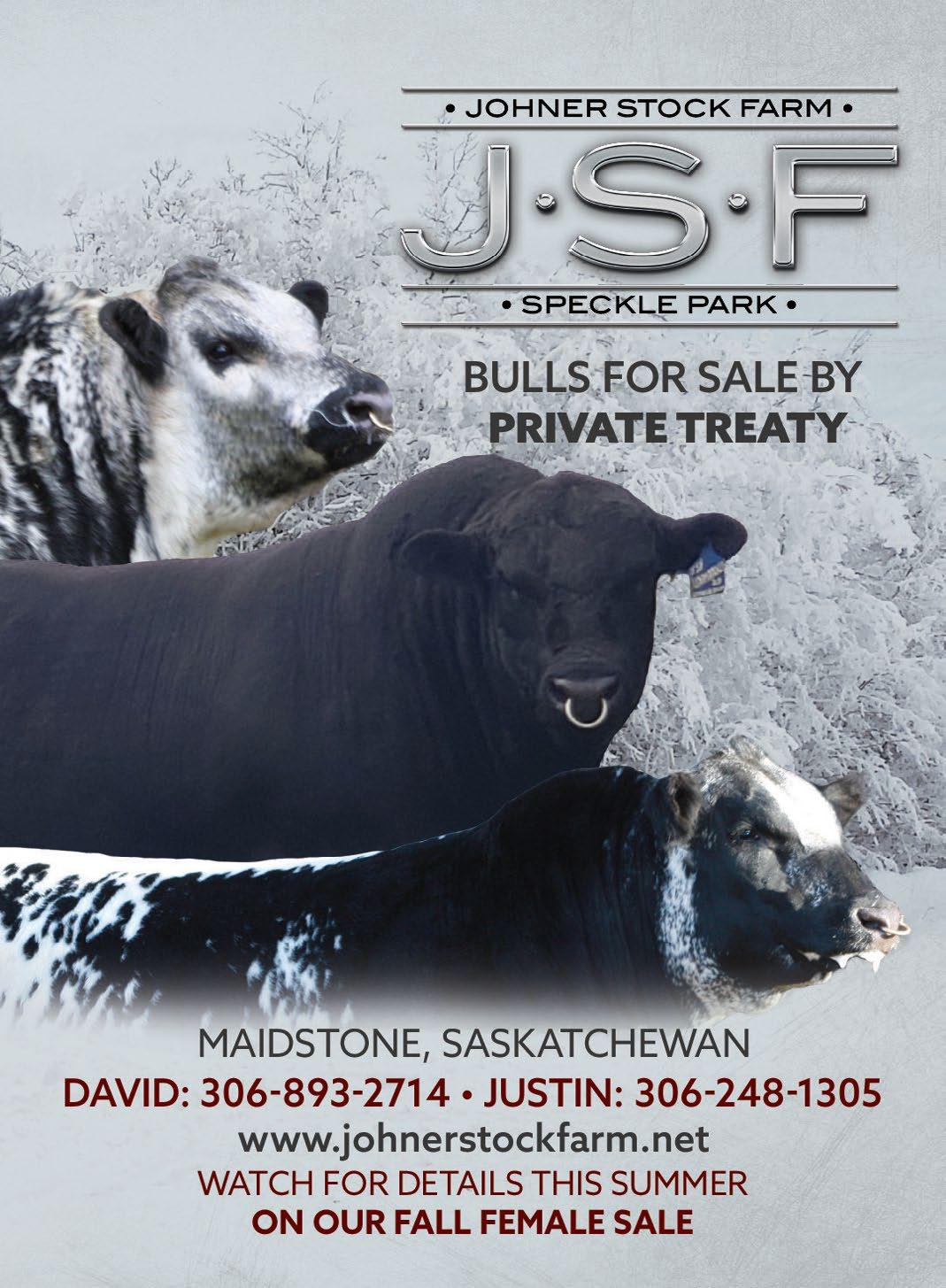
and need. She prides herself in taking care of her customers, in part, by being transparent about their meat sources and quality.
Aaron is the visionary, always dreaming up the next rendition of their business.
Addressing the “waste” issue, the couple is contemplating the production of tallow balm – used as skin moisturizing cream - and produced with one of the bi-products of the meat cutting process. They figure the production of tallow balm will make use of up to 10 pounds of tallow for each animal slaughtered.
Pam says visitors of foreign countries to the farm are appalled at the amount of waste that conventional North American butchering produces, in terms of organ meats, tallow, fat, offal and bones.
“Both of us hate waste,” says Pam. While they compost their own butcher shop waste, they consider it their mission to close the loop on waste, in general. Spin-off products are one solution. But very important in that equation is the efficient, productive Speckle Park cow and the reliable quality end-product that she produces. The proof in the pudding is in the eating, in other words.
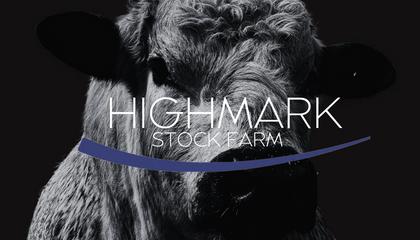

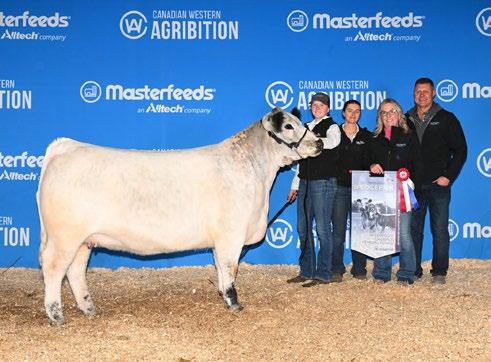
At Canadian Western Agribition 2023, we [the CSPA Youth] met up to discuss our hopes for the future of juniors in the Speckle Park breed. We had over 20 juniors who came out to participate, meet new members, and brainstorm brilliant ideas.
At Agribition we were also able to select an inaugural winner for the first annual Youth Stockperson of Excellence Award sponsored by Underhill Specs. All exhibitors in attendance voted on which junior member they felt was the best advocate for the breed both at shows and on social media. Emily Watson was selected to be the first recipient of this award, receiving $500 from Underhill SPECS. Congratulations to Emily and thank you to Underhill Specs for making this possible!
Over the course of 2023, the Canadian Speckle Park Association sent out 147 Breed Token Awards to 4-H members across Canada who exhibited a Speckle Park or Speckle Park influence animal. Any 4-H member with a Speckle Park project can have their club leader apply for a Breed Token Award. To apply, fill out the form on the CSPA website under the “Youth” tab.
Applications open on March 1, 2024, and close September 30, 2024. Along with the breed awards, we are also now accepting new Youth Bursary applications.
We invite all CSPA juniors to attend and partake in our Canadian National Junior Speckle Park Show which will be held July 8-12, 2024, in Olds, AB in conjunction with Summer Synergy. This show is a great opportunity for our members to learn new skills, build new friendships and promote the Speckle Park breed.
As your CSPA Youth Director, I have set my focus for 2024 on creating a functional youth board for the Speckle Park breed. This will be my focus, but I also look forward to starting on some other new projects, with the help of the junior board, in the years to come. I’m always open to questions and suggestions so do not hesitate to reach out!
Makenzie Olson CSPA Youth DirectorÀ l’occasion du Canadian Western Agribition 2023, nous [les jeunes de l’ACJSP] sommes réunis pour discuter de nos espoirs pour l’avenir de la relève de la race Speckle Park. Plus de 20 juniors sont venus participer et rencontrer de nouveaux membres ainsi que de compiler des idées brillantes.
Au même moment, nous avons également été en mesure de sélectionner un récipiendaire pour le premier prix annuel soulignant un jeune éleveur d’excellence, parrainé par Underhill Specs. Tous les exposants présents ont voté pour le membre junior qui, selon eux, était le meilleur défenseur de la race, à la fois lors des expositions et sur les médias sociaux. Emily Watson a été choisie pour être de ce prix, recevant 500 $ de Underhill SPECS. Félicitations à Emily et merci à Underhill Specs pour leur contribution envers ce prix.
Au cours de l’année 2023, l’Association canadienne Speckle Park a décerné 147 prix aux membres 4-H de partout au Canada qui ont exposé un animal de race Speckle Park ou de génétique influencée par la race Speckle Park. Tout membre 4-H qui a un projet Speckle Park peut demander à son chef de club de présenter une demande pour un prix. Pour postuler, remplissez le formulaire sur le site Web de l’ACSP sous l’onglet « Youth ». Les candidatures débutent le 1er mars 2024 et se terminent le 30 septembre 2024. En plus de ces prix de race, nous acceptons maintenant aussi de nouvelles demandes de bourses pour les jeunes.
Nous invitons tous les membres juniors de l’ACSP à assister et à participer à notre concours national canadien junior qui aura lieu du 8 au 12 juillet 2024 à Olds, en Alberta, en conjonction avec Summer Synergy. Cette exposition est une excellente occasion pour nos membres d’acquérir de nouvelles compétences, de nouer de nouvelles amitiés tout en promouvant la race Speckle Park. En tant que Directrice des activités juniors, je me concentrerai sur la création d’un conseil fonctionnel pour les jeunes qui sont impliqués avec la race Speckle Park. Malgré que ce soit mon objectif principal, j’ai également hâte de démarrer d’autres projets nouveaux, avec l’aide du conseil d’administration junior, dans les années à venir. Je suis toujours ouverte aux questions et aux suggestions, alors n’hésitez pas à me contacter !
Makenzie OlsonDirectrice des activités juniors
Belt buckles were presented at the CWA Speckle Park banquet to youth who won overall championships at the National Junior Speckle Park show this past summer!
The Overall Champion Purebred Female buckle was awarded to Luke Brundige, (buckle sponsored and presented by Trestle Creek Cattle Co.) and the Overall Reserve Champion Purebred buckle was awarded to Melody Brundige (buckle sponsored and presented by River Hill Farm). Amy and Heidi Fradette, winners of the Overall Commercial Champion and Reserve Female buckles, were not in attendance. We thank INC Cattle Co. and Highmark Farms for their sponsorship of the commercial Champion and Reserve buckles!
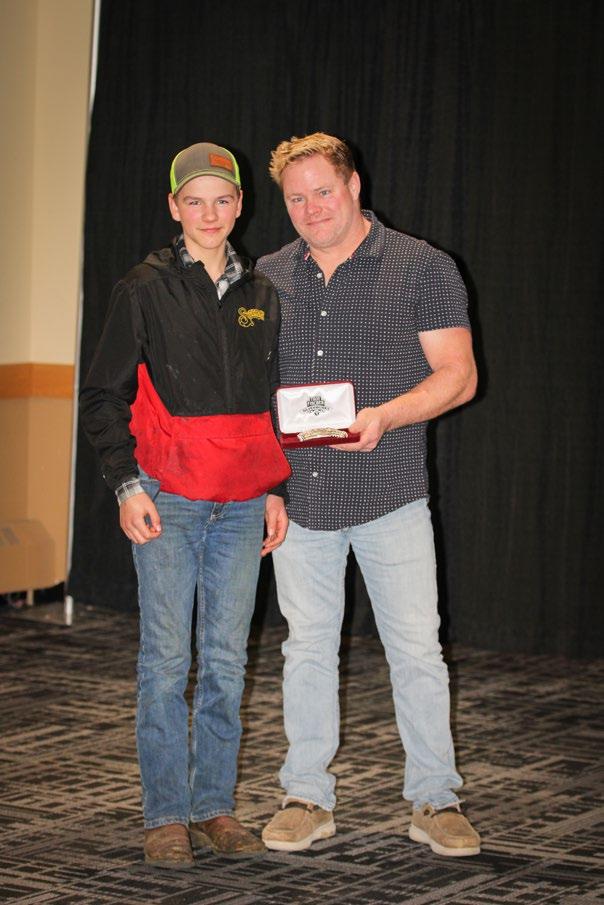
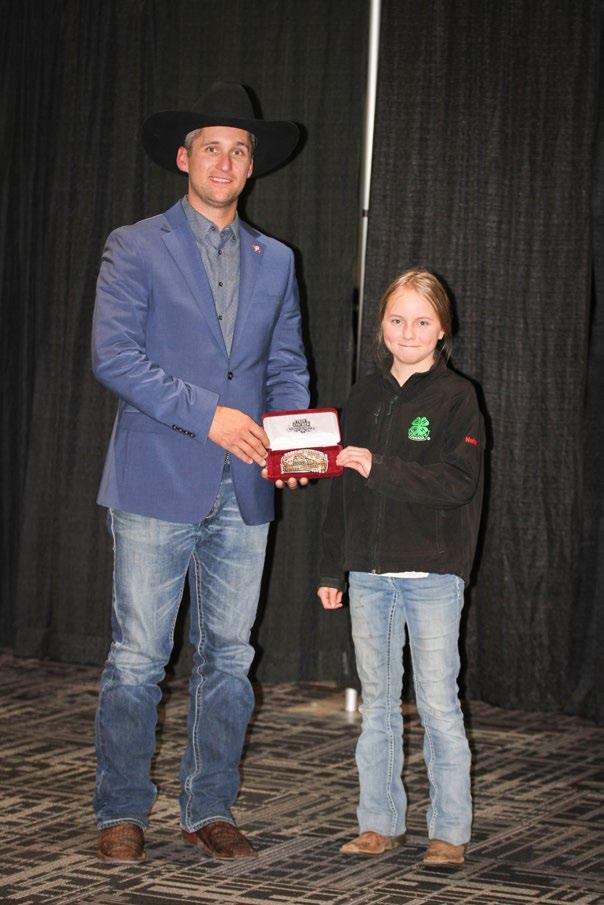
The CSPA sends out a big congratulations to Mara and Shelby, two outstanding members of the Speckle Park Junior community. This February, they participated in the Prairieland Youth Leadership conference, an esteemed event offering Saskatchewan’s 4-H members the chance to earn scholarships totaling $12,000. Approximately 60 youths between the ages of 15 and 21 engaged in a series of activities over the two-day conference, including debates and leadership tasks. Prior to the event, participants were assigned various tasks to prepare them for the challenges ahead. The top 5 performers were recognized with scholarships. A special round of applause goes to Shelby Peacock from Spot R None farm for securing 2nd place and receiving a $3,000 scholarship, and to Mara Vogel from Legacy Speckle Park & Angus for claiming 3rd place and earning a $2,500 scholarship. This event not only rewards academic achievement but also fosters invaluable connections and friendships among attendees.


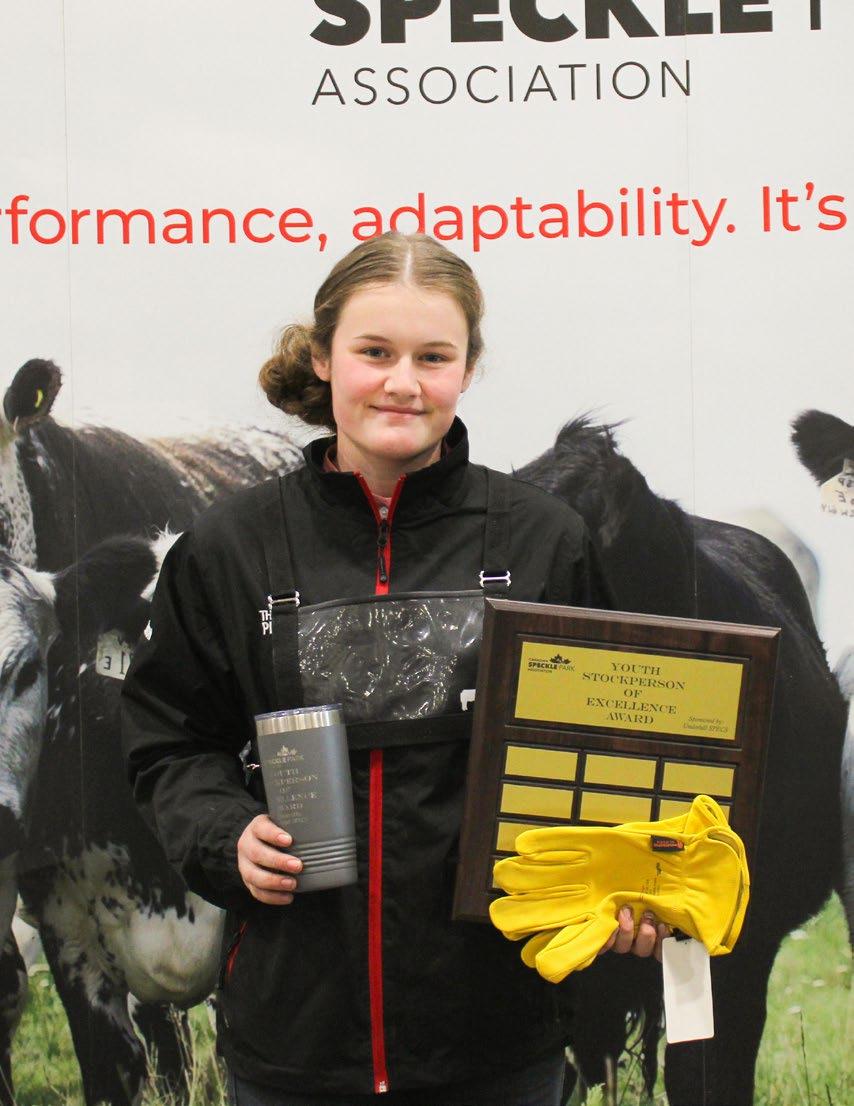
Jordon Underhill of Underhill SPECS approached the CSPA this past Fall with an idea to further support the Speckle Park youth. Makenzie Olson, our CSPA Youth Director, took Jordon’s idea and ran with it, creating a new award; the Youth of Excellence Award, sponsored by Underhill SPECS and awarded at Agribition (CWA). Ballots were created and every exhibitor at CWA was given the opportunity to vote for a youth involved in the Speckle Park breed, someone that they believed deserving of the award. Criteria included displaying a passion and advocacy for the breed, work ethic, breed involvement, communication skills, a positive attitude, willingness to help out, overall ideal representation of the Speckle Park breed, a social media presence in terms of spreading a positive outlook on the Speckle Park breed, etc.
The 2023 recipient was Emily Watson! We would like to congratulate Emily – cattlewoman and photographer extraordinaire - and recognize her for her outstanding contribution to the breed.
We would also like to thank Underhill SPECS for their generous sponsorship of $500 to the winner of this award. Thank you for supporting our next generation of young Speckle Park breeders and for recognizing and supporting innovation in the Speckle Park breed.
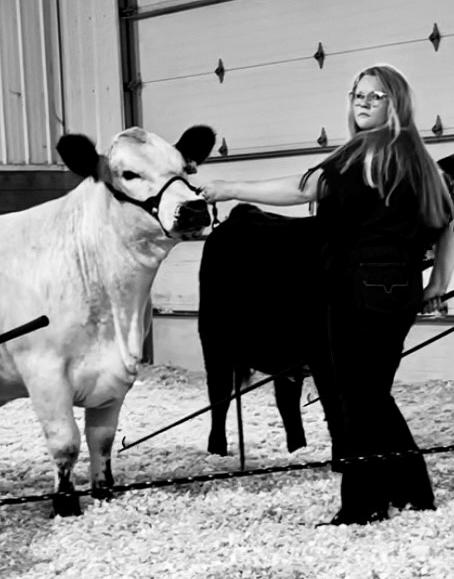
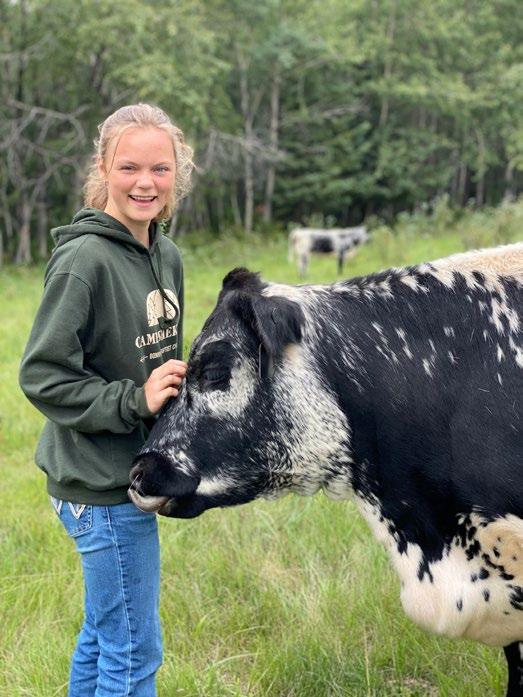
SENIOR
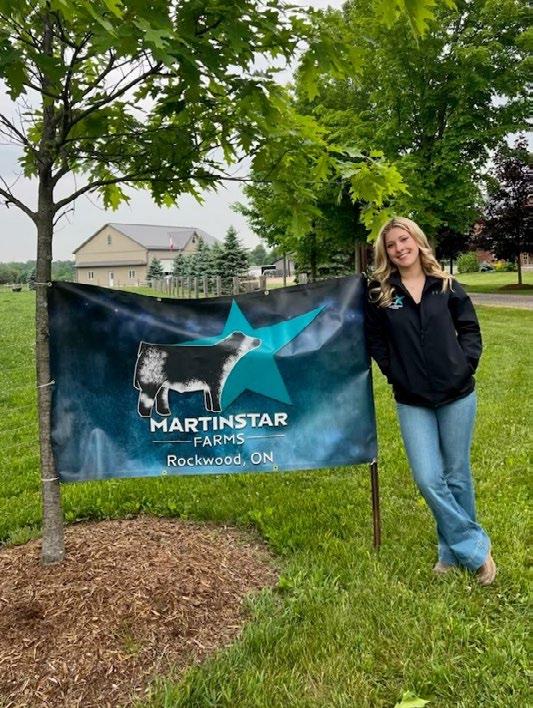
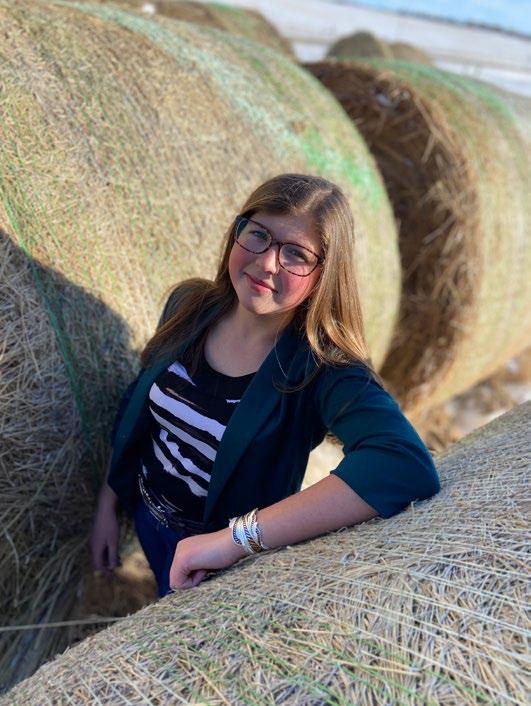
1. Ben Coles
2. Lucas Coles
3. Emma Allan
4. Peyton Thompson
5. Olivia Marley
6. Josh Coles
7. Annabella Rogers
8. Sidney Sicard
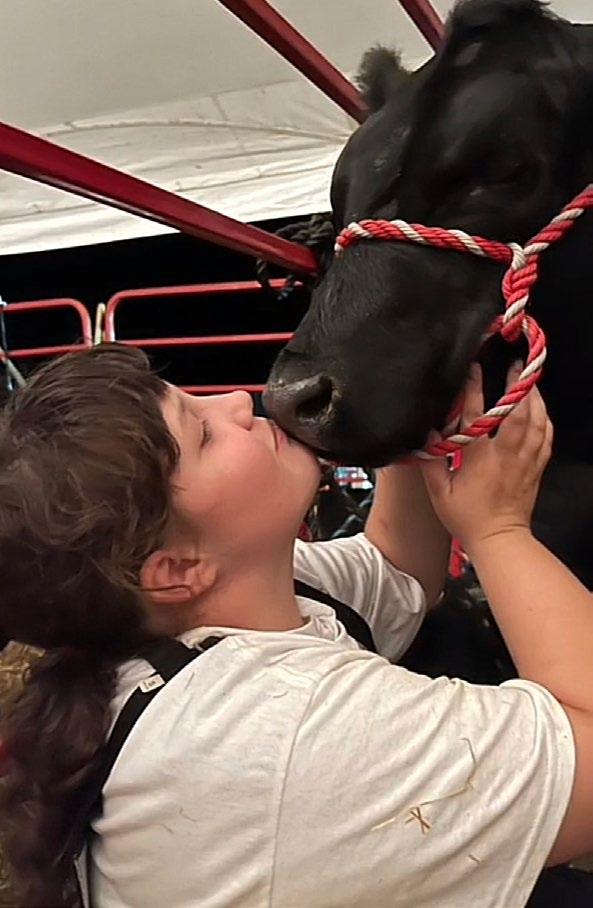
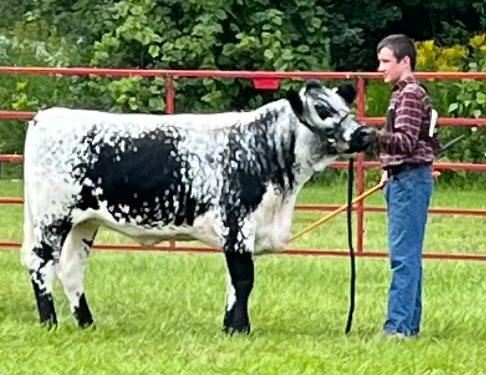

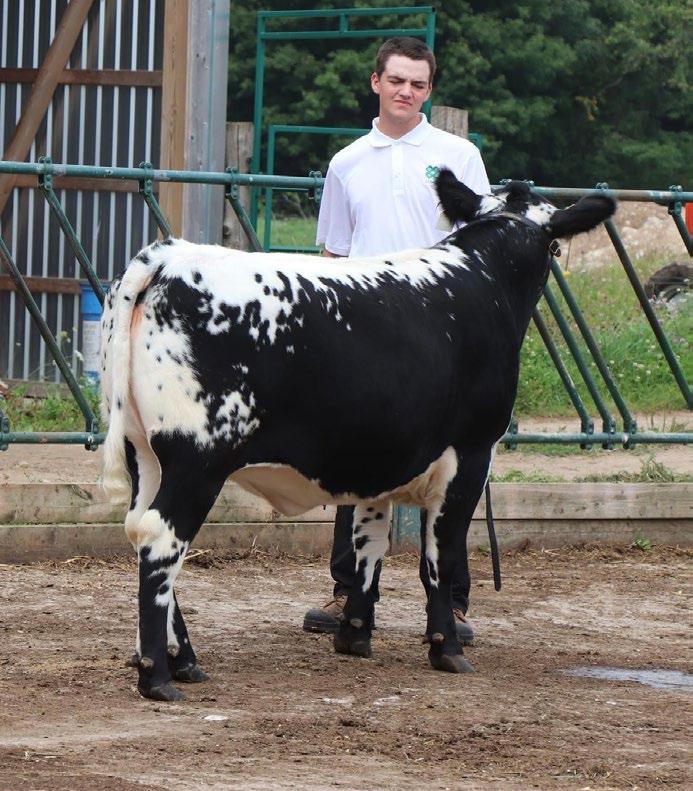

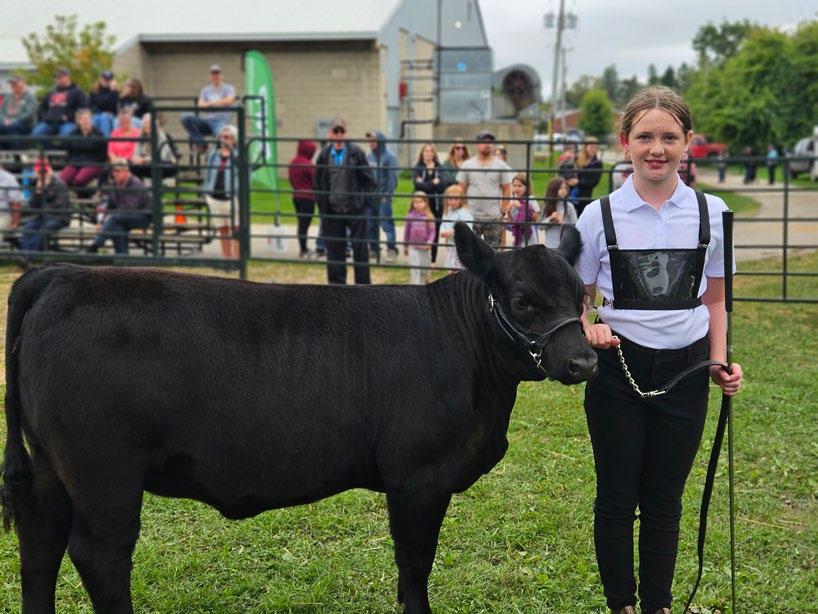
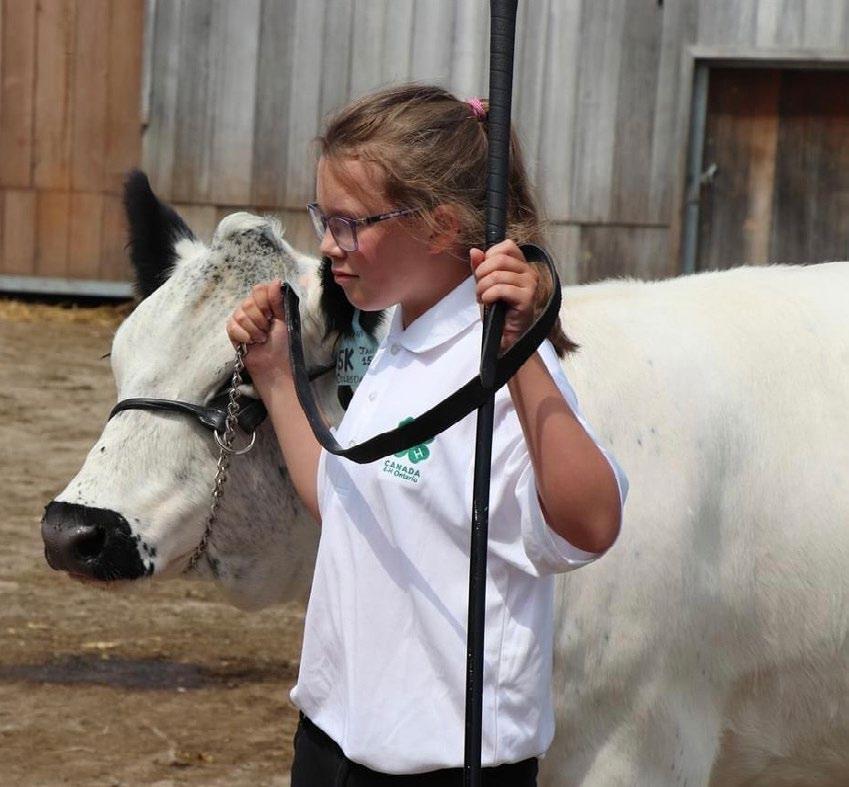
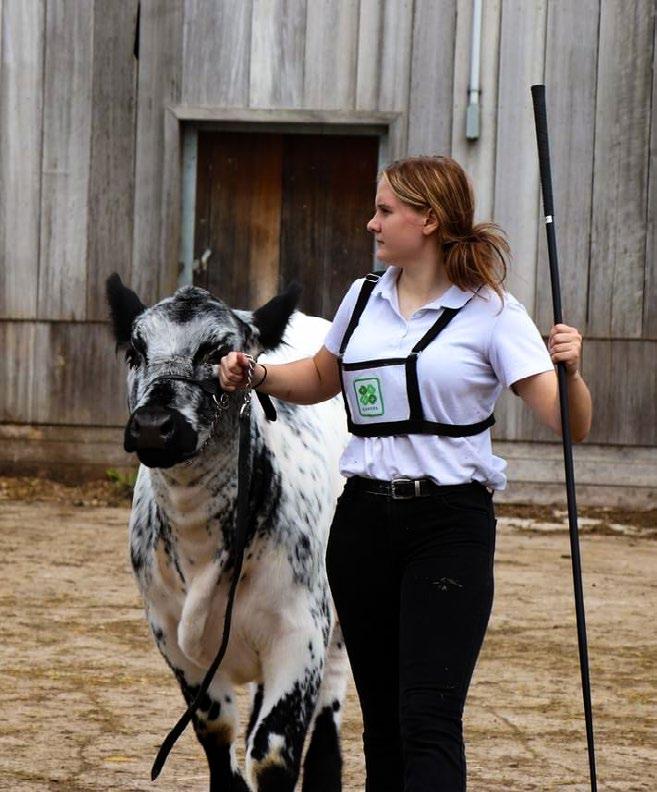
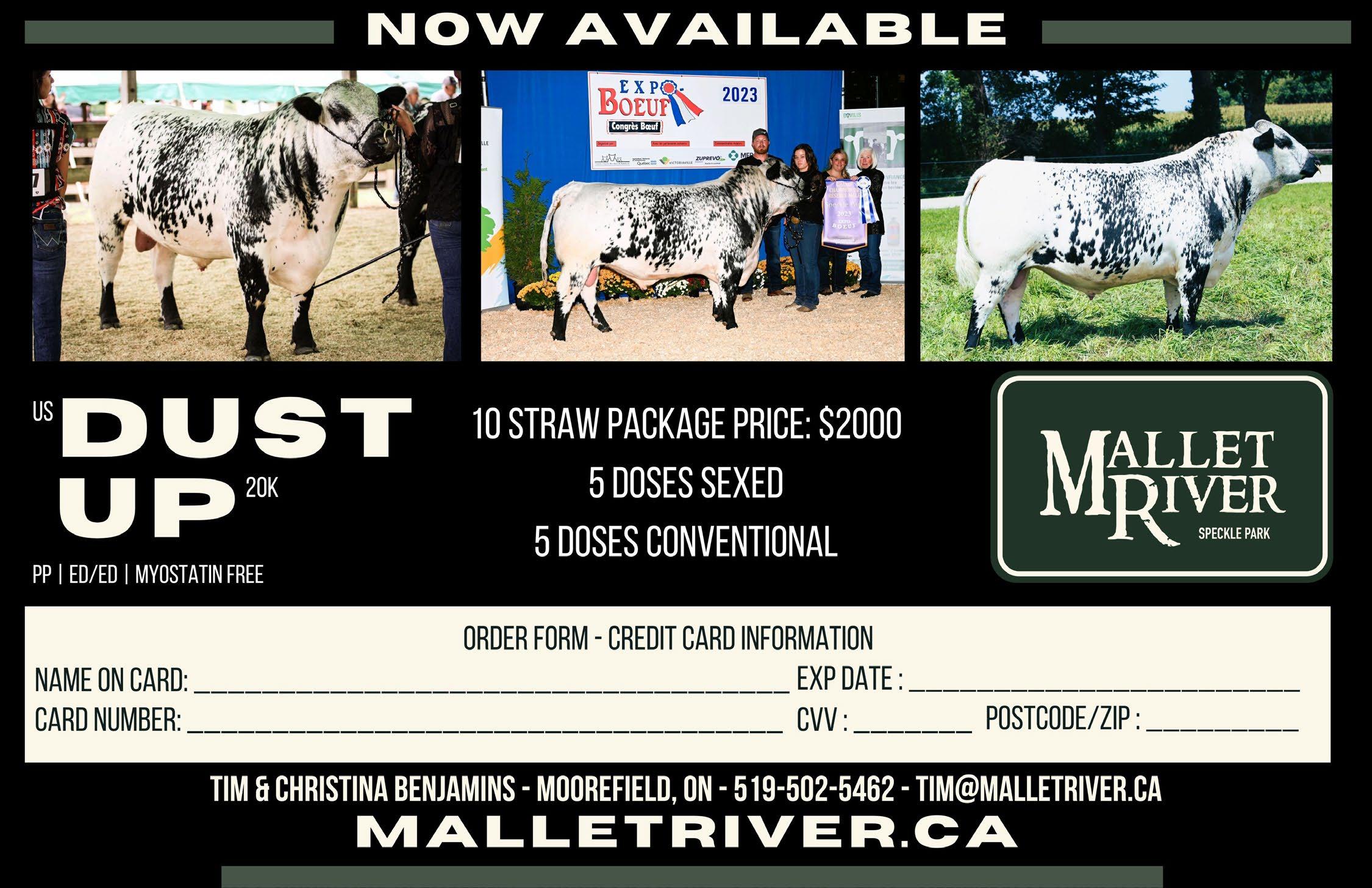
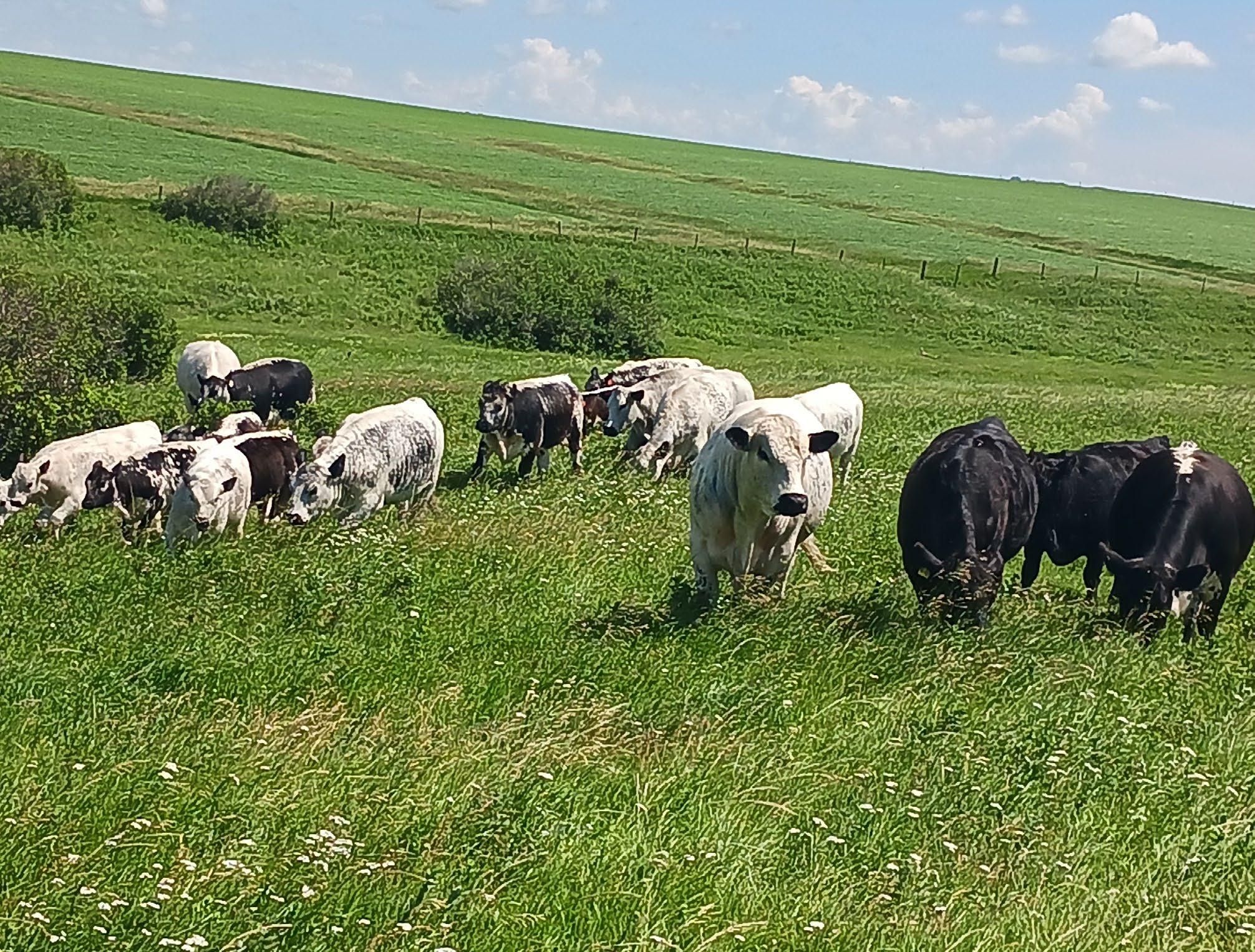
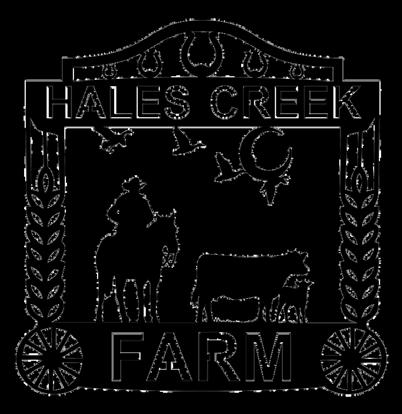


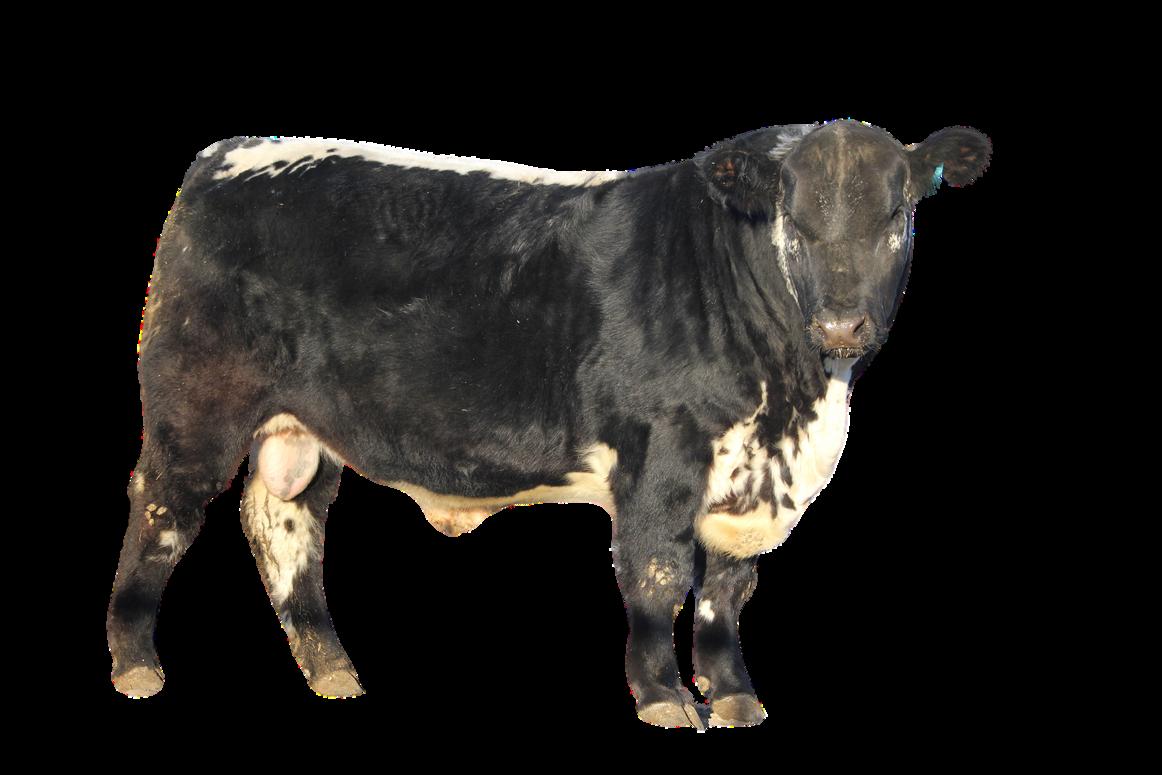





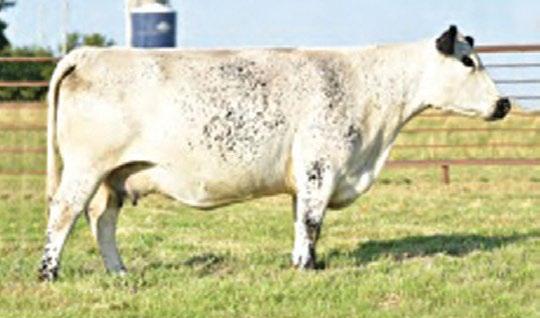

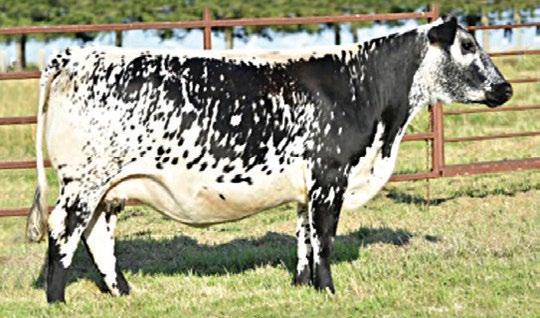

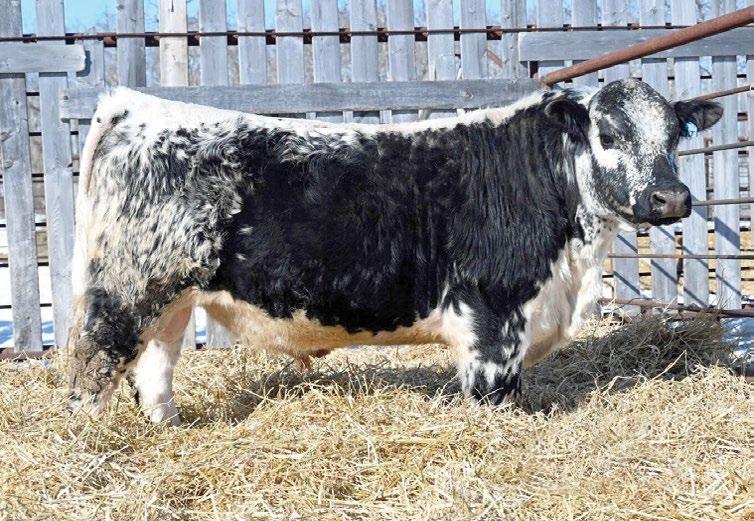
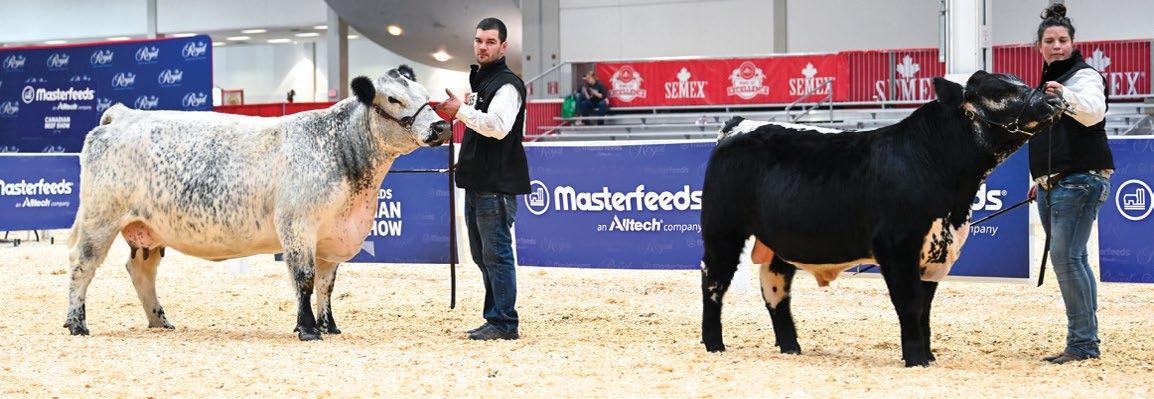








































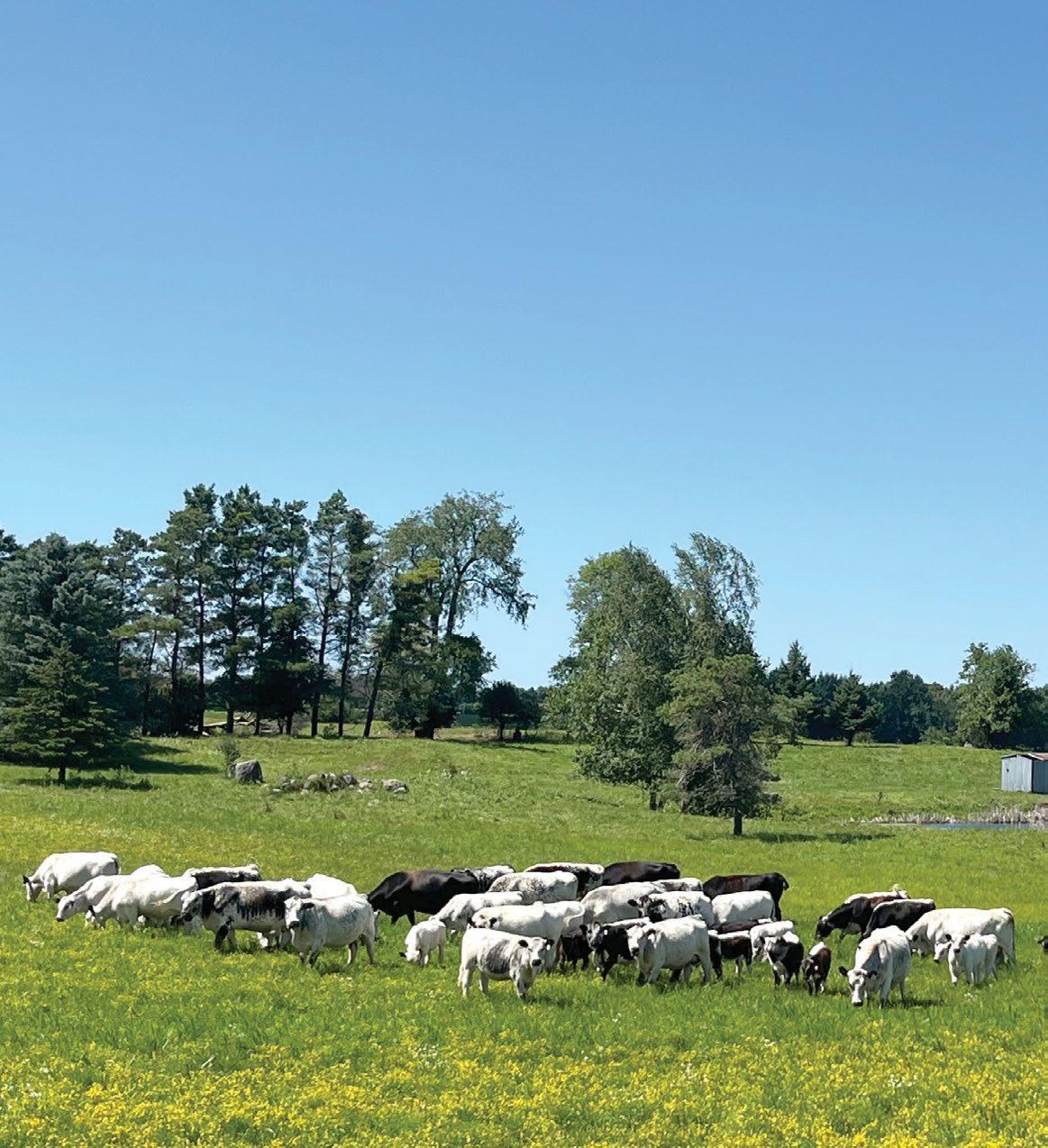




























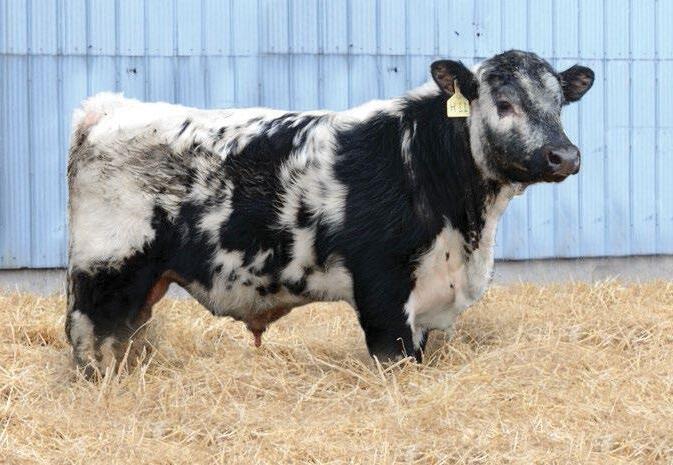
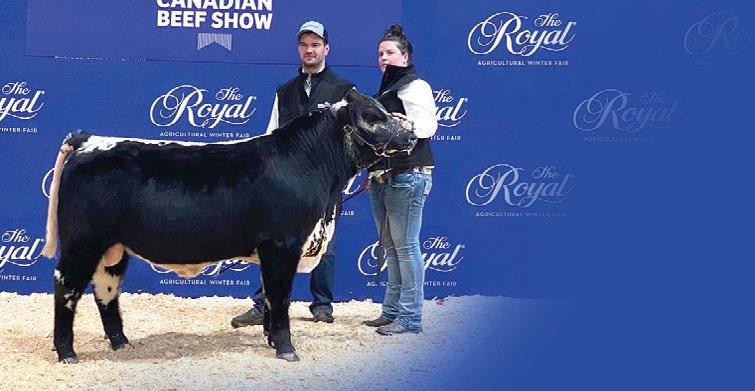
All animals are impacted by improper nutrition. Under conditioned or thin animals are recognizable within a herd, and adjustments to the rations are made to compensate. Over condition or obese animals are often overlooked. Changes to the ration are less likely to occur. Unfortunately, there are long term implications of feeding programs that exceed nutritional requirements of an animal.
Clinical symptoms of the “Fat Cow Syndrome,” listed by Morrow (1975), include depression, decreased appetite, reduced production, debilitation, anorexia, and increases in infectious diseases. Fatty liver syndrome can also occur. Discussion with a veterinarian is needed to address these situations and will not be covered in this article.
Animals gain weight when the ration provides excess nutrients, especially energy. There are times when this is advantageous to animal performance. Forages that are in the pre-bloom or pre-heading stage are usually high in nutrients, especially energy. Cows on lush spring pasture can gain 0.5 kg (1.1 pound), or more, per day, even during lactation. Animals that are in good condition and gain weight between calving and the start of the breeding season can start cycling 20 days prior to bull turnout (Bellows and Short). For these cows, conception rates improved by 15 to 20%, resulting in more calves born that year (Berg and McElroy). In this situation weight gain is beneficial.
Animals that gain weight continually over a lengthy period become obese. Unfortunately, the extra weight or body condition creates difficulties for each class of animal.
Mature cows can gain weight easier than two- or three-year-olds (first and second calving animals). Younger animals continue to grow until 3 years of age, when they will reach their full mature size. Mature cows only need to maintain condition. When animals gain an excessive amount of weight, fat is deposited throughout the body. For cows, this includes fat deposits in the birth canal, which restricts the space a calf passes through, creating
more calving difficulties. Work completed by Arnett found that dystocia increased from 6% to 40% for fat cows. Services per conception also increased from 1.43 to 1.7. Peak milk yield decreased by 1.9 pounds per day, resulting in a 34 pound reduction in calf weaning weight. After three years of obesity, 58% of the cows in the trial did not become pregnant. Thoughts are that the cows developed cystic ovaries and did not cycle.
Replacement heifers are less likely to become obese in the first year of growth. But high rates of gain during puberty can cause issues that last a lifetime. At the onset of puberty, udder tissue develops four times faster than any other tissue in the body. Over the years, recommended rates of gain to prevent this problem are between 0.7 and 0.8 kg (1.5 to 1.75 pounds) per day for British and British cross cattle and up to 0.9 kg (2 pounds) for exotic breeds. If the heifers grow too rapidly, fat is laid down in the udder instead of milk secreting tissue. This results in heifers having low milk production. Milk production cannot be increased with changes to the nutrition program or animal weight loss.
There is a new system recommended by Fungston (University of Nebraska Lincoln) that restricts heifer weight gain to 0.68 kg (1.5 pounds per day) to the midpoint between weaning and breeding. Then, the heifers were fed to gain more weight to be at a minimum of 60% of mature body size at the start of the breeding season. Heifer longevity in the herd is improved when following this system of feeding. It is noted that this research was completed in Nebraska, not the colder conditions that occur in Canadian winters. Caution is needed when interpreting these results.
Within the purebred industry, growing bulls are usually fed to obtain high rates of gain - 1.6 kg (3.5 pounds) per day or more. Semen quality is negatively affected when yearling bulls are over conditioned. Breeding soundness evaluations on over conditioned bulls resulted in a 55% failure rate. Bulls that carried moderate condition, had an 80% success rate. Over conditioned bulls had greater secondary sperm defects and reduced
motility. (Fontes, University of Georgia). In the over conditioned group of bulls, they found higher scrotal temperatures due to fat at the neck region, resulting in elevated testicle temperatures and thus the lower semen quality. This researched also reported that embryo development was reduced after the egg was fertilized by semen from over conditioned bulls.
Over conditioned bulls are more prone to hoof and leg problems. Lameness reduces the ability of the bull to travel and service cows. Also, if there is a fever accompanying the lameness, the bull becomes infertile for up to 60 days. The sperm die off due to higher body temperature. If the bulls were on very high grain rations, laminitis can also develop.

The difference in feed costs between the two groups in this example is $238 per cow or $9,520 for the 40 cow herd over 200 days.
During hot temperatures, an over conditioned bull has difficulty dissipating heat because fat is an insulator. The bulls may spend more time in the shade to cool off rather than breeding cows. If core temperatures of the bull increase, this is no different than a fever and sperm quality is negatively affected.
When obese animals are in the herd, feed costs increase. The inclusion of various grains or high energy byproducts increases the overall cost. As an example, forty pregnant cows in good condition have a body weight of 635 kg (1,400 pounds). To be considered obese, the body weight increases to a minimum of 750 kg (1,650 pounds). With a feeding period of 200 days, weight gain increases from 0.11 kg (0.25 pounds) to 0.69 kg (1.5 pounds) per day. Sample rations that meet energy requirements for each growth rate and associated ration costs are in Table 1.
At the end of the day, more obese animals (both male and female) in one’s herd lead to more open cows, and therefore fewer calves to sell in the fall. Culling open cows reduces the size of the cow herd. To replace culled animals, the choices are to buy or keep more replacement heifers. Time required for the replacement to deliver a calf is approximately 16 to 18 months. Manitoba Agriculture (link below) determined that it costs approximately $3,500 to develop a replacement heifer. The advantage of keeping heifers is that the genetics are known and are a better fit into the existing program. Buying replacements is an option, but it takes a couple calves to know if the purchase was justified or not.
Obese animals are a concern no different than thin animals. Rations need to be adjusted for body condition, environmental factors, age of the animal, stage of pregnancy, required growth rates, and health status. A balanced feeding program cannot be accomplished without accurate feed test results and information relating to animal type and expected performance.
The Beef Cattle Research Council (BCRC) is now selling CowBytes 5.4 ration balancing software, for those who want to balance their own rations. Feed companies, provincial extension services, and private nutrition consultants can provide services to help with this endeavor. There are costs associated with developing and feeding balanced rations, but these are minor compared to the potential losses from having open cows or providing too much feed.
Support links of interest:
https://www.agproud.com/articles/58484-consequencesof-overconditioning-beef-bulls#:~:text=Feeding%20 high%2Denergy%20diets%20to,issue%20in%20the%20beef%20 industry.
https://www.gov.mb.ca/agriculture/farm-management/ production-economics/pubs/cop-beef-300-cow-calf.pdf
Test stations and RFI (Residual Feed Intake) trials are valuable tools in the field of animal husbandry and agriculture for several reasons:
1. Genetic Selection: These trials help in identifying superior genetics for breeding purposes. By monitoring the performance of cattle in test stations or animals in RFI trials, breeders can assess traits such as growth rate, feed efficiency, temperament and overall health, which are important for genetic selection programs aimed at improving livestock quality.
2. Efficiency Improvement: RFI trials specifically focus on feed efficiency, which is a crucial factor in livestock production. By identifying animals with lower feed intake relative to their production performance, producers can select for traits that improve feed efficiency. This contributes to cost reduction and sustainability in livestock farming by minimizing feed wastage and environmental impact associated with excessive feed consumption.
3. Economic Benefit: Improved genetics and feed efficiency lead to economic benefits for producers. Animals selected through these trials are likely to have lower production costs and higher profitability due to better growth rates and reduced feed expenses.
4. Research and Development: Test stations and RFI trials serve as platforms for research and development in animal genetics, nutrition, and management practices. The data collected from these trials can be analyzed to gain insights into the physiological mechanisms underlying feed efficiency and other important traits. This knowledge can then be applied to further enhance breeding programs and agricultural practices.
Test stations and RFI trials play a crucial role in advancing the efficiency, profitability, and sustainability of livestock production systems. They provide valuable information for breeders, producers, and researchers, ultimately contributing to the continued improvement of agricultural practices and the quality of livestock products.
Test stations and RFI trials serve as important tools for breed associations to uphold and improve breed standards, improve individual breeding programs, support members, promote the breed, and contribute to the overall advancement of the livestock industry.
Test stations and RFI trials are valuable to a breed association for several reasons:
1. Quality Assurance: By conducting these types of trials, breed associations can ensure that animals registered or certified under their breed standards meet certain performance criteria. This helps maintain the integrity and reputation of the breed by ensuring that only highquality animals are promoted and sold to breeders and producers.
2. Data Collection: These trials generate valuable data on various performance traits such as growth rate, feed efficiency, and carcass characteristics. Breed associations can use this data to update breed standards and provide useful information to members regarding the genetic potential of different bloodlines within the breed,
3. Breeding Program Improvement: Test stations and RFI trials provide breed associations with insights into the genetic merit of different animals within the breed. This information can be used to identify elite sires and dams for breeding purposes, thus accelerating genetic progress, and improving the overall quality of the breed over time.
4. Member Education and Support: Breed associations can use the results from these trials to educate their members about the importance of performance testing and selection criteria in breeding decisions. They can also provide support and guidance to members on how to interpret performance data and make informed breeding choices to achieve their production goals.
5. Promotion and Marketing: The resulting data collected from test stations and RFI trials can be used by breed associations for promotional and marketing purposes. Highlighting the superior performance of animals within the breed can attract potential buyers and enhance the marketability of the breed, thereby benefiting breeders and increasing demand for the breed.
6. Industry Recognition: Breed associations that actively participate in performance testing and evaluation programs gain recognition and credibility within the livestock industry. This can lead to increased collaboration opportunities with other industry stakeholders, such as researchers, producers, and government agencies, to further promote and advance the breed.
Both heifer and bull tests available for producers to participate in between March and June. A standard test period is 71 days (21-day adaptation period plus 50-day test). Measurements and data returned to the producers include daily feed intake, average daily gain, and residual feed intake (efficiency). They also arrange for ultrasound measurements for those who are interested. Information can be shared with the breed association as applicable. Their rations are barley silage/wheat silage based with barley grain and supplement. Targeted gains are 2.25 lbs/day for heifers and 3.0 lbs/day for bulls. Pricing will vary based on ingredient prices at the time of the trial as there is a research fee + daily feed and yardage charged for each animal.
Annually efficiency tests are started November 1st.
Testing is available for bulls, heifers and steers. Cattleland provides average daily gain data (they do not have RFI bunks). This data can be used to rate individual animal performance within the group on feed. During this trial, animals are put on a 30 ration. 30 ration is a feed formulation where the ratio of grain to protein is approximately 30 parts grain to 1 part protein. Weight is taken of each animal upon arrival and then they are weighed every 28 days until day 112. These frequent weigh ins result in a nice growth curve and provide a way to index the animals based on performance within that group.
New producers are welcome at any time throughout the year. Timing largely depends on what exactly the producer is looking to do. For example, a producer may want to start feeding a group in September to get the calves ready for early spring bull sales. Alternatively, if the goal is to feed bulls throughout the winter to get them ready for breeding season, they may start feeding later in the year.
Prices vary throughout the year and the price also changes based on the number of animals you choose to bring in. Mock estimates can be provided upon request. Contact Kristine Burgess for more information kristine@cattleland.ca
Three to four test periods are run over the winter/ spring and typically finish up in June. Three test pens run at the same time, so in essence that's 9 to 12 test groups per year. If you want to participate in one of these trials, the sooner you are able to get in touch with the college ahead of their test start dates (Nov, Jan, March), the better, but often they are able to accommodate smaller groups just a few weeks prior to delivery.
Additionally, they have capacity to run a few pens of steers (upwards of 150) for anyone looking for “feed-em”, “weigh-em” type of data. If needed/wanted, this can be co-organized with larger processing facilities such as Cargill or Harmony to be able to gather carcass data.
Olds College also offers temperament assessments for animals, usually on campus but sometimes on-farm for the producers, should that be of interest.
Reach out to Sean Thompson for more information sthompson@oldscollege.ca
Test groups available for both bulls and heifers – bull & heifer self fed test as well as a limit fed heifer test.
Cut off date for entry into program is in September. Cattle move into the yards early October and regimented feeding/testing begins end of October.
Cattle are weighed every 28 days for 112 days.
They also offer the convenient option to sell bulls and/or heifers in the Manitoba Bull Test Sale that takes place in March (cattle are pictured, videoed and prepped for the sale on site).
Bulls and heifer are fed a 12% protein ration for a warmup period and grass hay. After the initial warm up the bulls are switched to a 13% protein ration and unlimited grass hay. Targeted gains for bulls is 3 lbs per day. The heifers remain on the 12% throughout the test period. There is also a second heifer group that is on a limited feed program. These heifers are fed a 12% barley pellet with the goal of having them gain 2lbs/day. They are topped out at 8lbs of grain/day and grass hay.
All bulls are ultrasounded (for ribeye, lean meat yield, marbling and back fat) and semen tested. Consignors can choose to additionally have their
heifers ultrasounded. Prospective buyers are provided with current EPD's, CUP Carcass Data, and Performance Data (both ADG and WDA). Scrotal circumference will be adjusted to 13 months (395 days) of age.
Additional programs of interest at the Manitoba Bull Test:
Develop bulls born in April, May, and June. These bulls need to be delivered in mid-November and are put on a 112-day test starting in January. They then return to the Station the following November and are conditioned for sale.
Custom feeding of yearling bulls. A convenient option for those who find it a challenge to find a place to hold these older bulls for the winter. The goal for these yearling bulls is to have the bulls in prime condition for the next breeding season.
Lastly, ask about their A.I. Program. Heifer consignors and buyers have the option of entering their females in this program. Other females can be delivered after the Bull Sale.
Contact Cam Wood for more information at 204-856-6568 or via email at bulltest@mynetset.ca
AUTUMN DEBUTANTE SALE
RED
NOVEMBER
THE
CANADIAN WESTERN AGRIBITION NATIONAL SALE
INTEGRITY SPECKLE PARK SALE
WILCOX, SKYE LINE, HALES CREEK - SELECT FEMALE SALE
THE
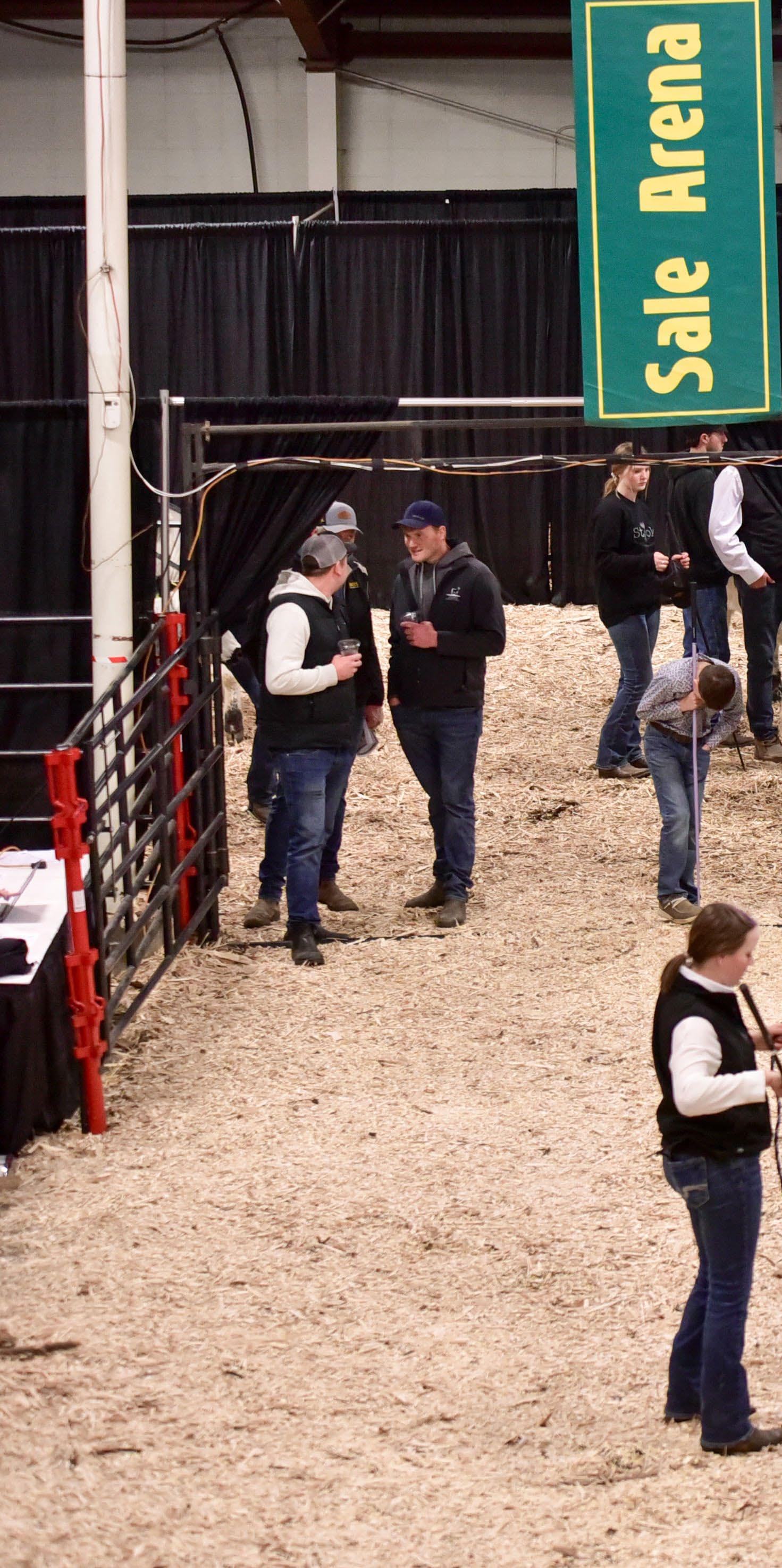
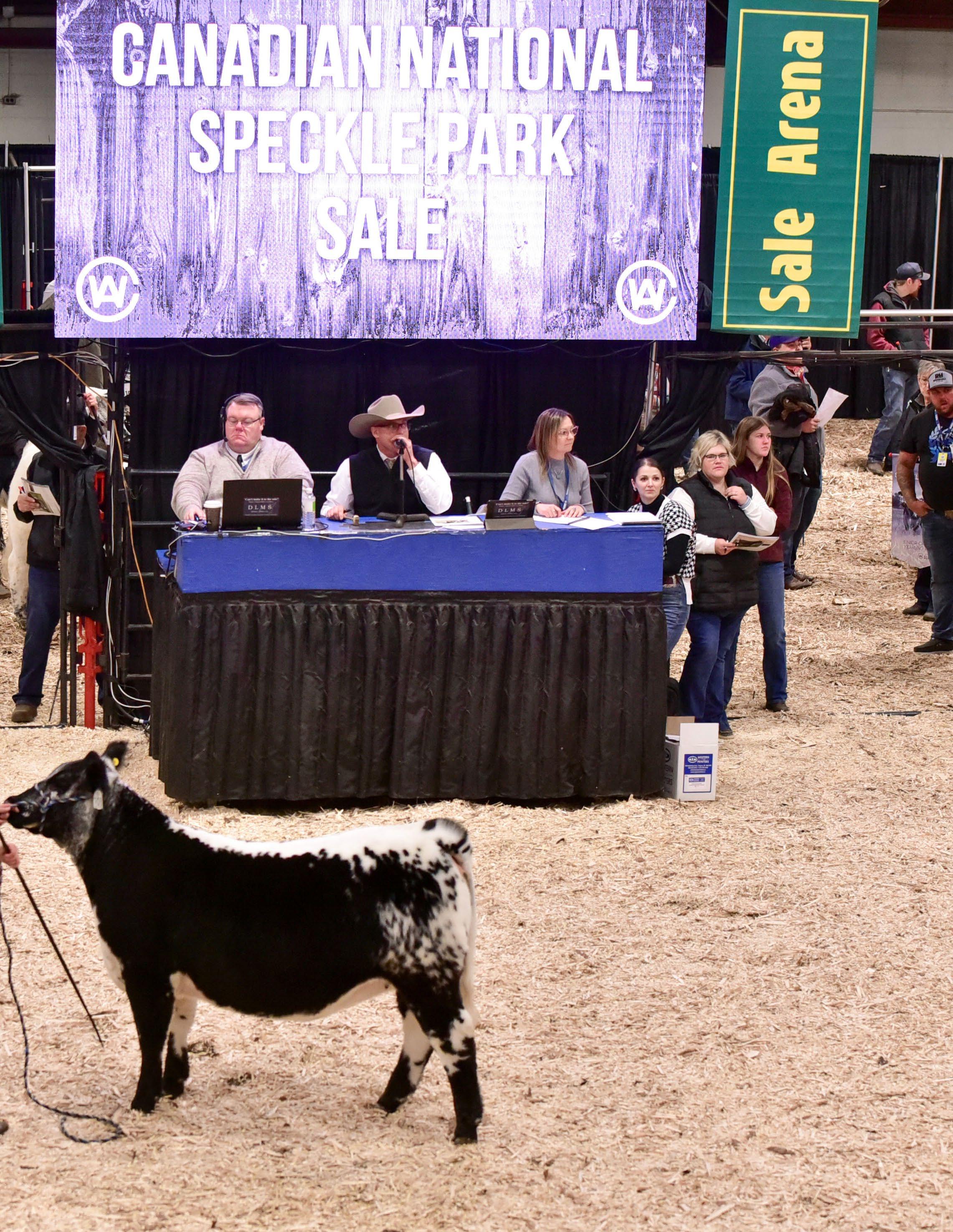
The Irish Speckle Park Society was founded in 2008 following the importation of embryos from Canada the preceding year.
We were the first international breeding program outside of Canada, the home of the breed.
Since then, we have fallen in love with the amazing traits, colour definition and profitability these easily fleshed animals provide.
The Irish Society oversees governance and manages Speckle Park cattle within our extended catchment area, ensuring breeding rules and regulations are adhered to.
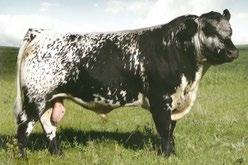

As we enter the 2024 show season, we hope Irish Speckle Parks will emulate the success Canadian breeders have attained.
To garner public interest and highlight the breed, we will be attending various shows around Ireland, as well as encouraging our breeders to host open days.
Irish Speckle Park Society has increased its geographical profile into the Netherlands.
In recent years, the society has seen a huge increase of pedigree calf registrations, with continued growth of our members and breeders list. Dairy and Suckler farmers are also gaining substantial benefit given a sharp uprise of Pedigree Sire sales and Speckle Park crossbreeds entering the local commercial markets.
seen a huge increase of pedigree cal f registrations, members and breeders list. Dairy and Suckler farmers benefit given a sharp uprise of Pedigree Sire sales and entering the local commercial markets.
In recent years, the International shipment of Canadian embryos has not only gained new breeders in Ireland but has given a much-needed injection into our gene pool."
International shipment of Canadian embryos has not only gained given a much -needed injection into our gene pool.
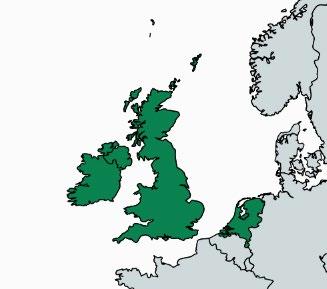
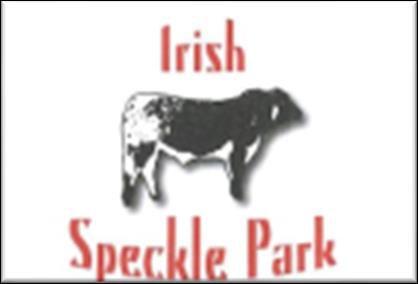
The Irish Speckle Park Society was founded in 2008 the importation of embryos from Canada the preceding

According to the most recently available data, Speckle Park is the 10th largest beef cattle breed in Australia by purebred registrations – ahead of Simmental in 11th position and only just tailing Limousin by less than 60 registrations.
Over the last few years, Speckle Park International has seen an explosion in its membership, currently having over 650 members. SPI currently has over 7,000 active dams in our female inventory – this is off the back of 4,979 animals being registered with SPI in the 2023 calendar year.
With nine board members and a Marketing & Events Committee, Technical Committee, Youth Committee and various additional volunteer groups targeting events, SPI remains committed to delivering on its strategic objectives into the future, including but not limited to, research and development programs and trials, sustainability focused groups and lifting our marketing of this great breed to more tactical levels.
Within the last 12 months, SPI has rolled out multiple exciting initiatives for the future success of Speckle Park.
These initiatives include:
In July 2023, Single-Step Genomics was implemented for the Speckle Park BREEDPLAN analysis. A major upgrade, the single step methodology allows genomic (DNA) information to be incorporated into the Speckle Park BREEDPLAN analysis, and used, alongside pedigree and performance information to provide even greater accuracy in the calculation of Speckle Park
Conventional BREEDPLAN EBVs are made up from a starting point of mid-parent or parental average figures (i.e 50% Sire 400 day growth x 50% Dam 400 day growth). Raw data input is then applied to that starting point for EBVs to be adjusted up or down. However, as we all know, full siblings can be vastly different – this is as a result of traits being inherited at different rates from either parent. Adding genomics to BREEDPLAN analysis allows regard to be had to an animal’s true genetic relationship to other animals in its pedigree thereby supercharging the accuracy of its EBVs.
Selection indexes assist beef producers to make selection decisions that take into account the relevant growth, carcase, fertility and efficiency attributes of each animal to identify candidates whose progeny will be the
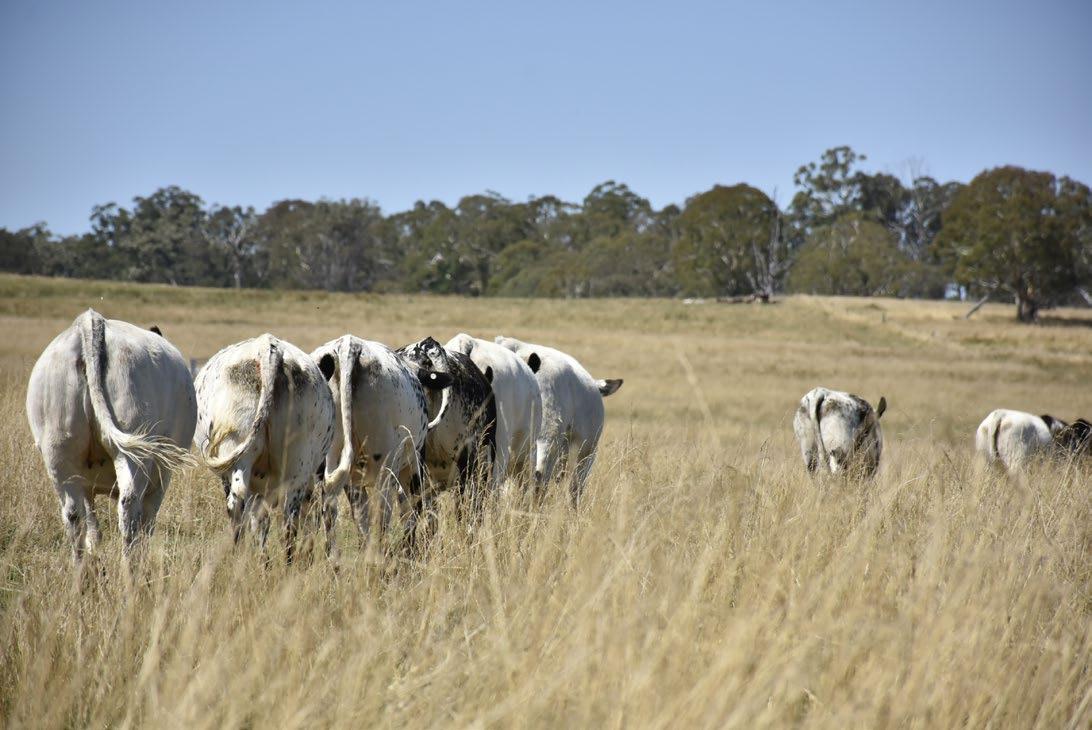
most profitable for a particular commercial enterprise. Selection indexes provide an overall indication of an animal’s genetic value for profit into a specific production system/target market and are calculated based on weightings placed on individual traits that are deemed to be important for that production system. SPI has introduced 4 selection indexes initially: Domestic Maternal, Domestic Terminal, Export Maternal & Export Terminal.
Since the event’s commencement in Australia’s Bicentennial year of 1988 to celebrate the Beef Industry’s achievements and contribution to the development of our great nation, Beef Australia has developed into an internationally recognised event with major industry trade, and regional community outcomes.
Now, some 35 years later, the event has grown to become the cattle industry’s national exhibition, attracting over 120,000 people from across Australia and around the world.
Today, Beef Australia exists for the advancement of the Australian Beef Community and has a vision to be a world-class organisation that promotes, advances, and celebrates a sustainable beef industry.
SPI is a proud supporting partner of Beef 2024 and will have a large trade site at the event to showcase this wonderful breed before a diverse national and international audience.
If any CSPA members are intending on attending Beef 2024, please contact SPI by email (marketing@specklepark.org) as we would welcome the opportunity to involve you in our events where possible.
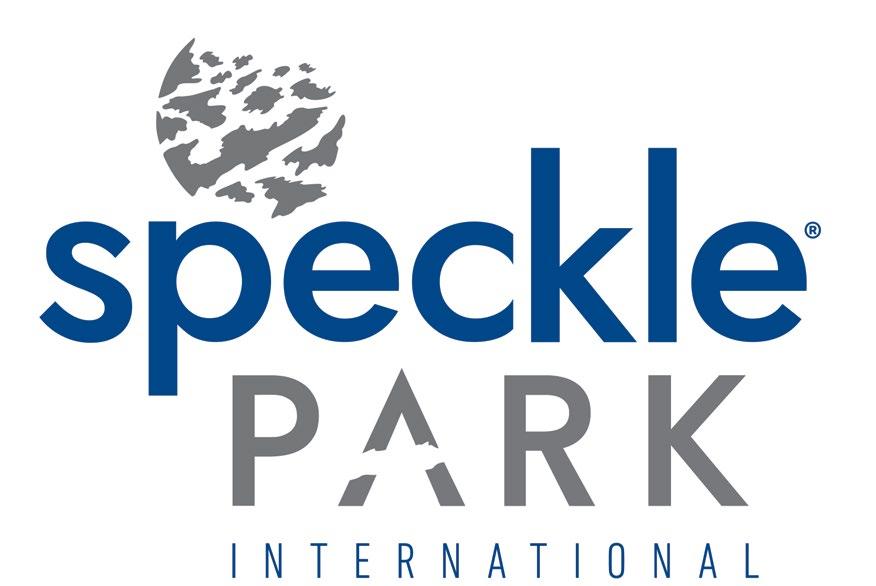
BRITISH COLUMBIA KFC FARMS LTD ABBOTSFORD, BC info.kfcfarms@gmail.com www.kfcfarms.com
HARVEST HOWES JR BARRIERE, BC
TRACEY FOSTER
CHARLIE LAKE, BC 250-264-8676 leggs123@outlook.com
VALLEY BOTTOM RANCHING PETER WEITZEL CHARLIE LAKE, BC
GREEN VALLEY FARMS CHILLIWACK, BC brandonkooyman_10@hotmail.com
MARBLEN FARMS CHILLIWACK, BC bklaassen@jakesconstruction.ca
Dustin Kloot Chilliwack, BC dustinkloot@gmail.com
MIRRENNA FARMS
ADAM AND DANICA WEBSTER CHILLIWACK, BC 778-344-3199 mirrennafarms@gmail.com
NEW MIRRAH WEBSTER JR CHILLIWACK, BC
NEW MCKENNA WEBSTER JR CHILLIWACK, BC
CHRIS TRAVERS COWICHAN BAY, BC christraverstruck@gmail.com
JASON HARVEY DAWSON CREEK, BC jason.harvey@cnrl.com
WILLIAM HARVEY JR DAWSON CREEK, BC harveywilliam89@gmail.com
NATHAN LICHTI DAWSON CREEK, BC 250-219-7443 telichti8@gmail.com
MARIAH HARVEY JR
DAWSON CREEK, BC mariahharvey2007@gmail.com
MARC & KATIE TANNER
DAWSON CREEK, BC 250-219-2614 Katievipond1@hotmail.ca
DARCY & NINA WIDEMAN FORT ST JOHN, BC darcywideman78@gmail.com
ADAM & JALENE LILLEJORD GALLOWAY, BC 250-919-6269 jlillejord@jord6.ca
LISA TOWNSEND GOLDEN, BC latenight007@hotmail.com
JACK & KELLY MATTSON HAZELTON, BC 250-842-8174 jackmattson5@gmail.com
JONATHAN & STACY GALBRAITH LOWER NICOLA, BC sgrfarms@gmail.com
WENDELL & KARLA MCKNIGHT MCLEESE LAKE, BC
JOE & FAY NICODEMUS NORTH VANCOUVER, BC 604-831-3630 mlnicodemus@shaw.ca
PETER & IRIS GIESBRECHT ROSE PRAIRIE, BC rainbow5350@hotmail.ca
TAMMY UNRUH ROSE PRAIRIE, BC trunruh@pris.ca
THOMAS & LEANNE KINDLER TELKWA, BC dkrspeckleparks@outlook.com www.dkrspeckleparks.com
KEN & JUDY JOHNSTON WILLIAMS LAKE, BC johnstonjudi@hotmail.com
ALBERTA
JEFFREY SLOAT & LAURA-LEE TOEWS ACME, AB 403-651-6514 lauralee_toews@hotmail.com
GARY & NANCY KIZIAK ARDROSSAN, AB codiak@albertacom.com
GARY & NANCY KIZIAK & GREG DE & KELSEY KNOTT ARDROSSAN, AB codiak@albertacom.com
GREG DEEANN & KELSEY KNOTT ARDROSSAN, AB 780-220-2069
PAULA KITTO ATHABASCA, AB 780-213-4283 pkitto68@gmail.com
NEW HARMONY SPECKLE PARK CINDY HUDSON BASHAW, AB 780-372-2190 77chudson@gmail.com
BLACKFOOT INDUSTRIES BAY TREE, AB 780-808-1873 sherine81@hotmail.com
DOUG EPP BEAVER COUNTY, AB 780-977-5227 dougepp2003@yahoo.ca
NEW KAY-LEE ZBUDOVSKI-NYGREN KAY-LEE ZBUDOVSKI-NYGREN BEAVER COUNTY, AB 780-977-9562 kzbudovski@gmail.com
CODY MURRAY BEAVERLODGE, AB cdymurray@yahoo.ca
BILLIE & DEAN SMITH BEAVERLODGE, AB 780-518-5225 db_smith@telusplanet.net
KATELYN KONRAD BENALTO, AB 403-348-7086 konradkatelyn@gmail.com
CAELIDH JOHANSON BENTLEY, AB 4033589141 cjohanson5@live.ca www.facebook.com/CaejohcaSpeckleParkCattle/
ED AND DIANNE SCHERBINSKI BLACK DIAMOND, AB 403-860-6847 • diannescherbinski@gmail.com
DAN & HEATHER BRUNDIGE BONNYVILLE, AB 780-812-9250 d_hbrundige@yahoo.ca www.wolflakespecklepark.com
LILLIANNA BRUNDIGE JR BONNYVILLE, AB 780-812-9250 d_hbrundige@yahoo.ca
SHADOW RANCH
DUSTIN DAFOE & JENNIFER WEEKS BROOKS, AB jweeks@ualberta.ca
David Lysak BUCK CREEK, AB 780-974-6174 David linacy2002@yahoo.ca
LEE JACK CATTLE COMPANY CALGARY, AB leejackcattleco@gmail.com
DARIN LORNA & SHAYLA MALMBERG CARSELAND, AB malmberg37@gmail.com
DAN DEE RIO RANCHING LTD CASTOR, AB gorcon64@gmail.com
PICK-IT LIVESTOCK LTD CHIPMAN, AB laynepickett@hotmail.com
BRETT & CARO LUCAS CLARESHOLM, AB 403-625-4797 piercedheartlivestock@gmail.com
DIAMOND RIO CATTLE CLIVE, AB diamondriocattle@gmail.com
TODD ZWICKER & KELLI KINSMAN COUNTY OF BARRHEAD, AB 780-674-0150 kinsmanvet@gmail.com
MASON ZWICKER JR COUNTY OF BARRHEAD, AB
BRONWYN ZWICKER JR COUNTY OF BARRHEAD, AB
RODNEY REMIN CROSSFIELD, AB 403-946-4635 remindachs@xplornet.com
GARY & KAREN LARSEN CROSSFIELD, AB gandklarsen55@rogers.com
KEVIN LARSEN CROSSFIELD, AB kmlarsencontracting@gmail.com
MEAGAN SAUM CROSSFIELD, AB meagan@silvervalleyranch.com www.silvervalleyranch.com
KYLE SAUM CROSSFIELD, AB kyle@silvervalleyranch.com www.silvervalleyranch.com
CALAMASUE DELIA, AB calamasue@netago.ca
ASHLEY ANDERSON DIDSBURY, AB 250-845-4084 abreuer88@gmail.com
RILEY BREUER JR DIDSBURY, AB 250-845-4084 abreuer88@gmail.com
BLAKE BREUER JR DIDSBURY, AB 250-845-4084 abreuer88@gmail.com
STACIE HUNTER DONALDA, AB 403-742-9476 staciehunter07@gmail.com https://countryside-speckle-park-shorthorn. gator.site/
TELL CALVERT DRAYTON VALLEY, AB telldcalv@gmail.com
ROBERT & CINDY SZKALUBA DRAYTON VALLEY, AB 780-898-9606 cestew@hotmail.com
TYLER & MELANIE CALVERT DRAYTON VALLEY, AB 780-514-4026 tyler.s.calvert@gmail.com
TRAVIS & SHELAINE BATEMAN DRAYTON VALLEY, AB 780-898-3790
66 RANCH LTD
MALISSA CAMPBELL DUCHESS, AB 403-501-9358 beasleym26@yahoo.com
SLF RANCH EDGERTON, AB 780-806-3886 llynn@telusplanet.net
JAY BARANIECKI EDMONTON, AB support@dogsportapps.com www.edgewayranch.com
OCTAVE 40 RANCH INC. EDMONTON, AB 587-873-7522 mjohnson@chainofevents.ca
NEW SWEETGRASS CUSTOM FARMING MATTHEW COCHRANE ETZIKOM, AB 902.969.6002 matt@sweetgrasscustom.ca
MICHAEL LUCIAK GLENDON, AB mluciak@hotmail.com
KESSLER CORNER CATTLE OPERATION BILL AND BRENDA GILBERTSON HUGHENDEN, AB 780-856-3577 brenda-gilbertson@hotmail.com
A & W FARMS LTD. ISLAY, AB 780 744 2246 w.gould@mcsnet.ca
KEEGAN & MIRANDA MILLER LA COREY, AB 780-545-8098 keegan@muskokaprairie.ca www.MuskokaPrairie.ca
HEART ROCK RANCH
MATT & STARLA HOFFE LAC LA BICHE, AB
DC HALF DIAMOND FARMS
DREW CARRIERE LEDUC, AB 780-850-7410 sydney@halfdiamond.ca dchalfdiamond.ca
JD HALF DIAMOND FARMS
DENIS AND JONI CARRIERE LEDUC COUNTY, AB 780-893-7019 joni@halfdiamond.ca halfdiamond.ca
GREENWOOD
LLOYDMINSTER, AB 780-808-6882
dalton@greenwoodspecklepark.com www.greenwoodspecklepark.com
GREENWOOD & IVERY DOWNS
DALTON PAYNE & STACEY JONES LLOYDMINSTER, AB Dalton: 780-808-6882 dalton@greenwoodspecklepark.com
HIGHWOOD VALLEY LIVESTOCK JACE ELLIOTT LONGVIEW, AB highwoodvalleyinc@gmail.com
ERNIE STOODLEY LOUGHEED, AB stoodleyholdings@gmail.com
ALLSOP FARMS CATTLE THOMAS ALLSOP MAGRATH, AB 403-758-3745 t.d.allsop@gmail.com
EDDIE LANE MAYERTHORPE, AB kimlane09@gmail.com
REBECCA LANE MAYERTHORPE, AB 780-305-5065 kimlane09@gmail.com
LITTLE SPECKLED ACRES CLINT AND TIFFANY MAERZ MAYERTHORPE, AB 780-515-1636
BERNARD & SHARON PINARD NAMPA, AB pinard.critter.camp@gmail.com
MONICA WILLE OKOTOKS, AB 250 4752313 mewille@willedodge.com
SNOWY PEAK DANIELLE BRADISH OKOTOKS, AB Danibradish@gmail.com
BOSS CATTLE CO OLDS, AB bosscattleco@gmail.com
BAR SG RANCHES OLDS, AB 403-507-5000 cows@barsgranches.ca www.barsgranches.ca
HQ LIVESTOCK QUINCI JONES OLDS, AB
NEW AUSTIN CARTWRIGHT JR OLDS, AB 587-576-4192
DEAN & CHANTELE JOWSEY ONOWAY, AB 7806194682 mgaspecklepark@gmail.com
WILF SUNDERLAND PARADISE VALLEY, AB sunderland@mcsnet.ca
WESLEY & LISA NEWTON PENHOLD, AB 403-352-7270 cwlnewton@gmail.com
CALVIN & ROBIN YOUNG PICKARDVILLE, AB 780-674-2274 rcmyoung88@hotmail.com
MIKE & CHRISTINE BRAUND PLAMONDON, AB backcountry05@gmail.com
KEN & TANIA MALTERER PONOKA, AB 403-704-0342 ponderosafarms@cciwireless.ca
KAITLIN MALTERER PONOKA, AB ponderosafarms@cciwireless.ca
KRISTOFER MALTERER PONOKA, AB ponderosafarms@cciwireless.ca
ALTA GENETICS INC ROCKY VIEW COUNTY, AB 403-226-4236 dawn.wood@altagenetics.com altabeef.com
ERIN MURPHY-THOMPSON ROSALIND, AB 780-678-5971 thompsonfarmwp@gmail.com
WYNTER WEISS SILVER VALLEY, AB wyntergiroux@hotmail.com
STEVE & SUSIE JACK SPIRIT RIVER, AB 780-499-9699 steveandsusiehome@gmail.com
M BEXSON STROME, AB
WAYNE & LINDA MEAKIN STURGEON COUNTY, AB 780-777-3671 waytec@mcsnet.ca
405009 ALBERTA LTD STURGEON COUNTY, AB linda_patry@live.ca
KARY CATTLE COMPANY DUANE AND LYLE KARY STURGEON COUNTY, AB 780-818-7698 duanescows@hotmail.com
SAMTIA SPECKLE PARK TABER, AB 403-634-8226 • gleim.lee@cavendishfarms.com
HEATHER & IVAN BOWMAN VERMILION, AB 780-853-0777 ihbowman@mcsnet.ca
CROOKED BRANCH RANCH VERMILION, AB 780-581-5201 kimsfrederick@gmail.com
CROOKED CREEK SPECKLE PARKS TYLER AND JAIME BALASH VERMILION, AB 780-210-2118
SHAWN AIMEE & KESTON ARTINDALE JR WAINWRIGHT, AB aartindale@outlook.com
KD RANCH ALBERTA DENAY AND KENNETH BJORNSON WANHAM, AB
780-882-3541 (Denay) KDRanchalberta@hotmail.com
SUNRISE RANCH LTD WESTLOCK, AB sunriseranch2@gmail.com
WRANGLER FARMS WESTLOCK, AB 17803491650 wademeakin@msn.com
CRAIG & DEONNE BROWN WETASKIWIN, AB 780-360-3276 maplelanestockfarm@gmail.com
ELIZABETH RIEHL JR WILDWOOD, AB 780-325-2691 lzbthriehl0280@gmail.com
444 RANCH YELLOWHEAD COUNTY, AB 403-880-7516
444ranchredneckspecklepark@gmail.com www.444ranch.com
SASKATCHEWAN
MOSTERD SPECKLE PARK ABERDEEN, SK 306-203-1919 pjmosterd@hotmail.com
MOONLIGHT MEADOWS RANCH MATTHEW & MELISSA MARTENS ABERDEEN, SK 306-229-3453 matthew-martens@hotmail.com
GARRY & PAT PEACOCK ASQUITH, SK 306-222-0883 gpeacock@sasktel.net
NEW GWYNETH DUNSMORE GWYNETH & ANDREW DUNSMORE ASQUITH, SK 226-261-0330
BRITT MULLIN BATTLEFORD, SK brittanymullin@gmail.com
GLEN & BARBARA ZEREBESKI BLAINE LAKE, SK 306-497-7721
greenhillslivestock@hotmail.com
DWAYNE & LORI CHUTE CHURCHBRIDGE, SK rafter7@xplornet.ca
BELMORAL FARMS DUBUC, SK b.jella@sasktel.net
TRADEMARK RANCHING EDAM, SK ttranchtm@gmail.com
REBEL CATTLE CO
KYLE AND COURTNEY YAREMCHUK ENDEAVOUR, SK 306-547-8557 kyleyaremchuk@gmail.com
DARLA SAUTER
FAIRLIGHT, SK sdsauter@sasktel.net www.secondchancespecklepark.com
MERL ZWEIFEL
FRENCHMAN BUTTE, SK moovinzpotz@hotmail.com
BLUE SKY SPECKLE PARK JOHN GOOHSEN GULL LAKE, SK 306-672-4448 jody_john@hotmail.com
INCH CREEK CATTLE COMPANY
SHELBY TAYLOR HAFFORD, SK 306-716-4413 inchcreekcattle@outlook.com
HARV & FRAN FEHR HAGUE, SK 306-290-6780 highmark.hf@gmail.com
BRENT & KENT PORTER
KINISTINO, SK 306-864-7527 (Kent) banddporter@sasktel.net
SPRING COULEE ENTERPRISES LTD LAKE ALMA, SK 306-869-6741 lakealma@sasktel.net www.fradettecattle.com
HEIDI FRADETTE JR LAKE ALMA, SK 306-869-5219 specklegirl@gmail.com
AMY FRADETTE JR LAKE ALMA, SK fradettecattle@icloud.com
ANDREA FRADETTE JR LAKE ALMA, SK fradettecattle@icloud.com www.fradettecattle.com
PECKOVER FARMS LAMPMAN, SK 306-487-2748 peckoverfarms@signaldirect.ca
WES HEIN LANIGAN, SK 306-365-7456 Wes_Hein@hotmail.com
PAR MX RANCHS LASHBURN, SK 306-823-7209 r.mchibri@sasktel.net
STELLA DUCHERER JR LASHBURN, SK stellaraeducherer@gmail.com
NEW ALIVIA AINSLIE JR LASHBURN, SK alivia.d.a@icloud.com
PAR RANCH LLOYDMINSTER, SK par.ranch@sasktel.net
JOHNER STOCK FARM MAIDSTONE, SK 306-248-1305 johnerbulls@gmail.com www.johnerstockfarm.net/
DAVID & ARLINDA JOHNER MAIDSTONE, SK 780-205-4630 jsf3@sasktel.net www.johnerstockfarm.net
90 MILE FARMS LTD. MANKOTA, SK 306-642-8349 dmuldoon@lincsat.com
WINDY VALLEY CATTLE COMPANY MANKOTA, SK 306-520-4784 windyvalleycattlecompany@gmail.com
KADE COLLINS JR MANKOTA, SK 306-520-4784 windyvalleycattlecompany@gmail.com
EMILY COLLINS JR MANKOTA, SK 306-520-4784 windyvalleycattlecompany@gmail.com
HUNTER LOCHART JR MANKOTA, SK 306-520-4784 windyvalleycattlecompany@gmail.com
BLUE SAGE SPECKLE PARK MAPLE CREEK, SK tara_s_81@hotmail.com
ANNA VERBONAC MARCELIN, SK annaverbonac@hotmail.com
LEROY ARGUE MARSHALL, SK ltargue@hotmail.com
K & S SPECKLE PARK MELFORT, SK 306-921-9954 an.badinski@sasktel.net
TWISTED F RANCH & CATTLE CO ALEXA AND COLE HIEBERT MELFORT, SK 306-940-818 twistedfranch@gmail.com
WENDY & SCOTT STEPHENS MELVILLE, SK rwstephens@sasktel.net
TWISTED WIRE CATTLE MELVILLE, SK kyle_ward1976@hotmail.com
ROSEANNA STENDALL MIDALE, SK 306-869-7097 rose.szmig@gmail.com
GARRY & DONNA BERTING MIDDLE LAKE, SK 306-231-5175 garry@ravenworth.com
KIM ARNESON MILESTONE, SK kimberleyarneson@hotmail.com
WILL ROSSO MOOSE JAW, SK wrosso663@gmail.com
ROCKY RHODES RANCH MOOSOMIN, SK 204-795-2539 winchdanielle@gmail.com
DANIEL GREEN & LARRY BONESKY BLUE HILLS LIVESTOCK MORSE, SK
CHIP & WANDA CHIBRI NEILBURG, SK cchibri@sasktel.net
BARRY & ELAINE DUCHERER NEILBURG, SK riverhillfarm@hotmail.com riverhill.ca
CORY DUCHERER NEILBURG, SK
JASON GOODFELLOW NEILBURG, SK 780-872-8787 Sara Ce nottaspeckleparks@hotmail.com www.nottaranch.com
JOHN & DALE HERBERT NEILBURG, SK 306-893-8242 jdherbert@mcsnet.ca www.spotsnsproutsspecklepark.com
CARLA DUCHERER
NEILBURG, SK 780-870-4401 cducherer@hotmail.com
MAX GRAHAM NEILBURG, SK 306-823-7209 mxranch@live.ca
CROCUS HILL CATTLE COMPANY
ETHAN MOIR NEILBURG, SK 306-823-7099 ethan.moir001@gmail.com
MITCHELL & TANNIS CHIBRI NEILBURG, SK mtchibri@sasktel.net
MX ROSE NEILBURG, SK mxranch@live.ca
RIVER HILL FARM NEILBURG, SK 7808707584 riverhillfarm@hotmail.com riverhill.ca
PRESTIGE EQUITIES
MAX GRAHAM NEILBURG, SK 306 823 7209 mxranch@live.ca
LEHR RANCHING
NORTH BATTLEFORD, SK 403-363-8668 lehrranching@sasktel.net
PEAK FARMS OSLER, SK ajpruim@sasktel.net
NEW CHARLIZE GAREAU JR PERDUE, SK 306-237-2006
DC FARMS
DANIEL AND COURTNEY ELL PILOT BUTTE, SK 639-317-4126 dcspecklepark@hotmail.com
LOST VALLEY RANCH PONTEIX, SK adgodenir@hotmail.com
LESLIE SPRAY & TRIPLE S CATTLE PREECEVILLE, SK 306-547-2955 spray3scattle@sasktel.net
GEORGE & GUDRUN DELANGE PRINCE ALBERT, SK 306-930-9277 rangelandacres@gmail.com
PJS SPECKLE PARK PRINCE ALBERT, SK 1-306-960-2950 • pjruszkowski@yahoo.ca
NEW SPECKS & SPARKS BLAYZ AND SARA VERGE PRINCE ALBERT, SK 306-961-8568 vmwcutting@yahoo.com
X-TREME SPECKLE PARK REDVERS, SK 306-452-7369 (Tammy) • buissed@gmail.com
JOSEPH M & GAYLE STOOKEY SASKATOON, SK 3062297499 • joseph.stookey@usask.ca
COLGAN’S CATTLE COMPANY CORP SASKATOON, SK 306-830-8787 colganscattle@sasktel.net
PICK-IT LIVESTOCK & COLGAN’S CATTLE COMPANY SASKATOON, SK 780-205-8229 colganscattle@sasktel.net
INC CATTLE CO SASKATOON, SK janiceh@maxies.ca www.inccatttleco.ca
KER KAIN FARMS VINCE STEVENSON SHAUNAVON, SK 306-297-4050
JESSE WALDNER SWIFT CURRENT, SK waldner_jesse@hotmail.com
RYAN BUSSE SWIFT CURRENT, SK ryanbusse@gmail.com
ELITE SASK CATTLE CO. MELISSA ACTON SWIFT CURRENT, SK 403-594-0726 melissadawn63@gmail.com
LEGACY SPECKLE PARK THEODORE, SK 306-647-2704 legacysp@xplornet.ca www.legacyspecklepark.com
NEW MARA VOGEL JR THEODORE, SK 306-647-2140
MAKENZIE OLSON TISDALE, SK 306-863-2556 mlolson@hotmail.ca
BACK COUNTRY SPECKLE PARK RANCH TISDALE, SK bruce@sasktel.net www.schapansky.com
DUSTIN MCALEER UNITY, SK 306-228-1498 mcaleerd@hotmail.com
CURTIS MCALEER UNITY, SK 306-228-3689 ctmcaleer@sasktel.net
HUBERT CATTLE COMPANY
RYAN AND CHELSEA HUBERT WAKAW, SK 306-240-4776
ARTOMDA FARMS
RANDY & BARB STOKER WARMAN, SK
CHRISTINE D PIKE WASECA, SK
PRAIRIE BELL WAWOTA, SK 3066467994 katsauter3188@gmail.com
SAM & LINDA BEUTLER WHITEWOOD, SK sam_linda@sasktel.net
JANZEN SPECKLE PARK WYMARK, SK 306-741-6758 gmccjanzen@sasktel.net
CALICO CREEK YORKTON, SK landon_spokowski@hotmail.com www.calicocreekgoats.com
MANITOBA
JAMES GILLIS BALDUR, MB 204-535-2021 CoyoteCreek22@hotmail.com
WRAYDIANT FARMS
DEVRYN & DEANNA WRAY BINSCARTH, MB 204-821-5721 wraydiant@gmail.com
WILLOWSIDE RANCH CORY BURNSIDE GLADSTONE, MB
CAMERON DODDS & BEA JANSSENS KENTON, MB cld@inethome.ca
RICHARD DYMOND MANITOU, MB 12042450581 waynevdb@live.com
MARRICK CATTLE COMPANY RICK AND MARIKO WIENS MORDAN, MB 204 325 6268 weins7@icloud.com
MIKE MINSHULL PIERSON, MB 13063397848 lynmike@mymts.net
ANTHONY & ARIEL WILCOX TREHERNE, MB 204-750-1658 anthony_wilcox8@hotmail.com
ONTARIO
DAVID BROWNRIDGE AMARANTH, ON brownridge.farm@hotmail.ca
E & J CRAIG FARMS INC ARTHUR, ON 519-831-3519 craigcrest@xplornet.com www.redmaplespecklepark.ca
JAMES CRAIG ARTHUR, ON 519-831-2445 jwecraig@gmail.com
MARGEN SPECKLE PARK BELWOOD, ON 519-616-0244 sheldon@margenspecklepark.com
WATSON LAND & LIVESTOCK INC BRANCHTON, ON petemar162@gmail.com
DAVID J DEGRAAF BRANCHTON, ON degraafgoats@gmail.com
THOMAS WATSON BRANCHTON, ON petemar162@gmail.com
PHILLIP WATSON BRANCHTON, ON petemar162@gmail.com
NEW EMILY WATSON JR BRANCHTON, ON HUGH MACNEIL BRANTFORD, ON hugh.macneil@outlook.com
DONNIE WILLIAMSON BRUSSELS, ON 519-955-6764 williamsoncattle@hotmail.com
JOHN CORNER CALEDONIA, ON johncorner1973@gmail.com
WALKER FARMS LAND & CATTLE CALEDONIA, ON cwalkerucc@gmail.com
PARRBROOK FARM
GARRY AND PRESTON PARR CAMPBELLFORD, ON 705-768-4652 parrbrookfarm@gmail.com
VINCE & DONNA SAUNDERS CHARLTON, ON dovincort@hotmail.com
LUC PARADIS DEMORESTVILLE, ON paradis@kos.net
PARKVIEW FARMS
DOUG AND MICHELLE COOK ELDORADO, ON 613-827-3066
UNDERHILL SPECS ELORA, ON jordon@dairyxpo.ca
FAR FROM SANDY ACRES STEWART INGLIS FISHERVILLE, ON 905-870-1275 singlis68@hotmail.com
NEW RILEY AND JOSIE FADDEN GLENCOE, ON 519-282-3209 riley.fadden12@gmail.com
NEW JOSIE FADDEN JR GLENCOE, ON
THOMSVUE FARMS
ADAM THOMSON GRANTON, ON 519-229-6819 thomsvue@quadro.net
WALKERBRAE FARMS
GUELPH, ON walkerbraefarms@hotmail.com
IAN DANN HENSALL, ON 519-317-0693 heritageacrefarms@quadro.net
ANDCHRIS FARMS
INGERSOLL, ON 519-521-8761 andchrisfarms@hotmail.com
BROOKLYNN METCALFE INGERSOLL, ON L. CHRISTINE METCALFE INGERSOLL, ON andchrisfarms@hotmail.com
HIGHLAND TRAIL FARMS INNISFIL, ON highlandtrailfarms@gmail.com
DAVE MCKILLOP IONA STATION, ON 519-319-8483 davemckillop@hotmail.com www.facebook.com/FleetwoodSpecklePark
FARLANE LIVESTOCK KEENE, ON katie.macfarlane93@gmail.com
ROMAX CATTLE CO. KINTORE, ON conbond@hotmail.com
SPECKLE LANE FARM MATT & ERIKA MACEACHERN KIRKFIELD, ON
MATTHEW ALBRECHT LINWOOD, ON 519-444-8331 (work) albrechtspeckles@gmail.com
WAYNE & SUSAN HILL MARKDALE, ON susanhill583@hotmail.com
BRUCE ROGERS MEAFORD, ON 647-881-6571 raisethebarfarms@hotmail.com
BOB & LINDSEY COLES MEAFORD, ON 519-379-7810 colesdalefarms@gmail.com colesdalefarms.wordpress.com
GEORGIAN BAY CATTLE COMPANY MEAFORD, ON georgianbaycattlecompany@gmail.com
SPECKLE EMPIRE ZOEY BOAL MERRICKVILLE, ON
SHADY OAK ACRES SAMUEL & MARY ZEHR MILLBANK, ON 519-595-3138 samuel@millbankhardware.com
ROBVALE SPECKLE PARKS MILTON, ON robvalespeckleparks@gmail.com
MALLET RIVER SPECKLE PARK MOOREFIELD, ON 5195025462 tim@malletriver.ca malletriver.ca
KIM PURICH MOUNT PLEASANT, ON kpurich9@gmail.com
DAN BOERS MOUNT PLEASANT, ON danboers40@gmail.com
BACK FORTY FARMS MULMUR, ON
DOUBLE V RANCH DRAGO ALILOVIC MULMUR, ON 416-669-1331
SANDY & KEN STADEY MURILLO, ON kjrstadey@hotmail.com
FRASER LIVESTOCK
ROB FRASER NEPEAN, ON 613-913-5489 fraserfarms@hotmail.ca
WALTER SCHMIDT NEW HAMBURG, ON 519-404-3333 ranchchestnuthill@gmail.com
2019854 ONTARIO INC. & SOMMER MEADOWS FARM NORWICH, ON sommerclan@hotmail.com
CAMERON’S CATTLE COMPANY JR CAMERON ORMISTON
OMEMEE, ON 705-328-5546 CameronsCattle@gmail.com
KATARINA PAUTSCH
ORO-MEDONTE, ON 705-345-9632 k_pautsch@hotmail.com
ONE OAK RANCH
OWEN SOUND, ON 519-497-0863 skbrubacher1@gmail.com
KING’S CREEK FARM MATTHEW KING PEMBROKE, ON 613-635-2430 matt@kingscreekfarm.ca www.kingscreekfarm.ca
ADAM REID RIDGETOWN, ON klondykefarms123@gmail.com
TRAVIS BEISHUIZEN RIPLEY, ON 519-441-8018 t_beishuizen@hotmail.com
KIRA HENDERSON JR RIPLEY, ON 519.357.0849 jhenderson@hurontel.on.ca
GREG MARTIN ROCKWOOD, ON martinstarfarms@gmail.com
VELIAN FARMS ROSLIN, ON velianfarms@outlook.com www.velianfarms.com
MAC’S PRIDE FARM MACKENZIE MCDONALD SCHOMBERG, ON 416-579-8215
SPOT ON SPECKLES
ANTHONY GERRETSEN SEAFORTH, ON tonygerretsen@outlook.com
ROB CAVANAGH SELWYN, ON cavers12@hotmail.com
FALLIS LAND & CATTLE
LISA HUTCHINSON SELWYN, ON
JC CATTLE COMPANY
MORGAN KUEPFER SHAKESPEARE, ON jccattlecompany@yahoo.com jccattlecompany.weebly.com
KATHY PORTER
SMITHS FALLS, ON nkporter@xplornet.com
REBENMATT FARM
DAVID JANICE AND MATTHEW MASSEY SMITHS FALLS, ON 613-283-6534 djmassey19@gmail.com
TRESTLE CREEK CATTLE CO STAFFA, ON 519-301-6815 trestlecreekcattle@gmail.com
JIM BAKER STAYNER, ON 705-888-5061 jbfarm2018@outlook.com
MICHELLE JACKSON STRATFORD, ON k13shell@hotmail.com
BLACK RIVER FARMS SUTTON, ON branzak@sympatico.ca
SKYE LINE FARMS TARA, ON
ALEX & FLORENCE STEELE THAMESFORD, ON alexflo@execulink.com
RIVER VALLEY SPECKS DAVID WOODSIDE THORNDALE, ON david@woodsidefabrication.com
BRAEMAR CATTLE
ADAM HAIGHT THORNDALE, ON (519) 871-3911 ahaightdvm@gmail.com
NICK HOORNWEG TRENTON, ON nickhoornwegcontracting@hotmail.com
JOSH KONECNY WALKERTON, ON joshkonecny2@gmail.com
GLEN MALCOLM FARMS 2011 INC. WILLIAMSTOWN, ON malcolmandbonnie@gmail.com
JENNIFER AND JOSHUA ROBAR WILSONVILLE, ON 226-922-1481 j.robar@hotmail.com
NEW KOZIKE CATTLE CO MIKE KOZLOWSKI WOODSTOCK, ON 226-338-8520 BRTC1982@gmail.com
QUEBEC
JEAN-MARIE POULIOT AMOS, QC
SASHA GRENIER COMPTON, QC 819-849-4669 sashagrenier12@hotmail.com
CHRISTINE HOULE COOKSHIRE-EATON, QC ranchjh@gmail.com
FERME CARON P.A.J. FARM PAUL CARON COWANSVILLE, QC 450-830-0151 caron.paul48@gmail.com masypa1964@icloud.com
RANCH LOUGAMI DANVILLE, QC lougami@hotmail.ca
JENNIFER WILKINS & KEVIN RIOUX DANVILLE, QC 819-820-5324 j.wilkins02@hotmail.com
BG5 FERME BOVINE
JEAN FRANCOIS GAUDETTE & SYLVIE BERGERON FARNHAM, QC 514-686-9227 fermebg5@outlook.com
RANCH THERRIAULT
MARTINVILLE, QC 418-365-4162 therjac@live.ca
FARRELHURST FARMS
MICHAEL O’FARRELL ORMSTOWN, QC 438 887 2872 ofarrell91@hotmail.ca
KIM BOULET PLADMONTON, QC
GESTION RÉGIS ROUSSEL RIMOUSKI, QC
FERME SP DOMINIC BOILY ET VÉRONIQUE BRADETTE ROBERVAL, QC domboily@outlook.fr
FERME VIGNON
JEAN-PIERRE VIEN SAINT-CESAIRE, QC 450-469-1252 vienj@videotron.ca
FERME CROSSWIND FARM PATRICK WOLPUT
SAINTE-CHRISTINE, QC
RANCH OSTIGUY ST-CÉSAIRE ostiguy.pi@videotonc.ca
NOVA SCOTIA
ANDY CARTER & SUSAN COLLINS AMHERST, NS 902-664-8873 awcarter@live.ca
CHRIS & AMANDA BUSHELL AYLESFORD, NS amandabelle777@hotmail.com
FORTBROOK FARMS
FORT LAWRENCE, NS 902-2544717 fortbrookfarms@gmail.com
BIDALOSY FARMS LTD BEAVER BROOK, NS 902 897 7998 bidalosy@gmail.com
COLE ZILLMAN INVERNESS COUNTY, NS 902-248-2113 zillmancole@hotmail.com
NEW TROY AND SHYLOE EMMETT LAWRENCETOWN, NS 902-840-1783 ryedanmeadows@gmail.com https://www.facebook.com/ groups/335384815794947
NEW BRUNSWICK
PHEONIX RISING SPECKLE PARK JR EMILY BOURQUE SAINT-PAUL, NB 506-743-0351
PRINCE EDWARD ISLAND
LEIGHTON’S LADIES SPECKLE PARK JR LEIGHTON PICKERING MARGATE, PE bradpickeringp.h@gmail.com
BLUE HAVEN ANGELIQUE DE WAARD NEW HAVEN, PE 902-237-2327 angelique_270@hotmail.com
CHRIS & KARLA VICTOR SOURIS, PE 902-215-0936 k1sheehan@hotmail.com
UNITED STATES OF AMERICA
JENNIFER NAIRN
JOSHUA & JENNIFER NAIRN DELTA JUNCTION, AK 505-620-3682 jlawless1985@gmail.com
MIGHTY ZEPHYR RANCH SARAH GLATFELDER CIMARRON, CO 970-275-1454 mightzephyrranch@gmail.com
RANDY HADDEN METTER, GA rndhadden@gmail.com
HIDDEN MARSH FARM JACKSON, MI ncurtis@jiccompany.com
KAREN SHOCKEY WILSALL, MT kmugnier68@hotmail.com
MCMURRY CATTLE BILLINGS, MT mcmurrycattle@gmail.com www.mcmurrycattle.com
MONTANA SPECKLE PARKS LLC WINIFRED, MT roz.alexander@hvsp.net
COLTON AND ALISON WRIGHT GERING, NE 605-254-2747 cawright2018@gmail.com
NEW WHISPERING WIND FARM WEBSTER JONES CT. CONWAY, NH 603-662-5418
RONALD L CARTY JR PEMBERTON, NJ timelymanor@comcast.net
COLE KEYSER ESPERANCE, NY heavenlyacresswiss@gmail.com
TINA WILLIAMS SAYRE, OK trensand@hotmail.com
STAN BAUCUM WAXAHACHIE, TX sbaucum@gmail.com
LONE BULL TX LLC ABILENE, TX lonebulltx@gmail.com
MARIE FORSYTHE RICHFIELD, UT marie@fieldstoneacademy.org
LOST MEADOWS FARM LLC JEFF WADE HAMLIN, WV 304.552.4255 • jtwade@zoominternet.net
SOUTHERN CROSS LIVESTOCK TORRINGTON, WY d_sekich13@yahoo.com
AUSTRALIA
A PATEMAN & N MERZ RYLSTONE NSW 428791972 natalie.merz@det.nsw.edu.au JAD SPECKLE PARK JUSTIN & AMY DICKENS YEOVAL NSW -662 • jad@jadagriculture.com.au www.jadagriculture.com.au
TANIA PAGET THE SUMMIT QLD 04 29 802 153 pinnaclepark@bigpond.com
BIGWIG SPECKLE PARK STUD MARTIN LUITINGH NSW, AUSTRALIA +61(0)404077097
HAWTHORNE
KENT AND LIBBY WELLS COULSON QLD, AUSTRALIA 0414 742112 kw@hawthornestud.com.au www.hawthornestud.com.au
HMK CATTLE CO. MITCH MEREDITH TAREE
ENGLAND
S A HOLLIER DORCHESTER DORSET sidhollier@hotmail.com
FELICITY WISE BRACKNELL thewisecow@hotmail.co.uk BREEDING VISION ROB PRATT BEDFORDSHIRE ENGLAND,
STUART DUNKLEY NORTHAMPTON 44 1604 862338
BARRY CROOK DORCHESTER DORSET


WALES
EIRIAN LLOYD PONTYATES LLANELLI WALES, 4.47756E+11 davidlloyd50@outlook.com
IRELAND
JOHN PAUL O’CALLAGHAN CO. CORK, jpoc20@hotmail.com
MARTIN HEHIR
CO. CORK, hehirmartin1@gamil.com
MARIE NUNAN
CO. CORK, marienunan163@gmail.com
DENMARK
JACO VAN DER MOLEN AARS, DENMARK 0045 21954971 jacomolen@icloud.com
NETHERLANDS
NEW SCHUTTE SPECKLE PARK ESMEE BOSMA RAALTE, OVERIJSSEL

Other Sires:
Codiak Packer GNK 74H
Prairie Hill Gumball 46G
Samtia Jolly Rancher 34J
Wolf Lake Klassic 1K
Walkerbrae Magicman 1K
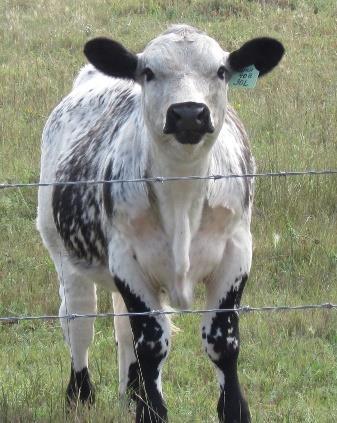
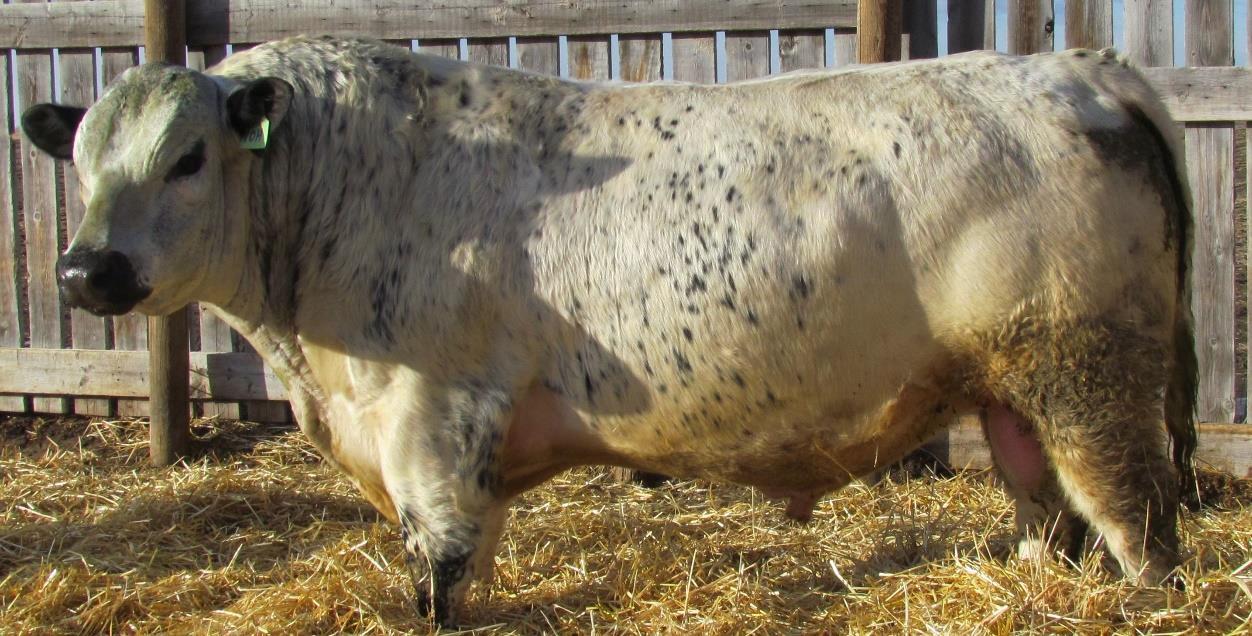

Lee & Layne Gleim Taber,
